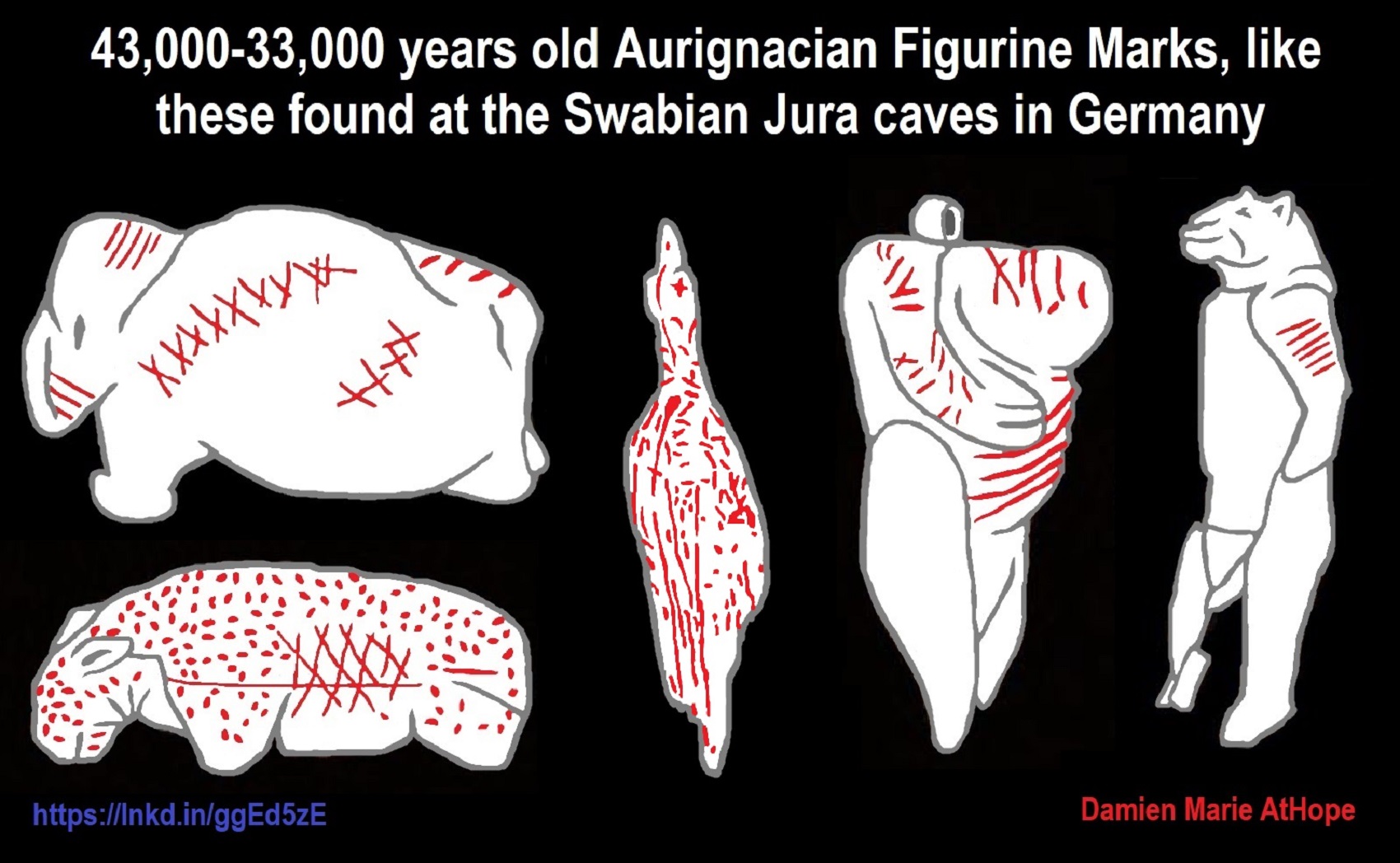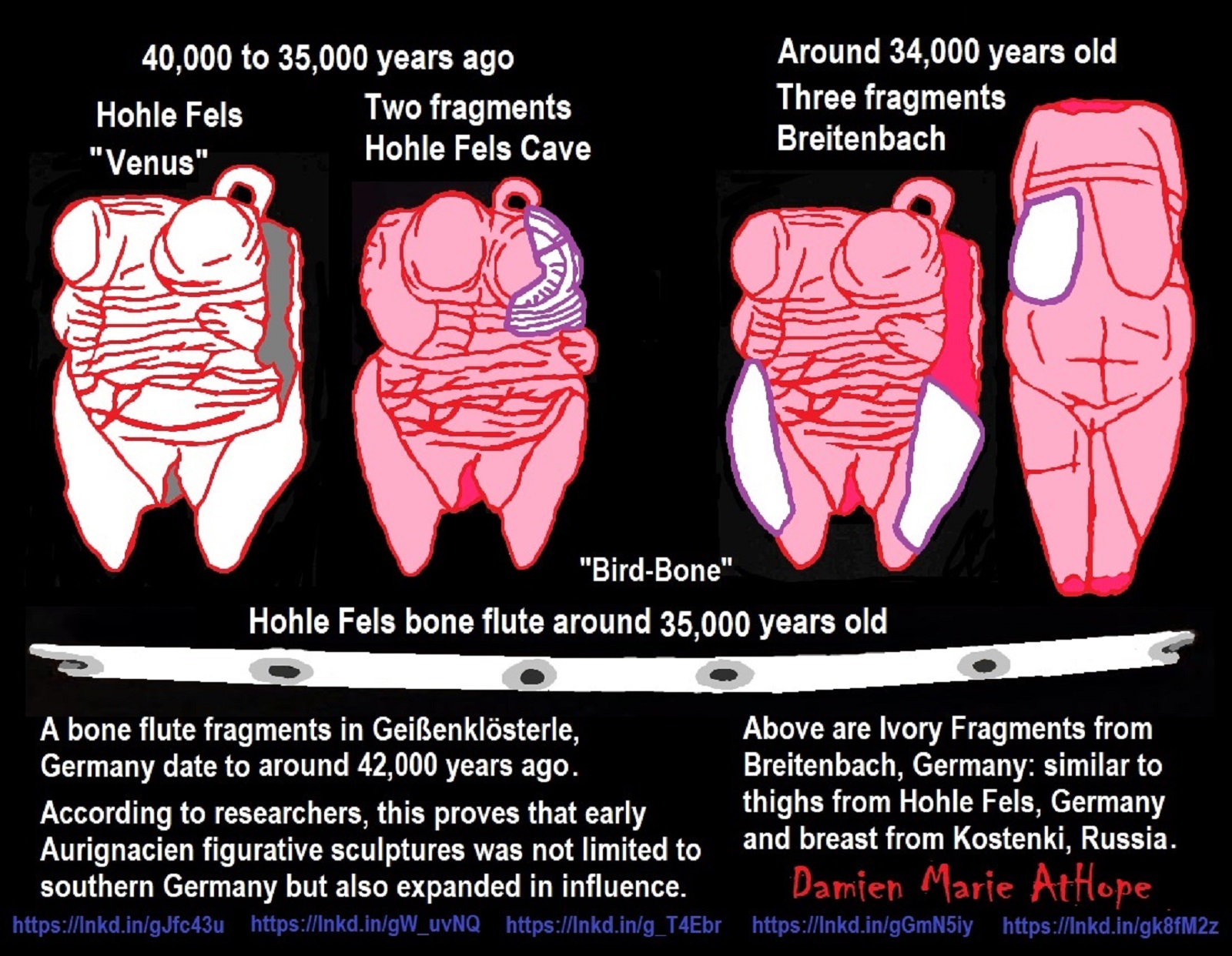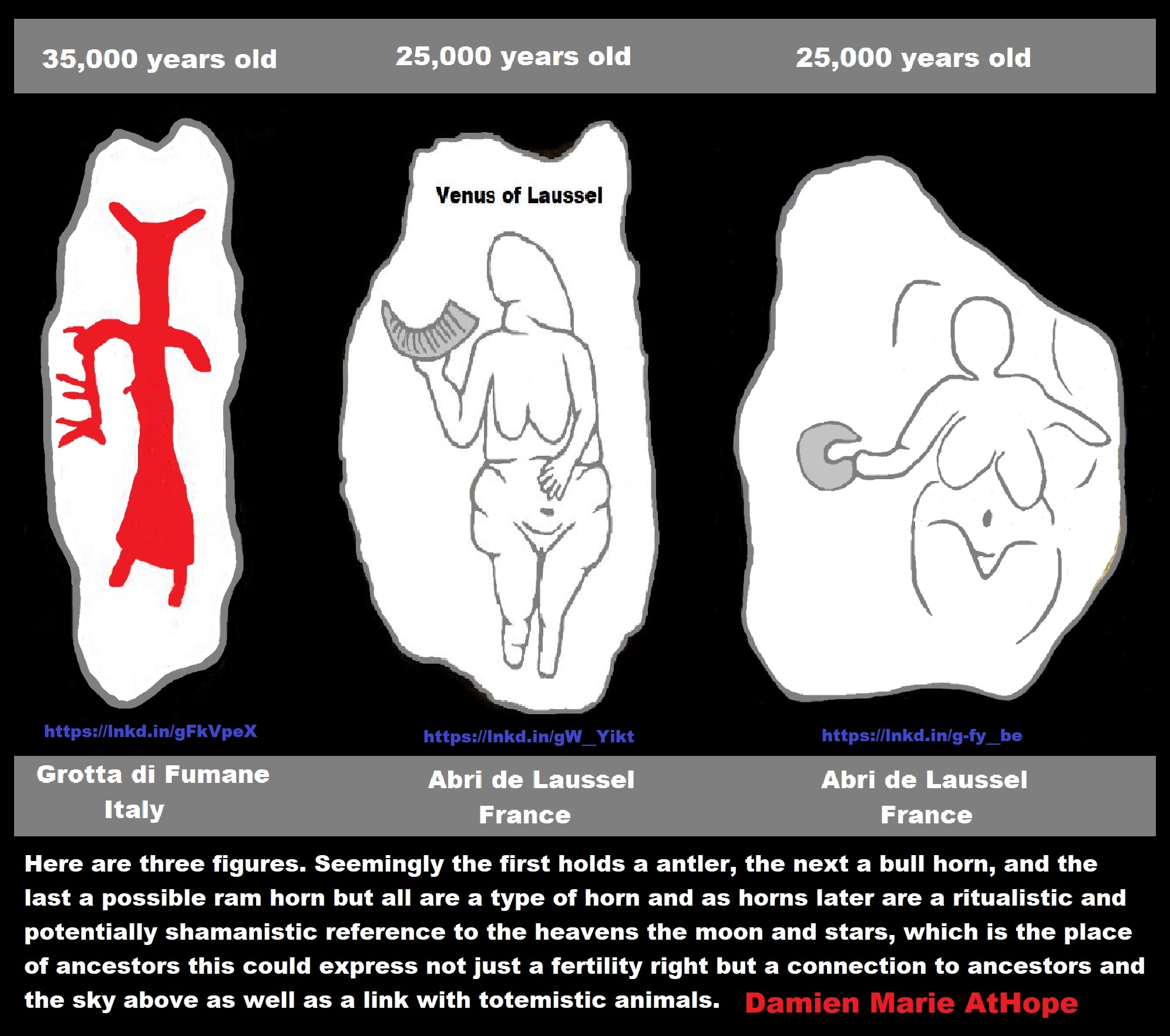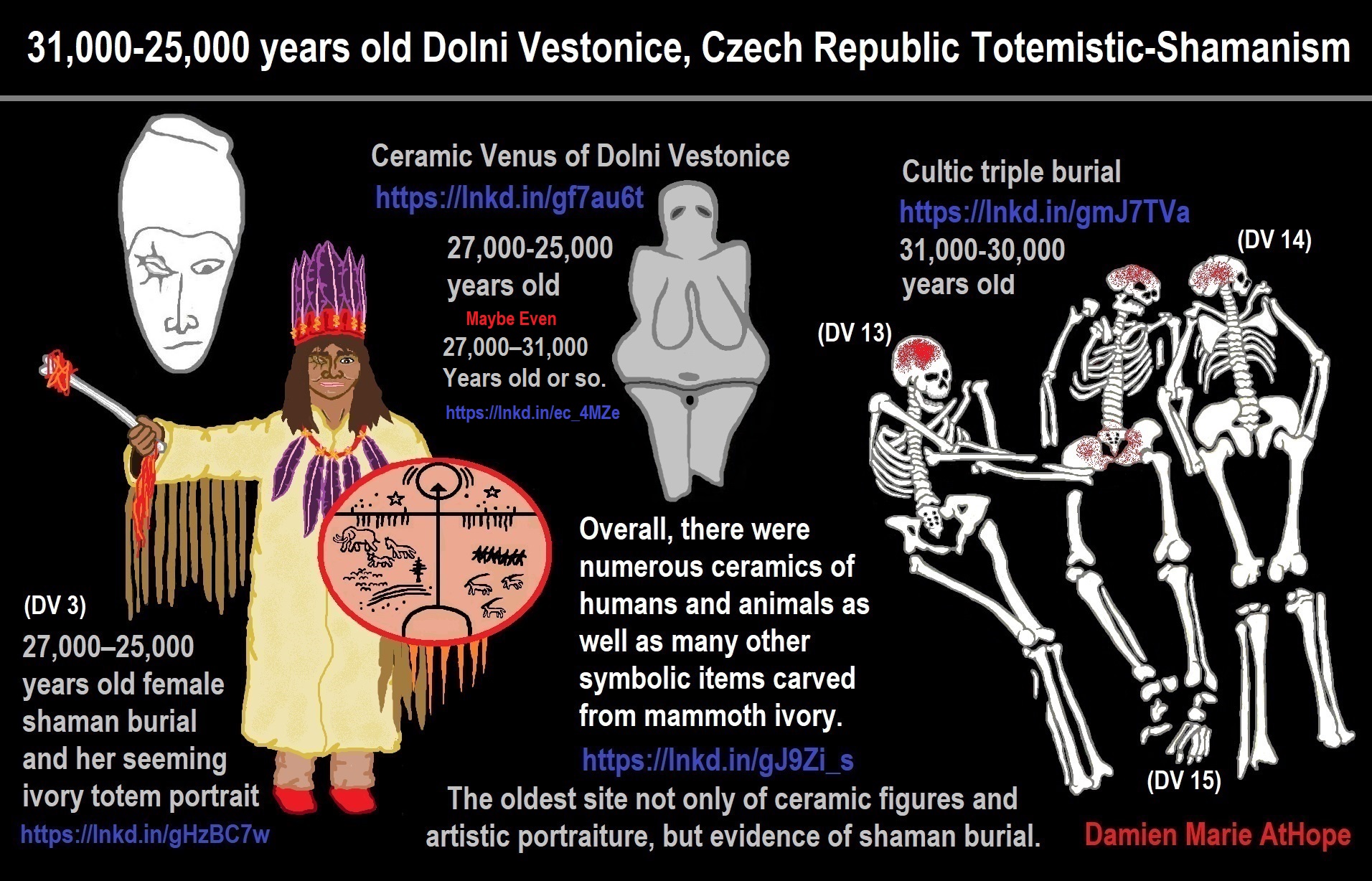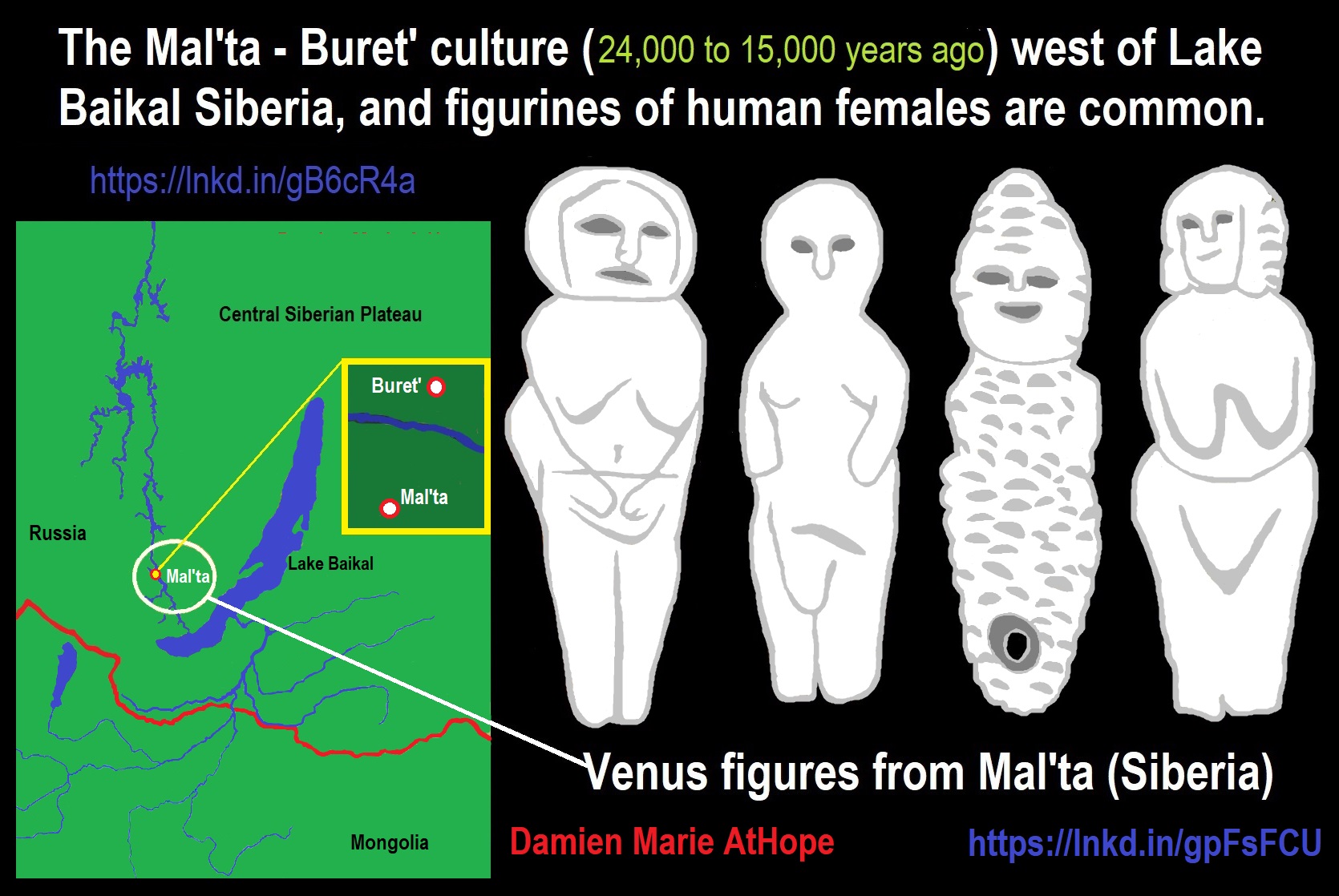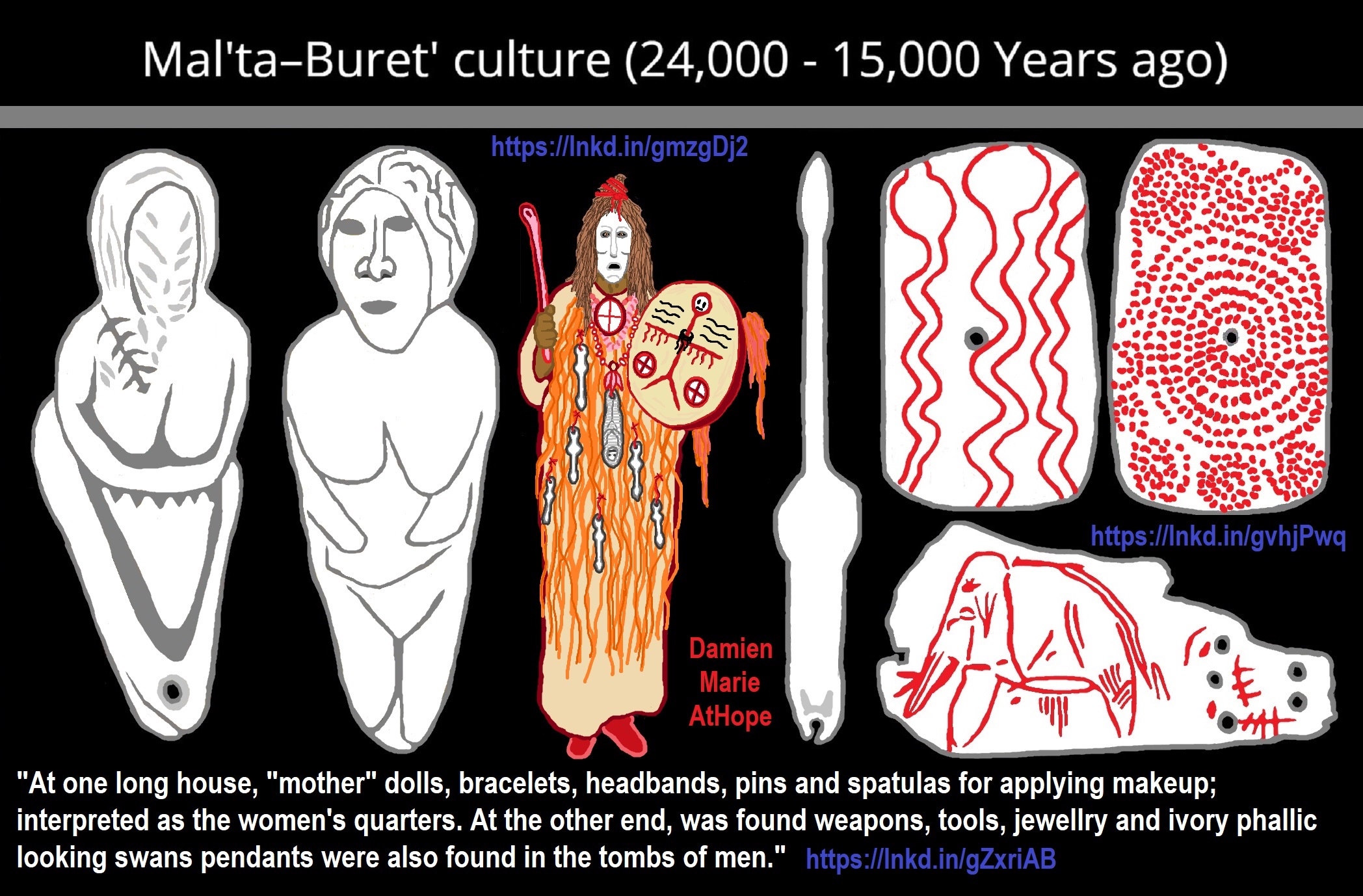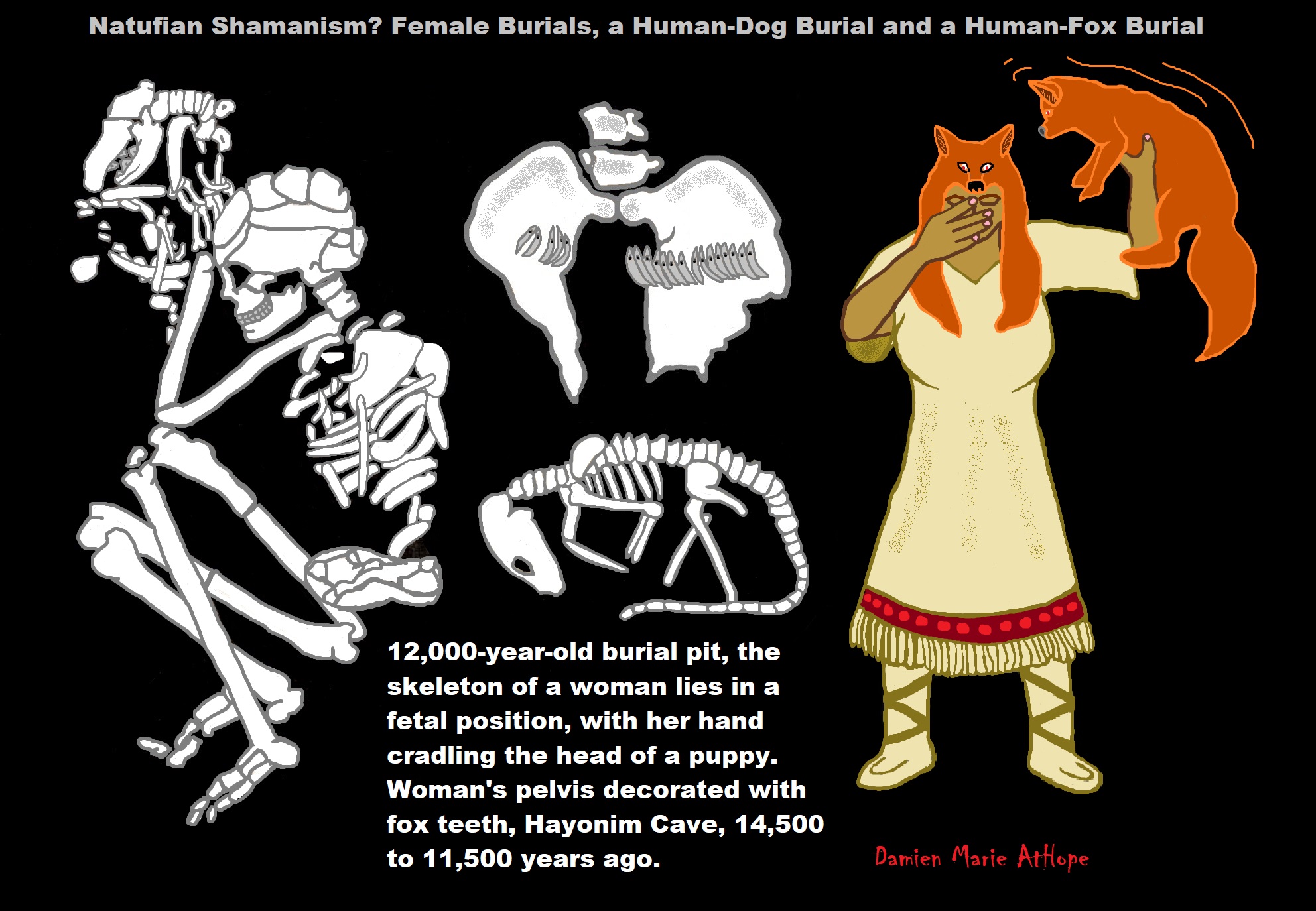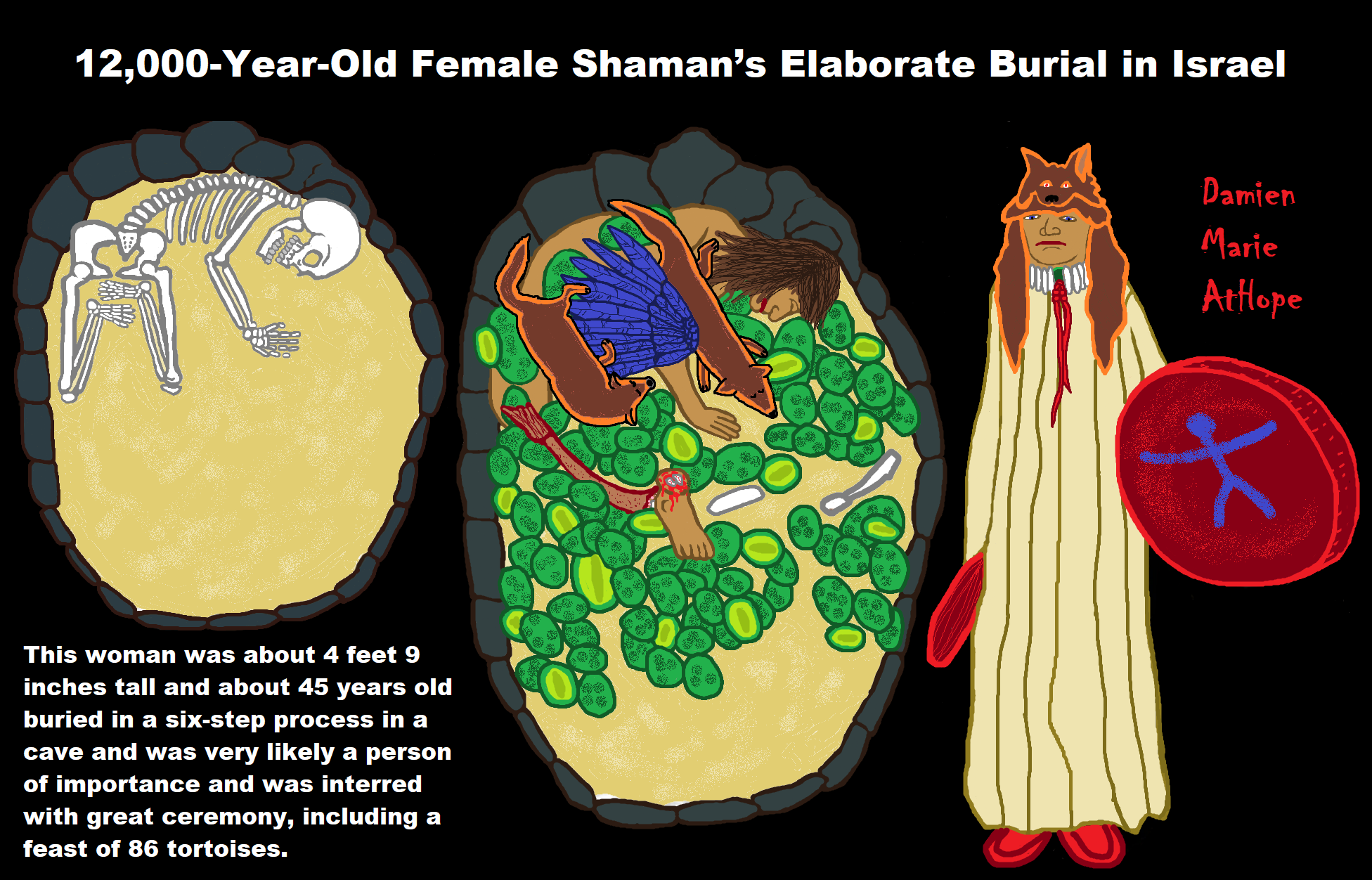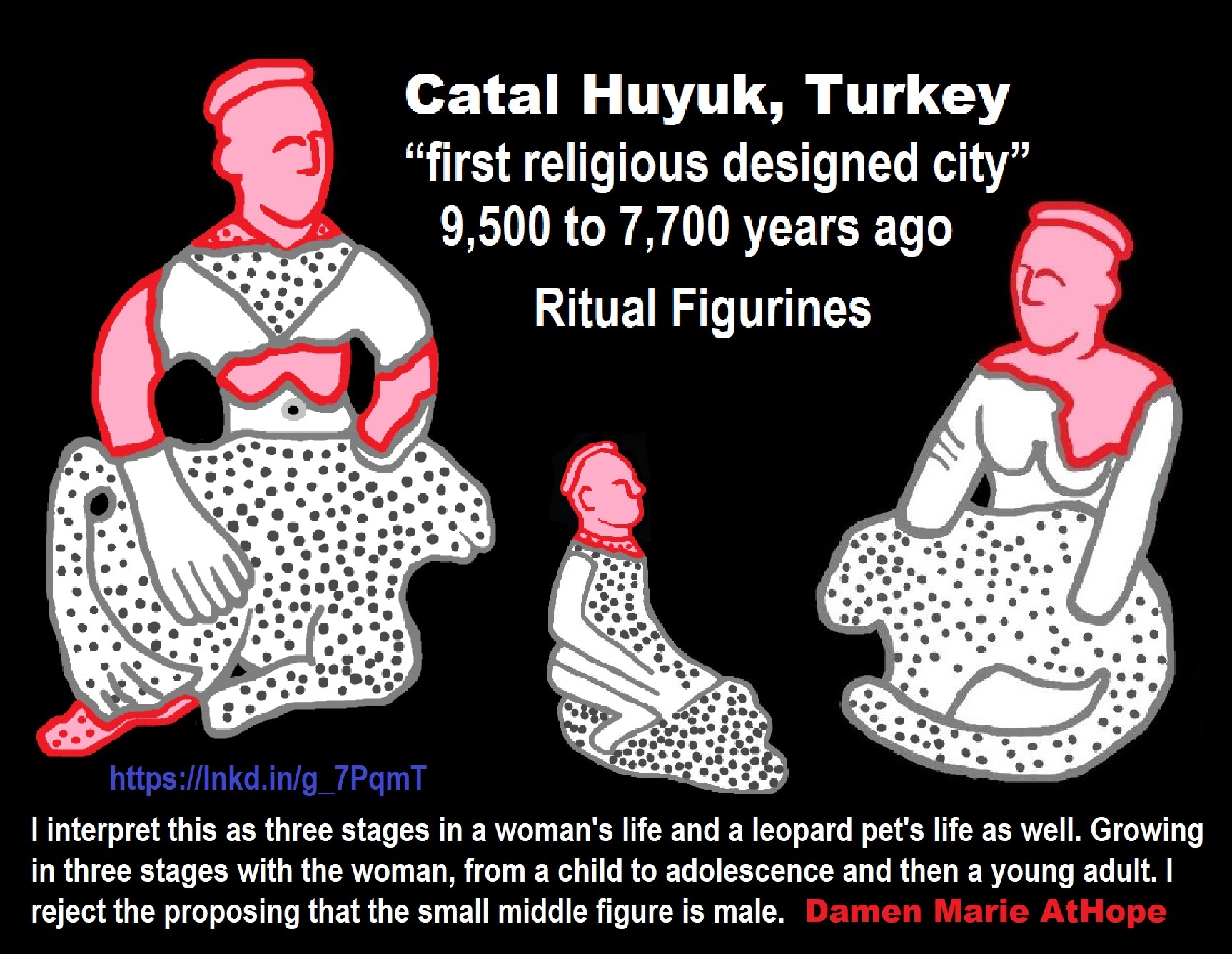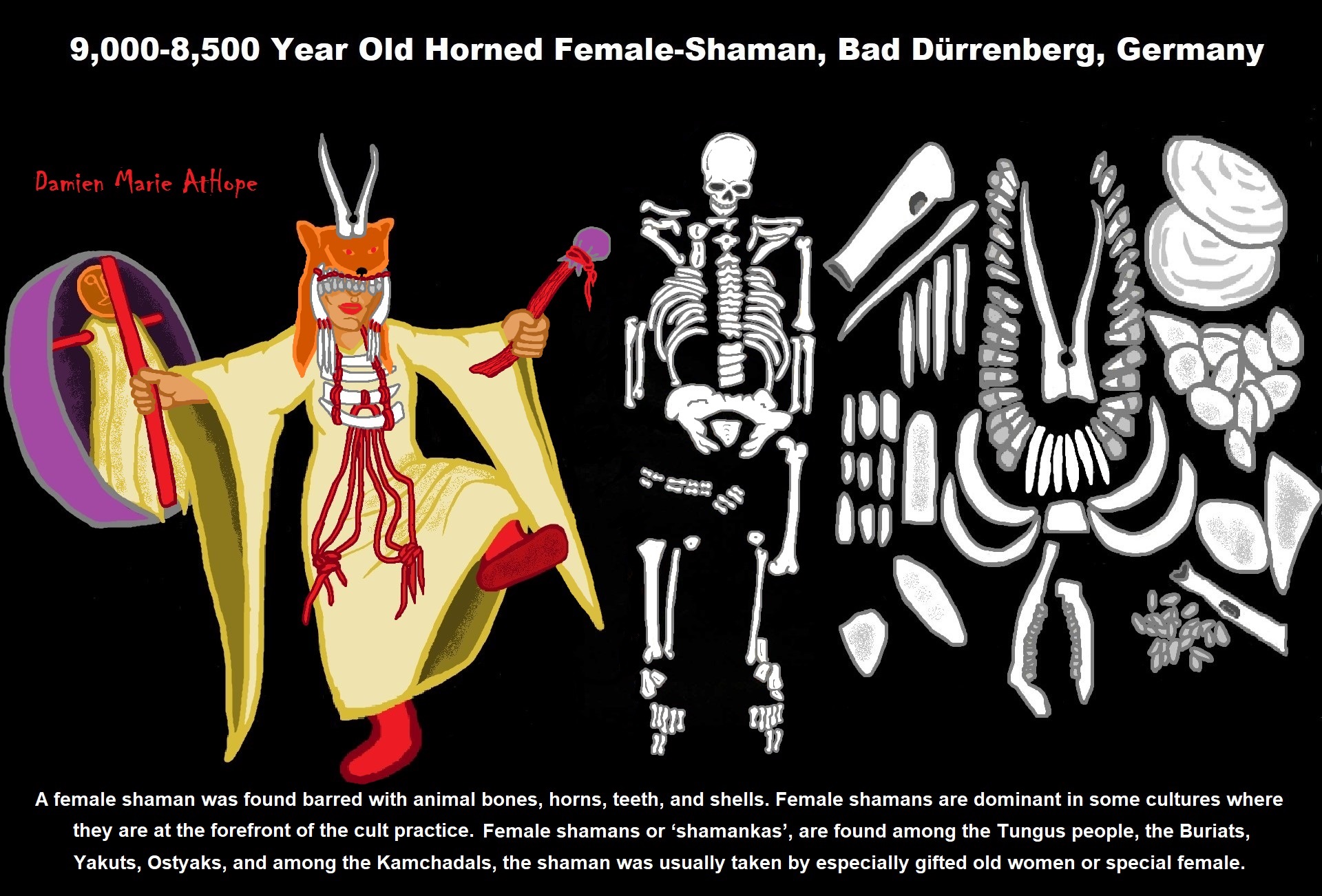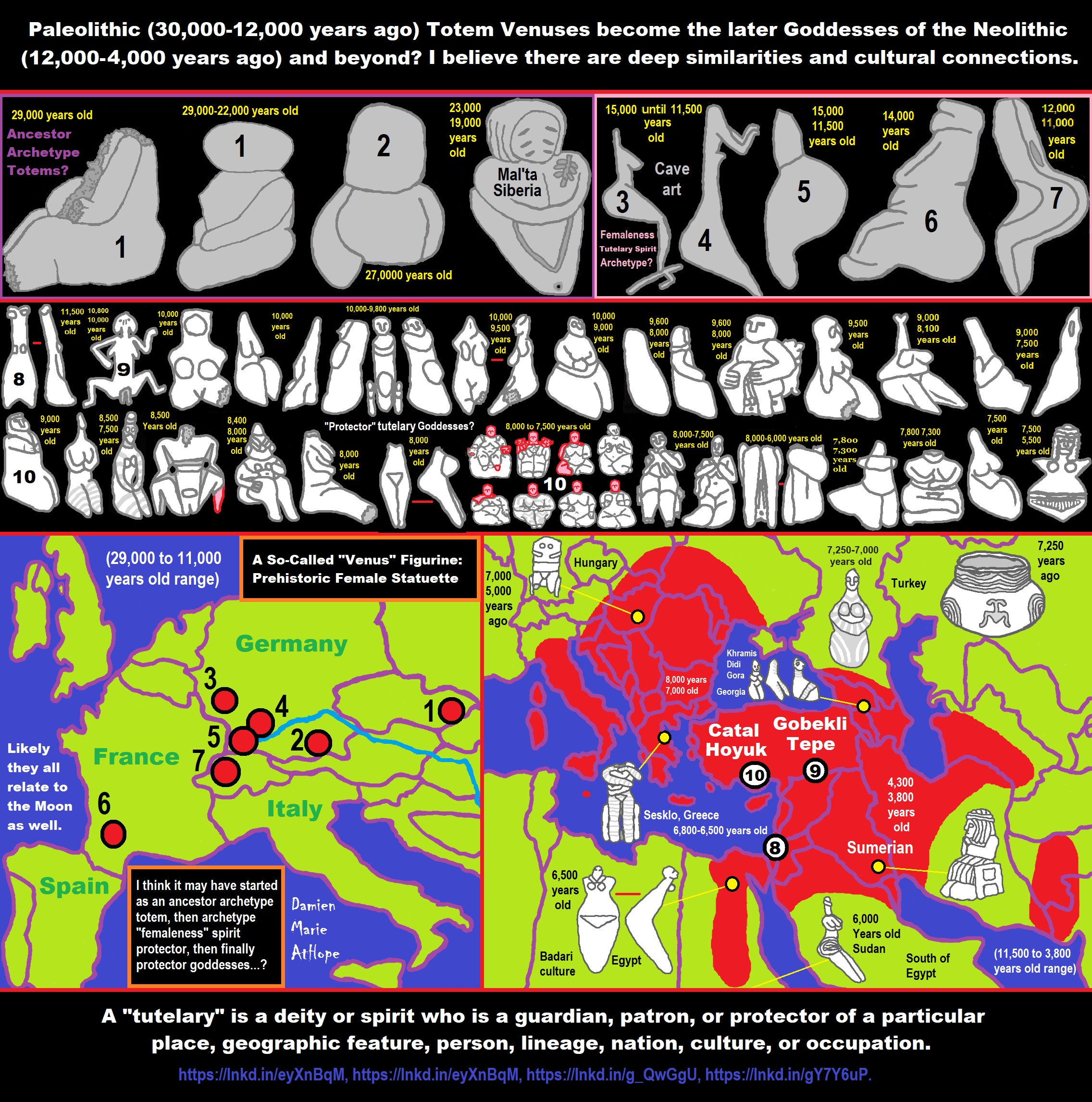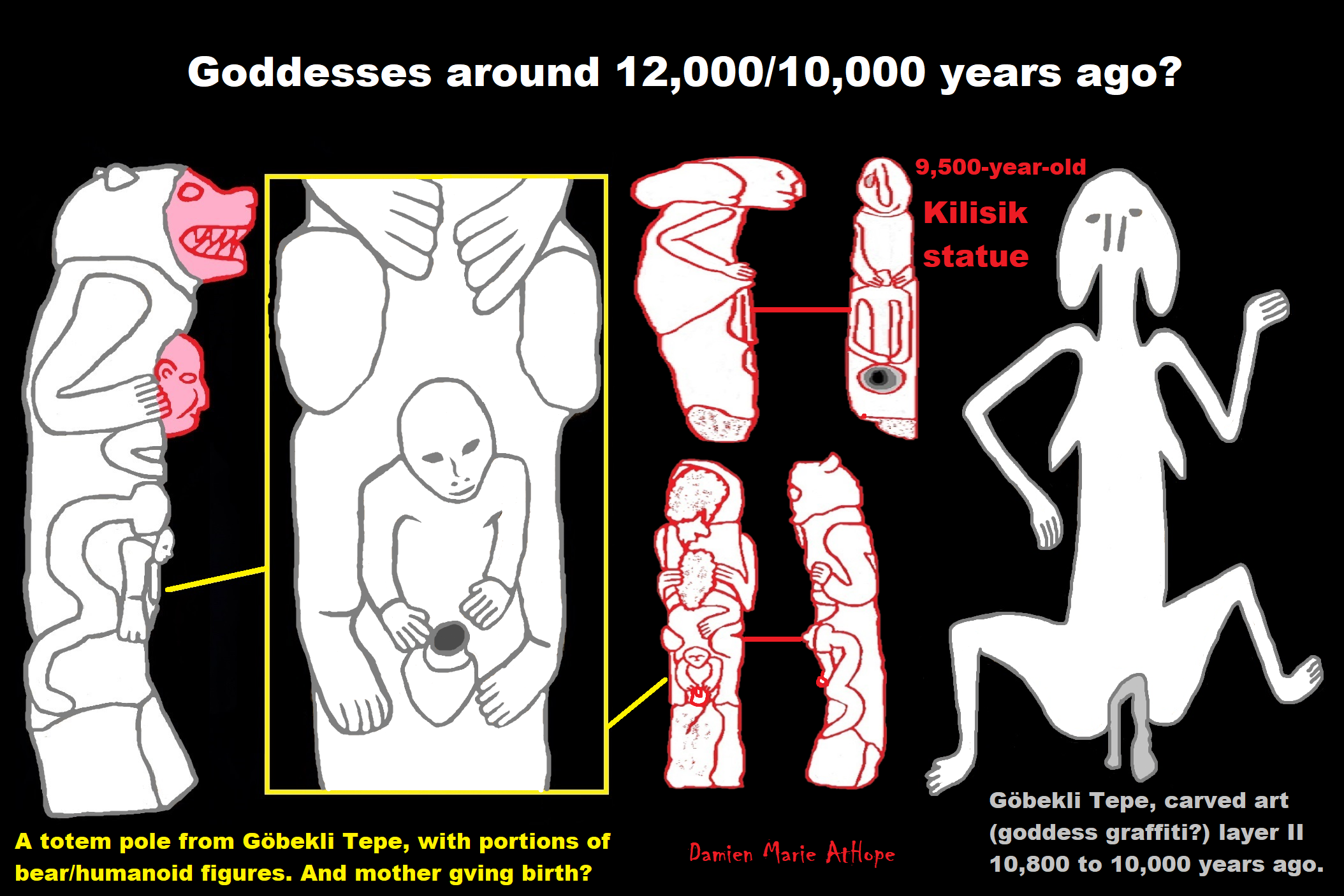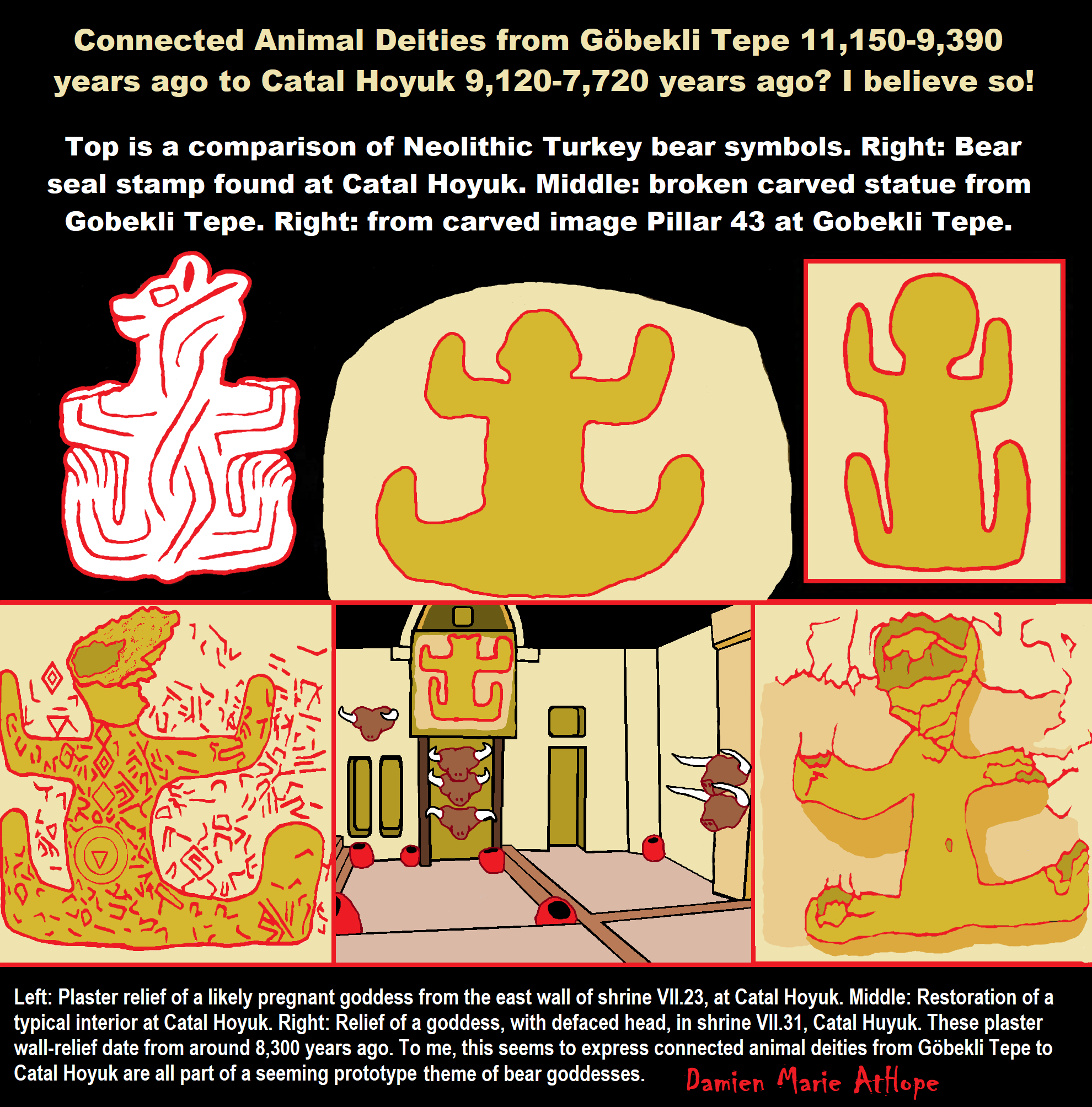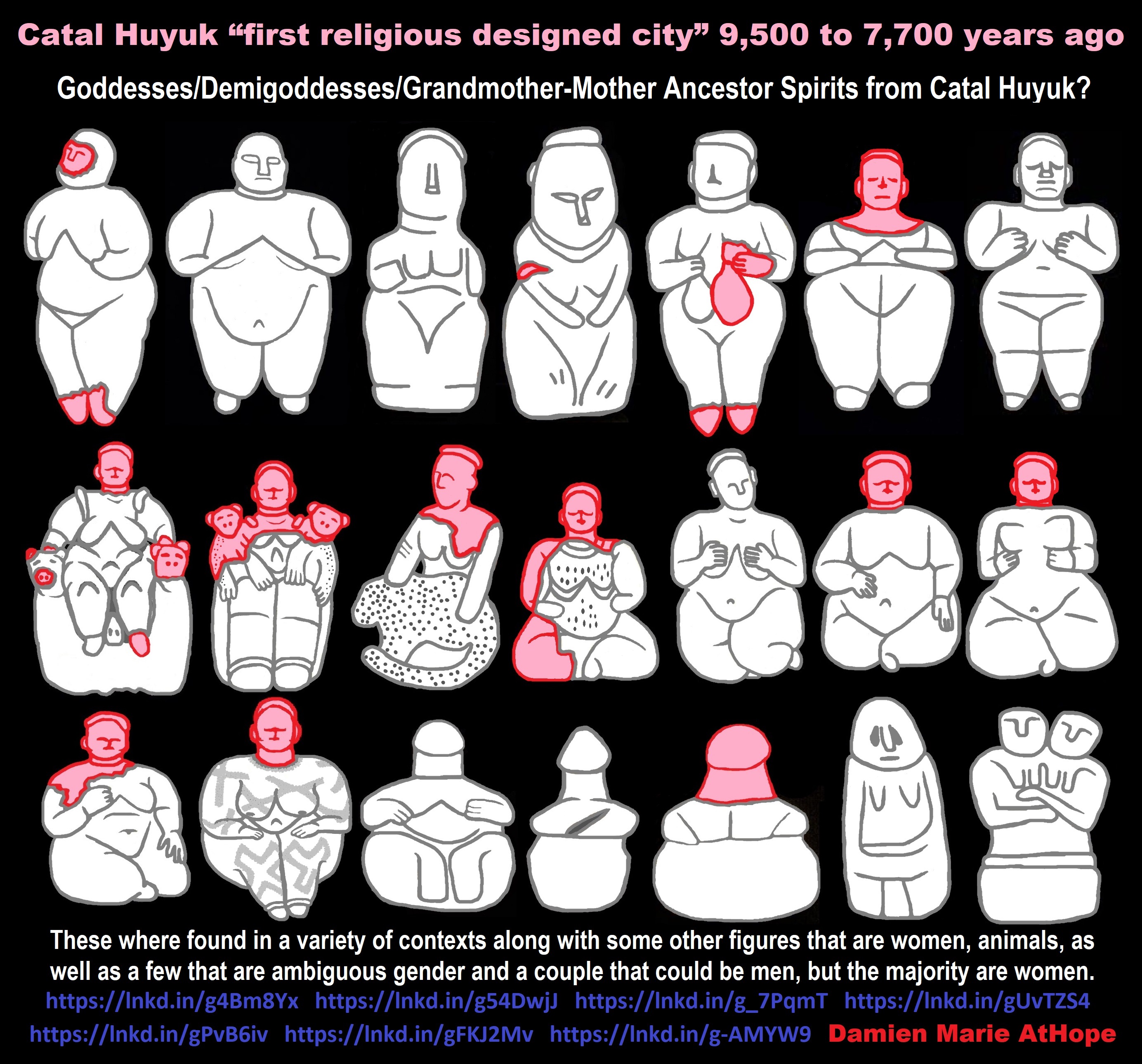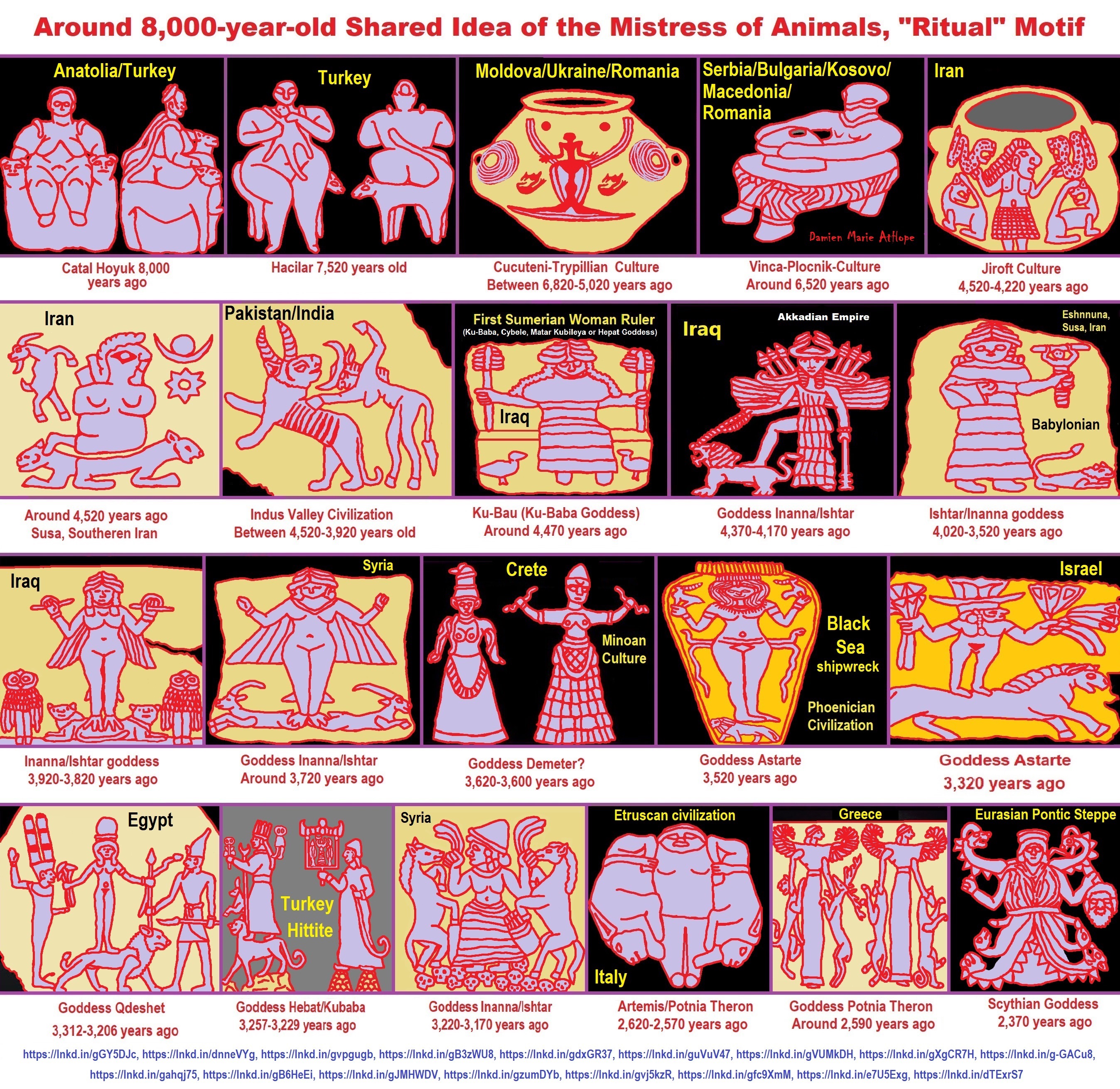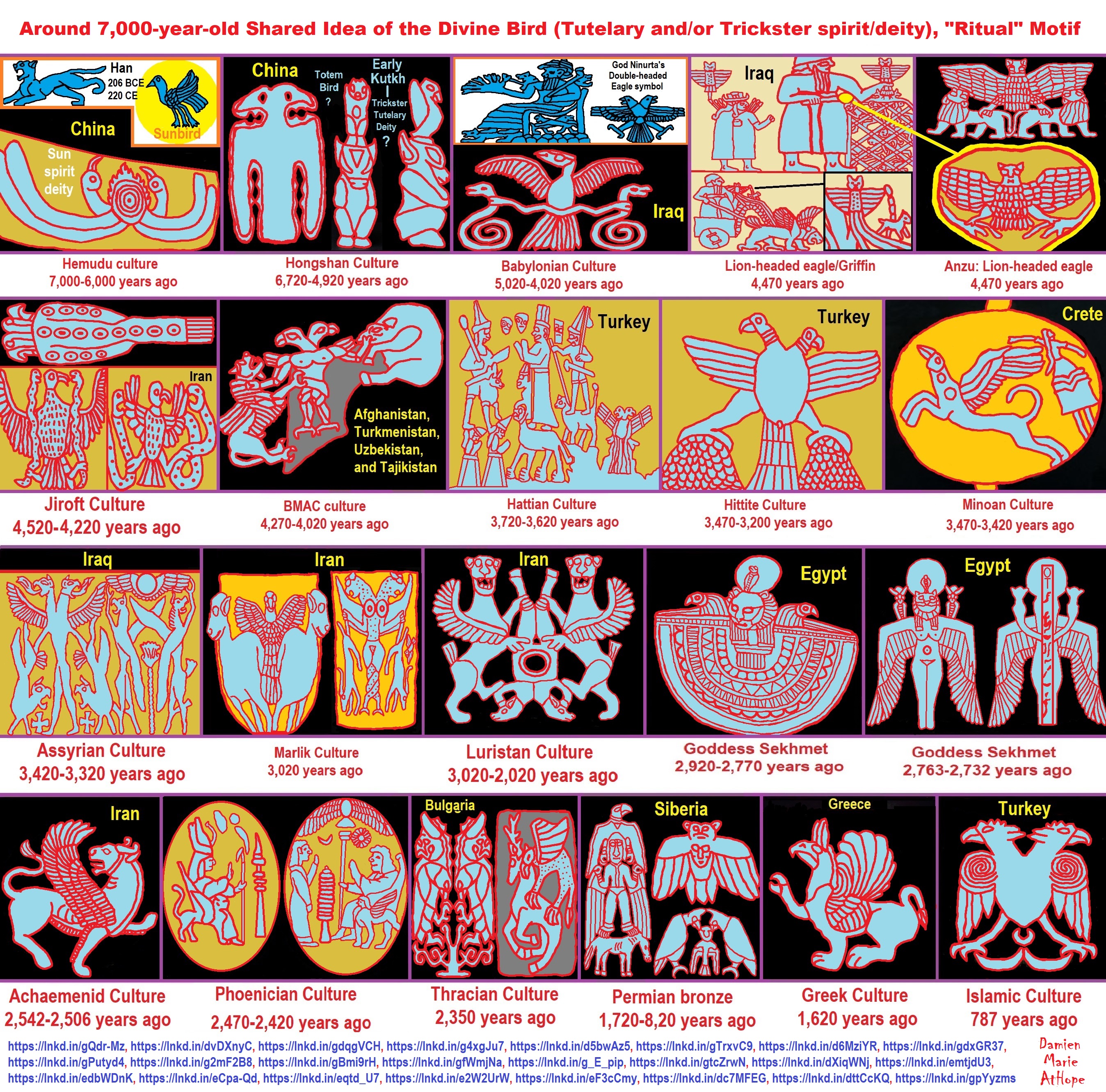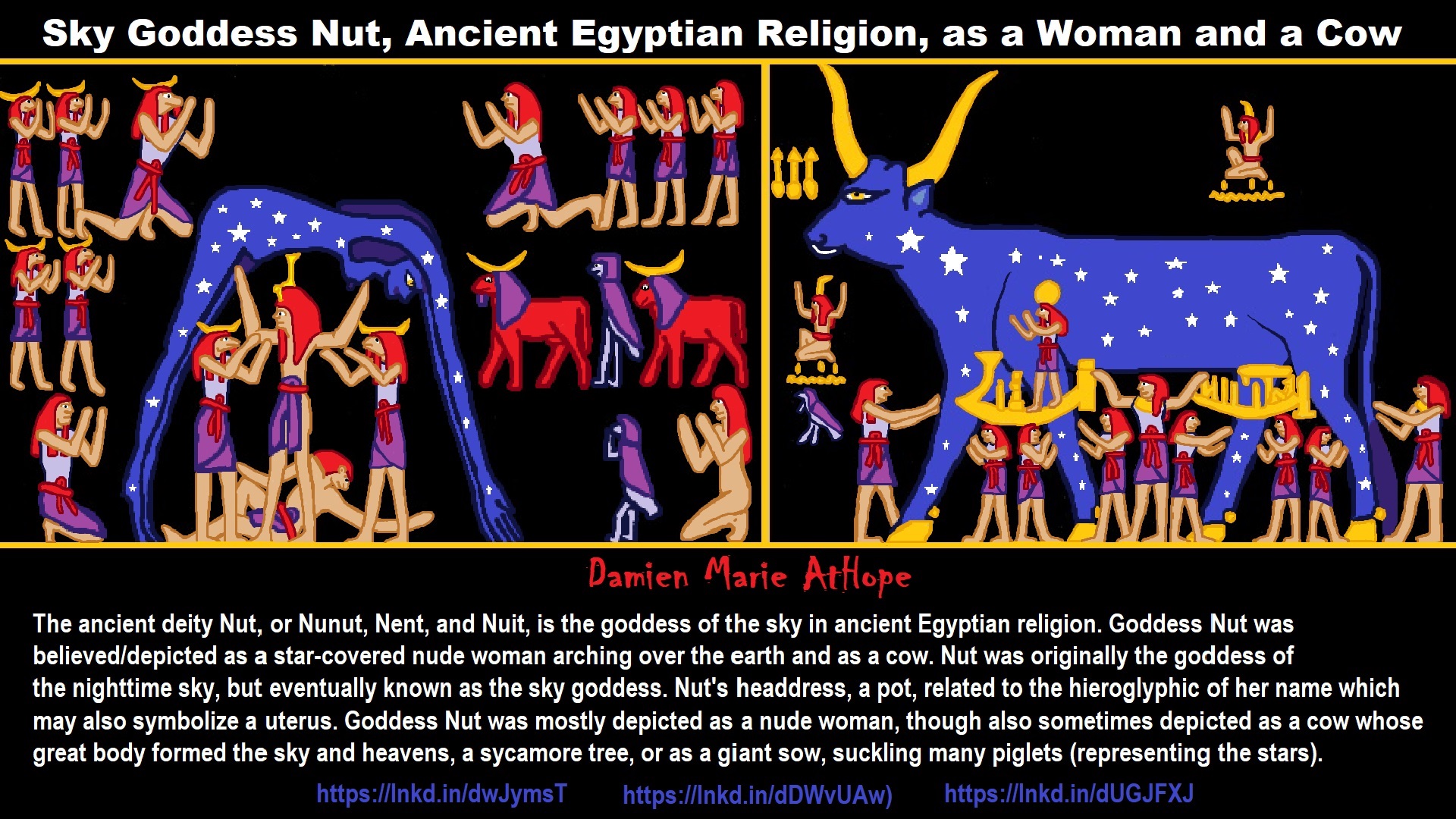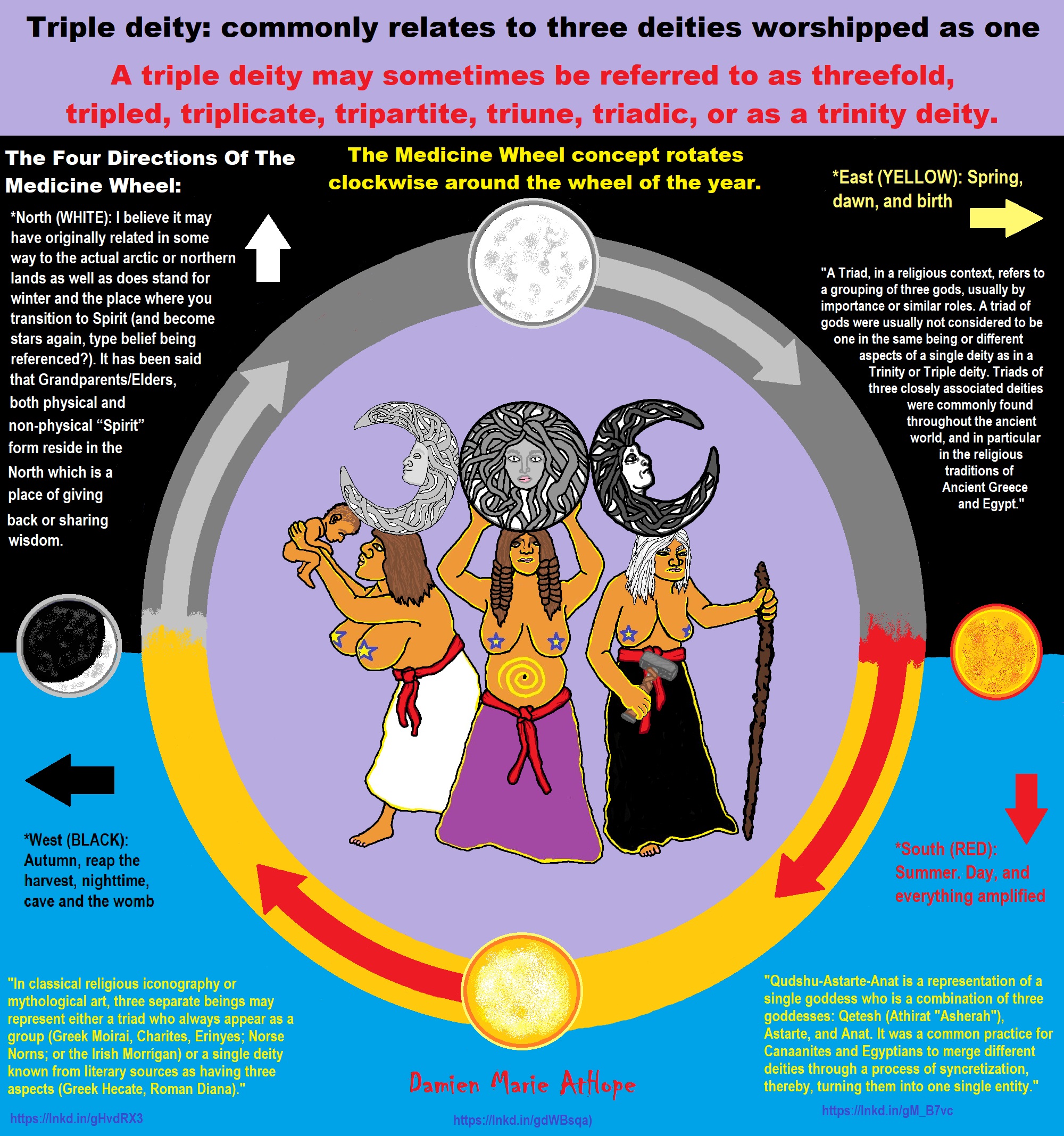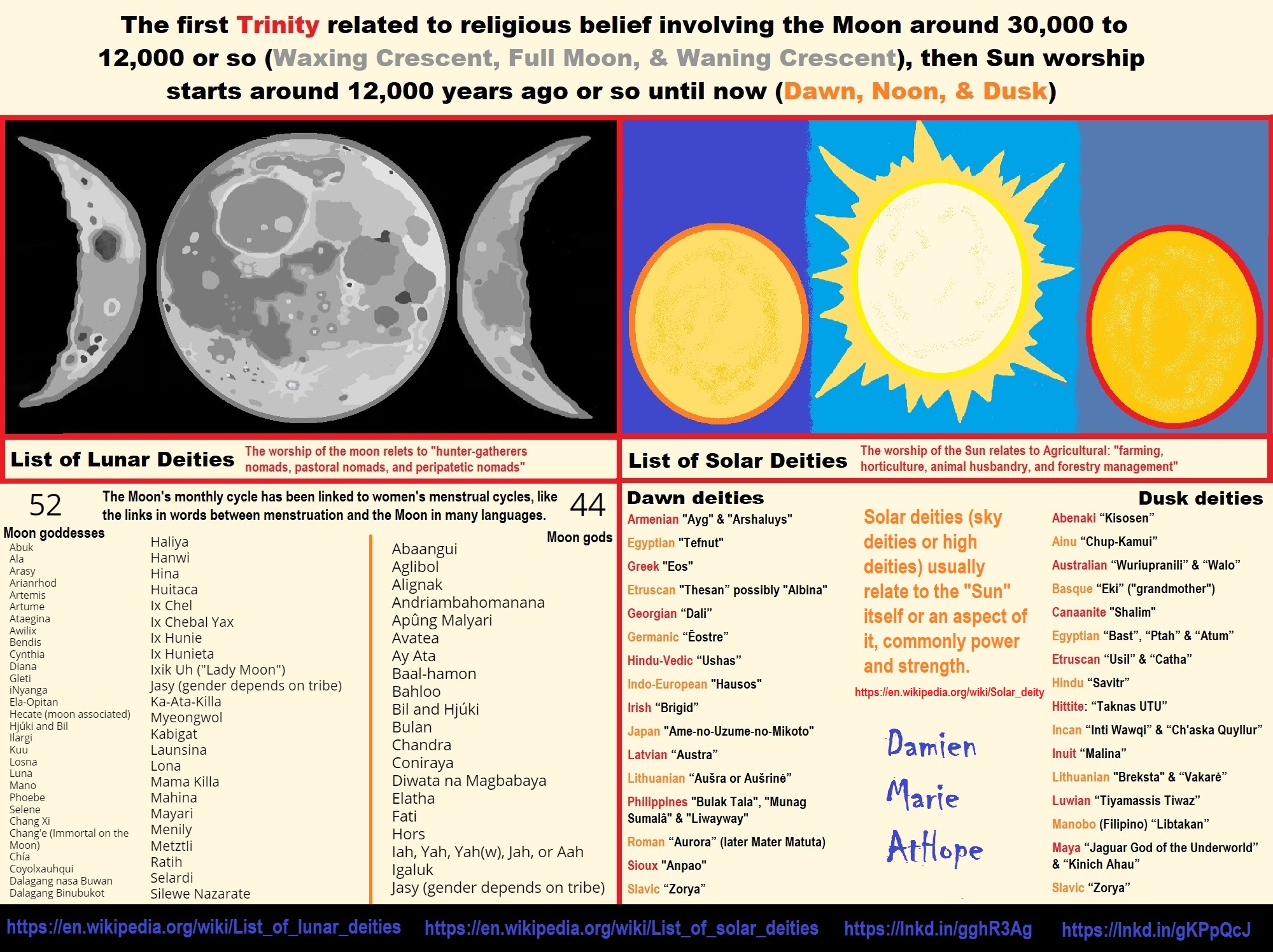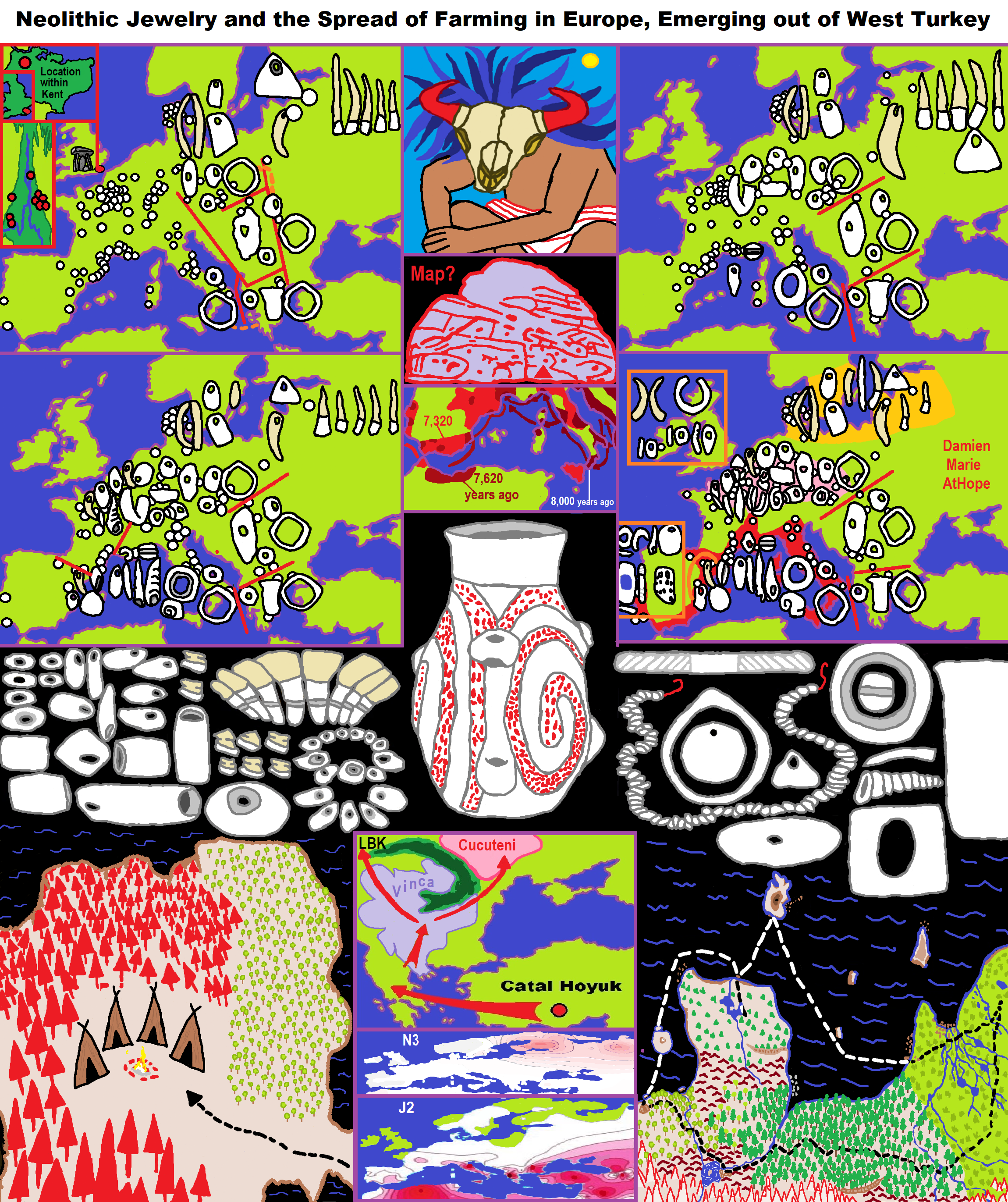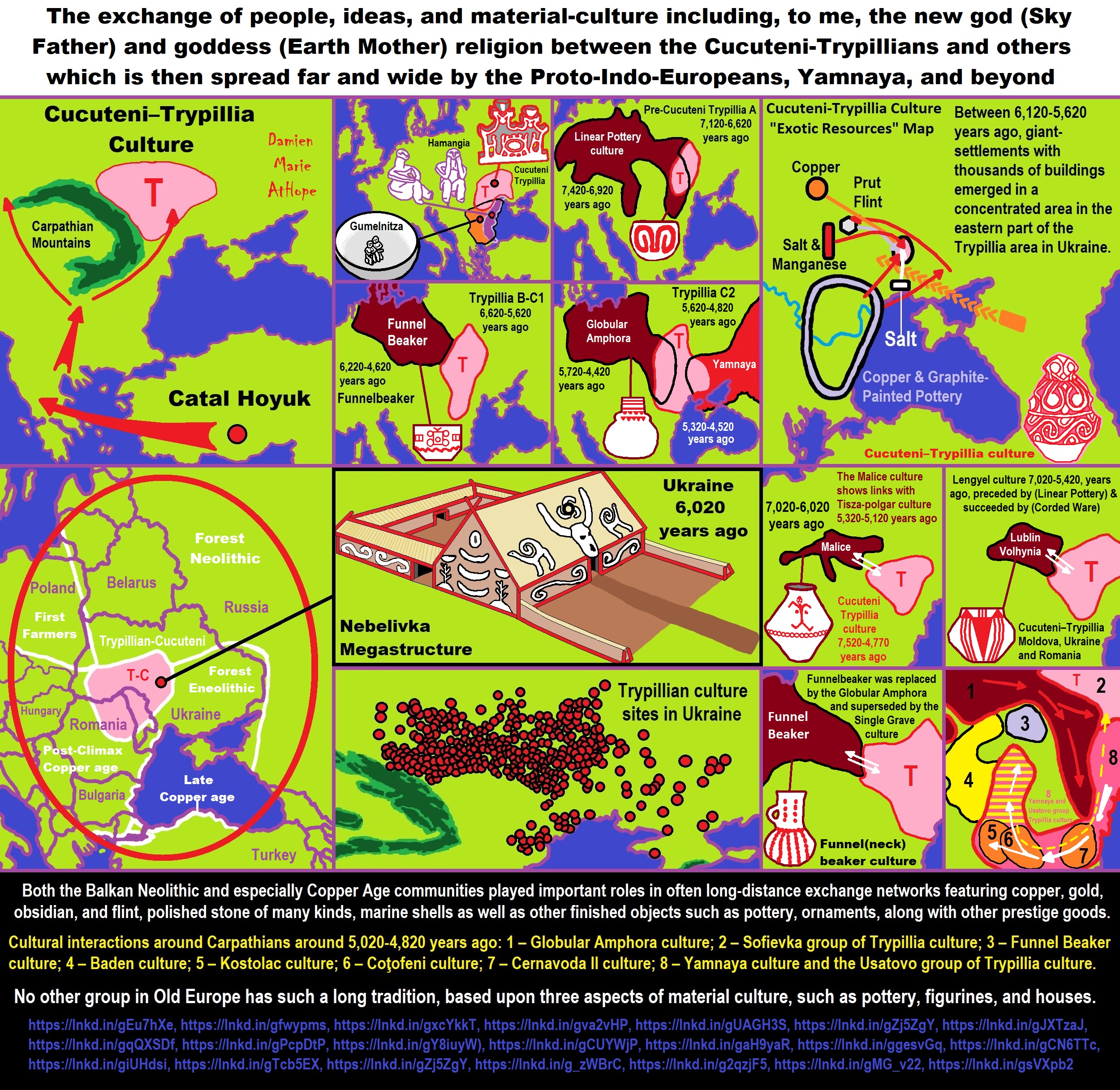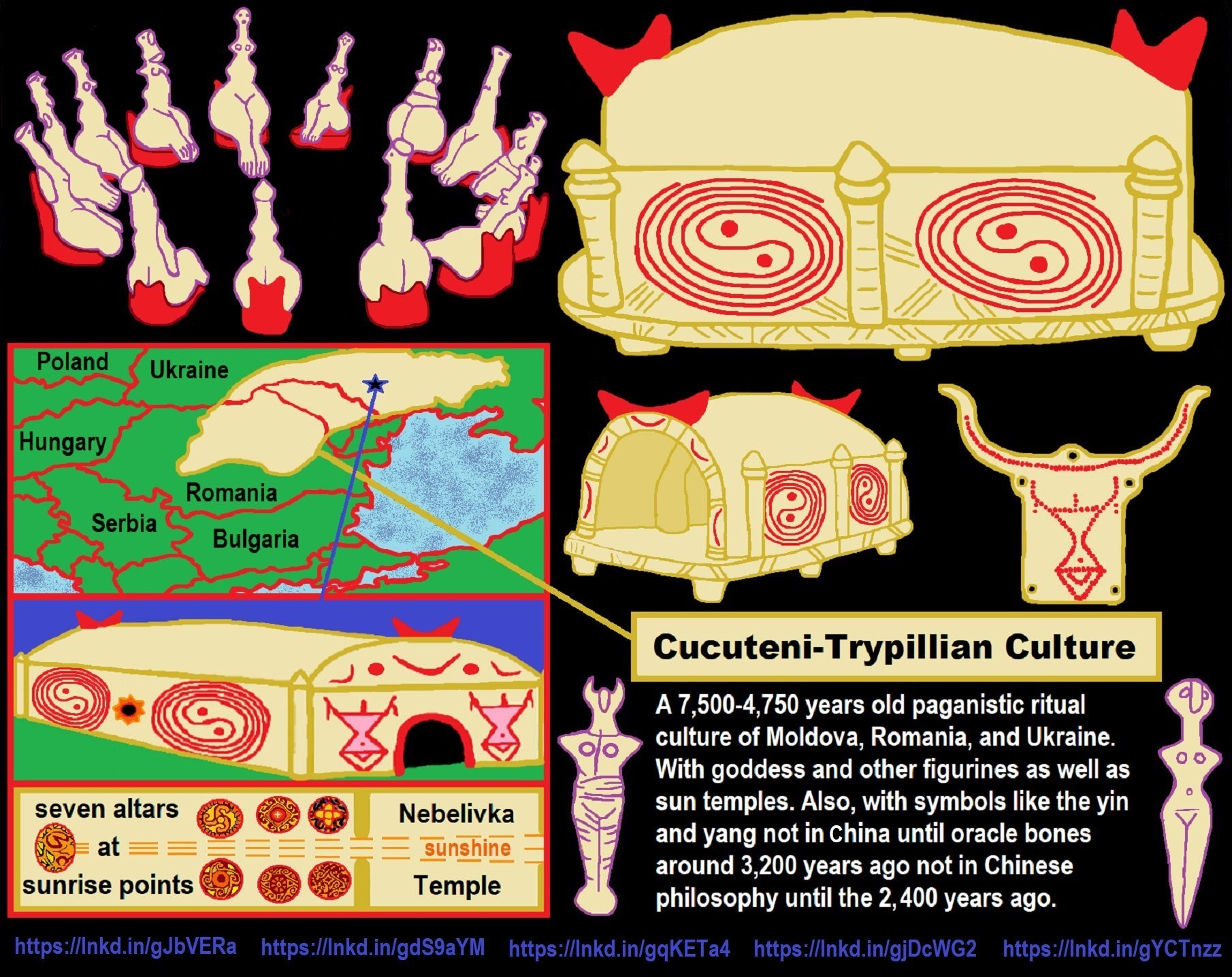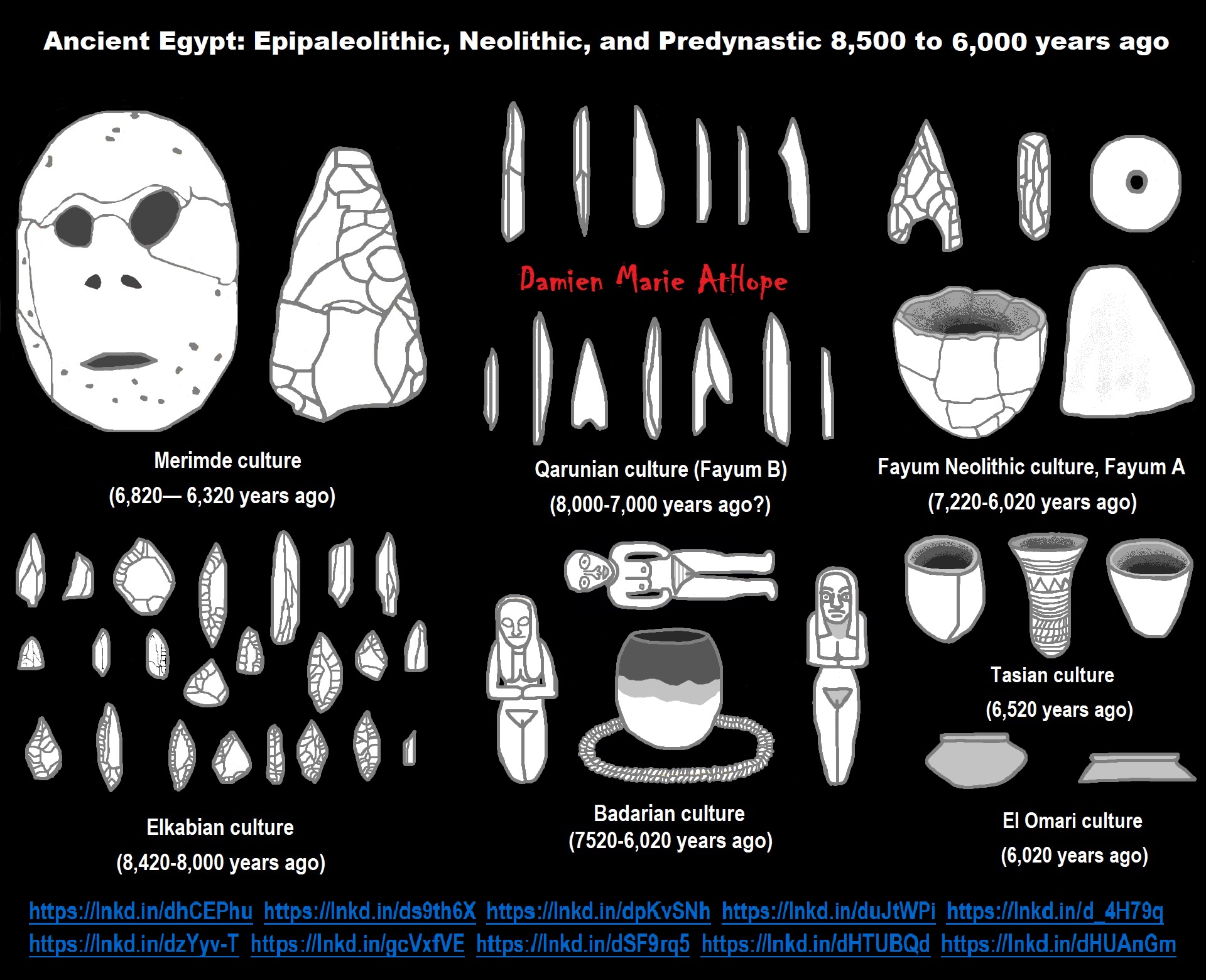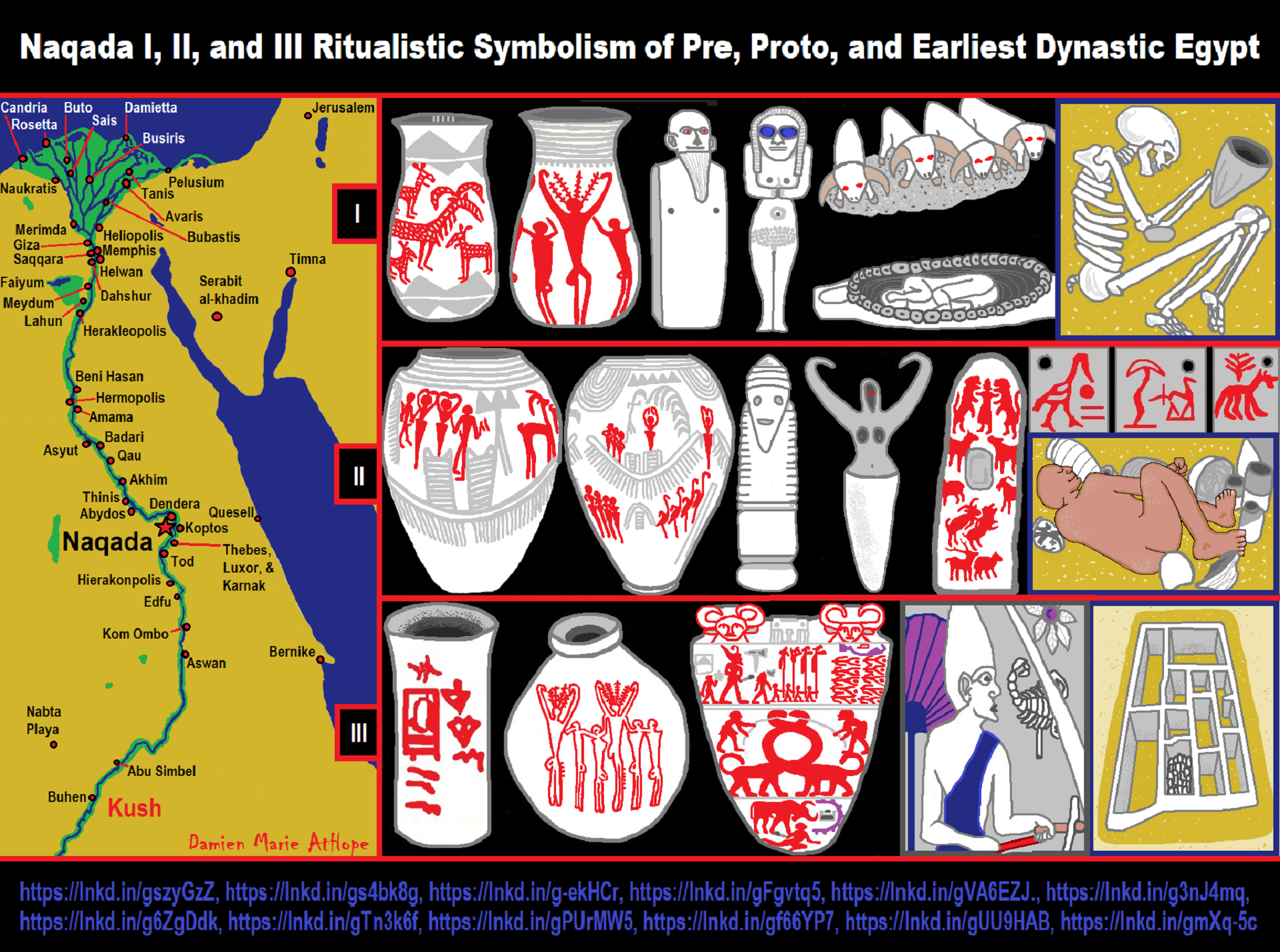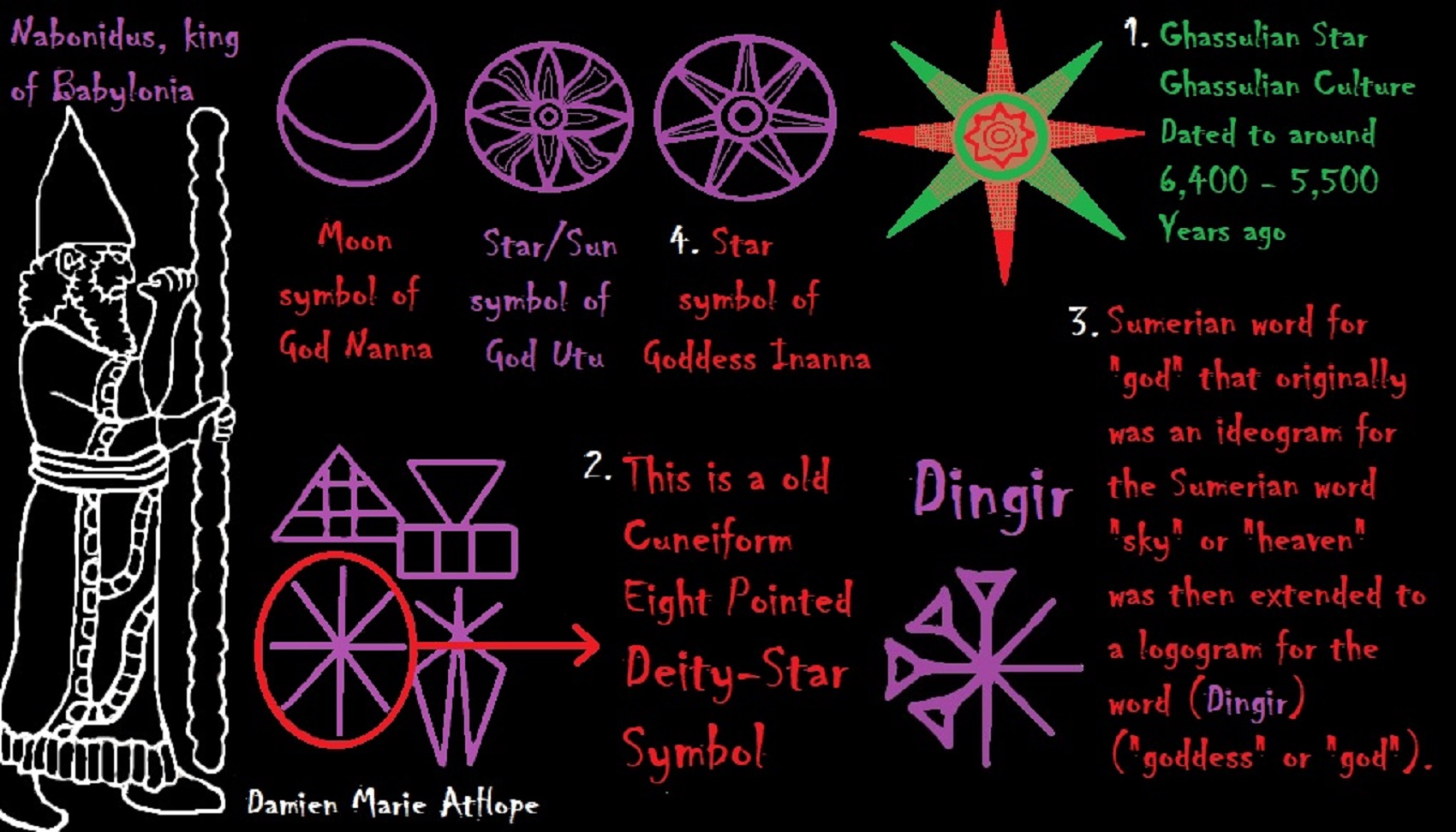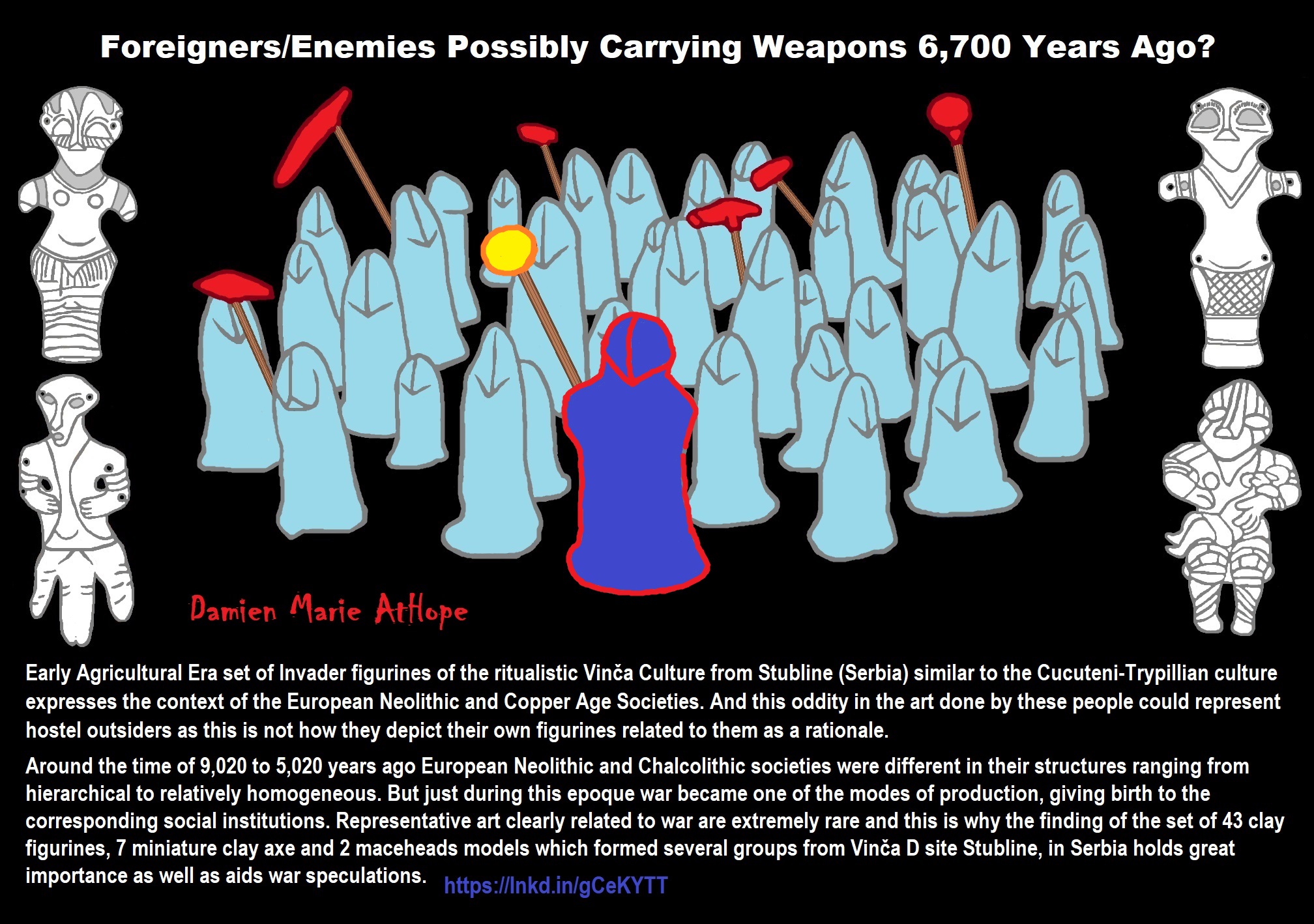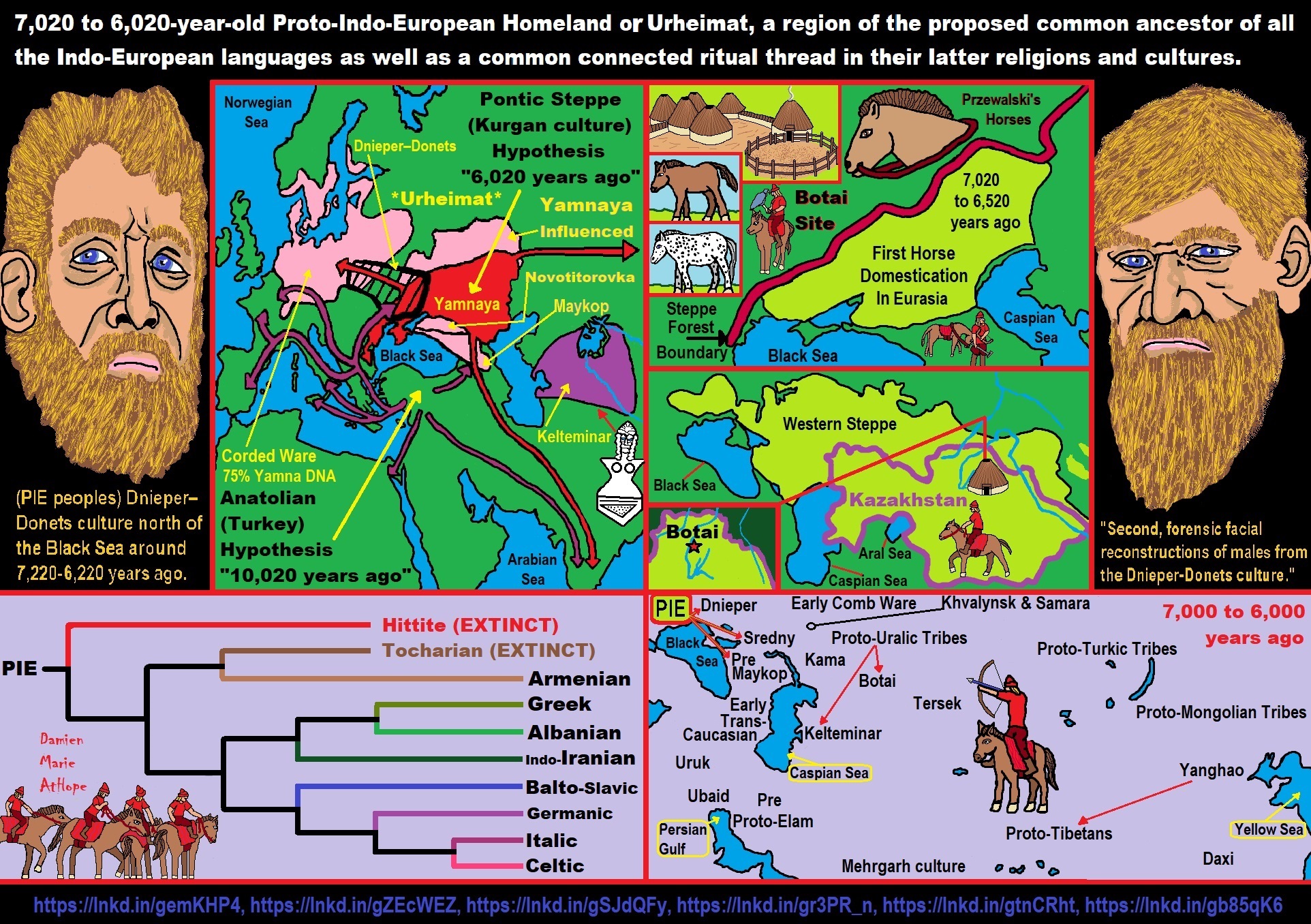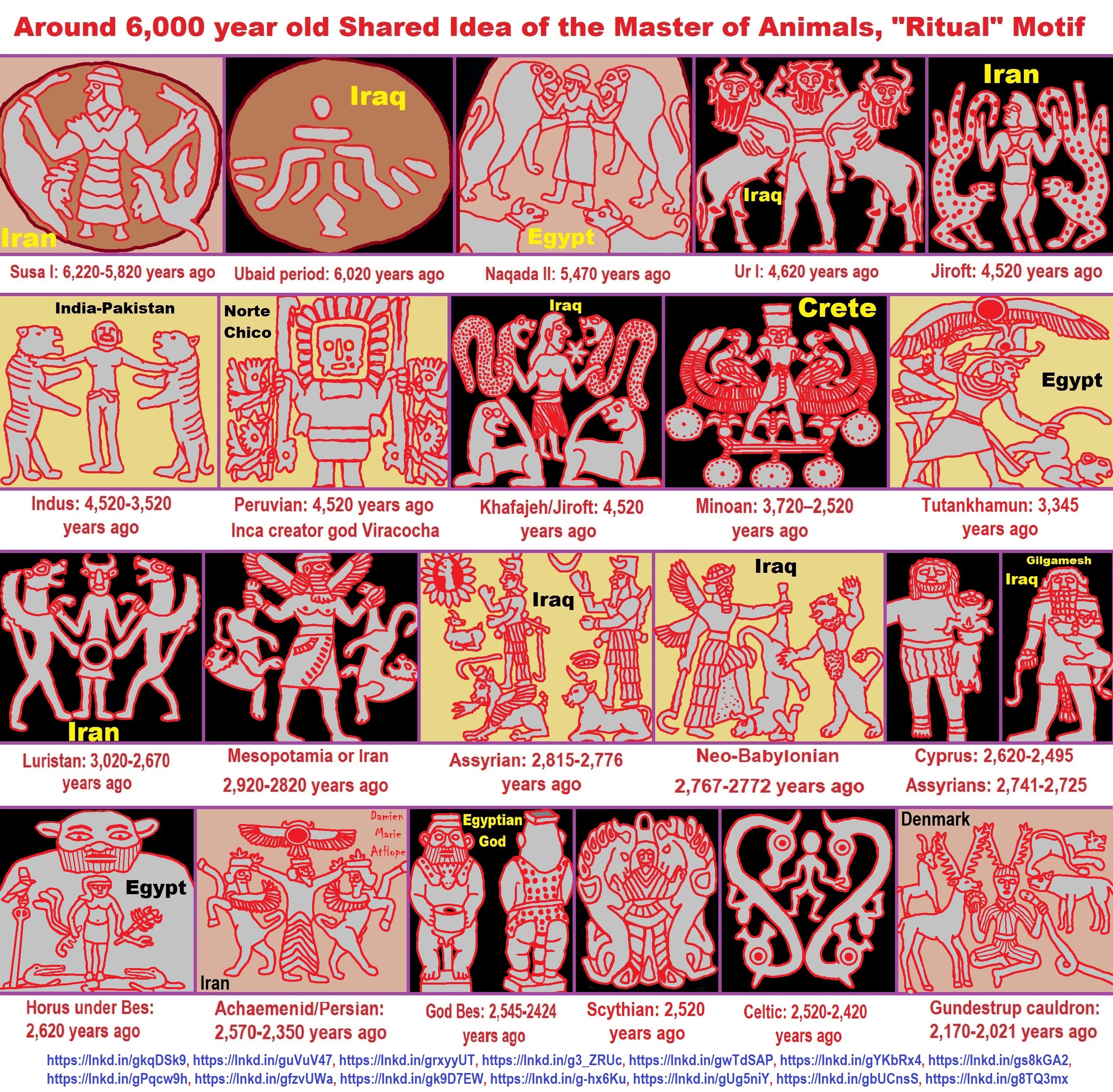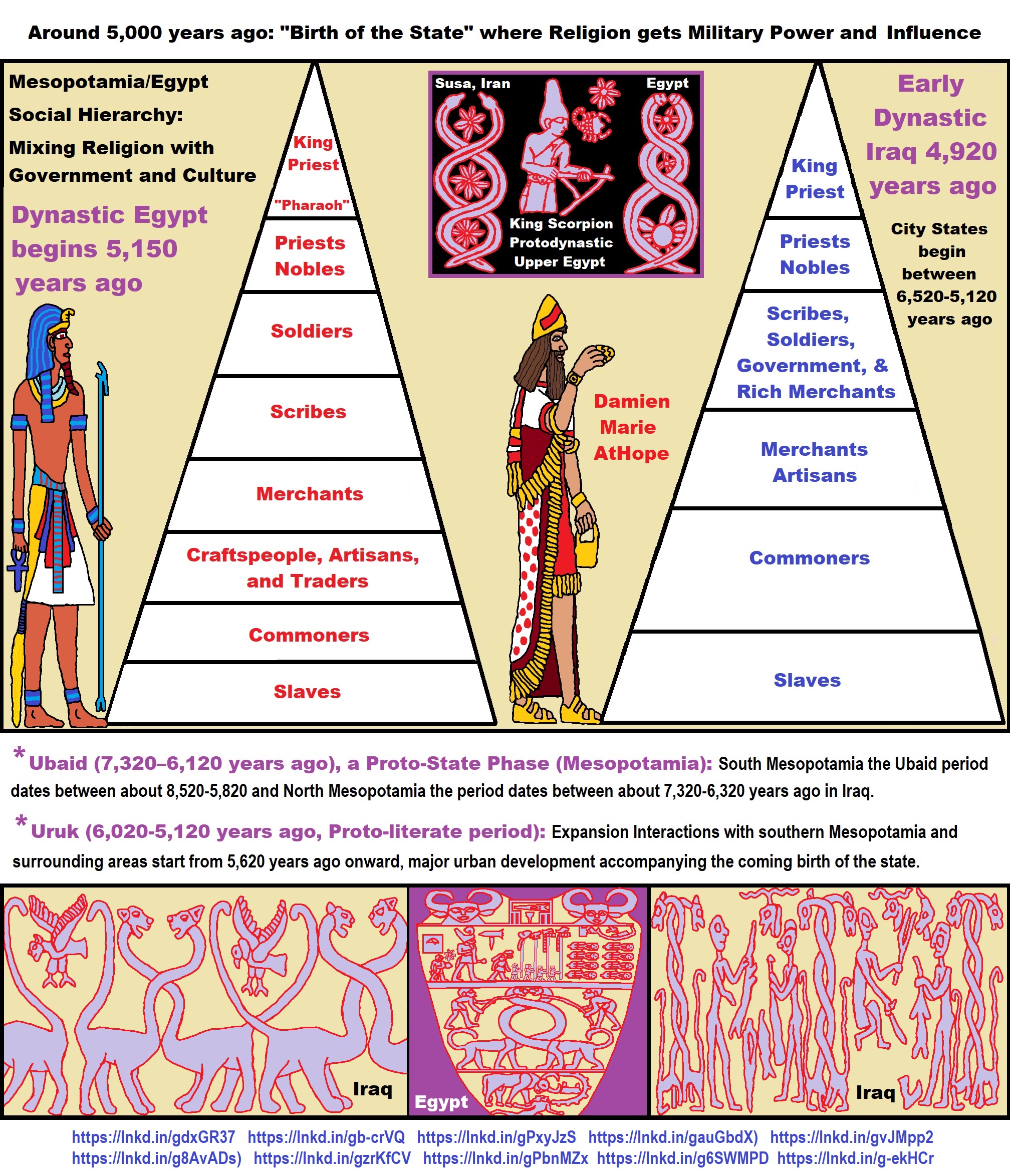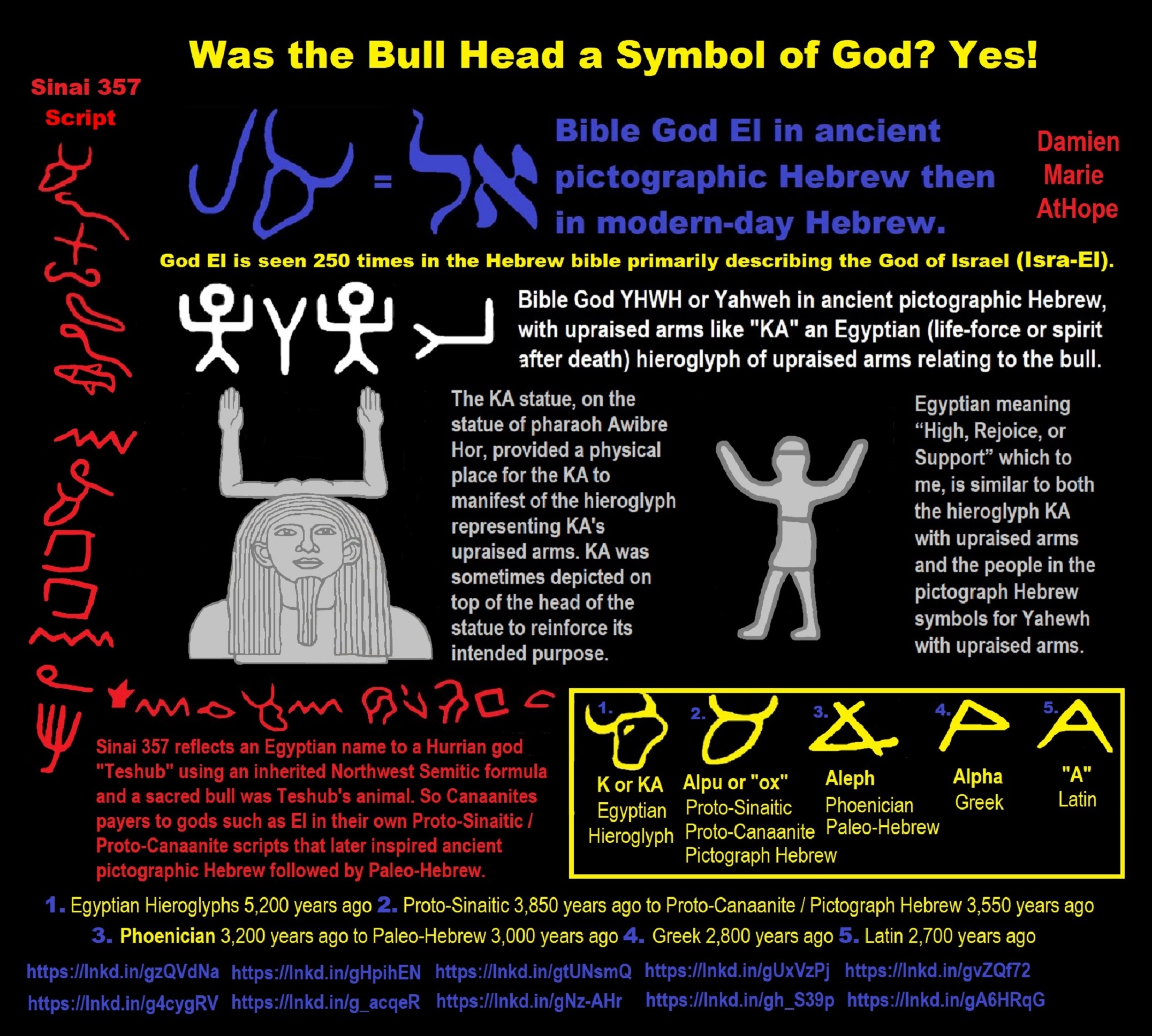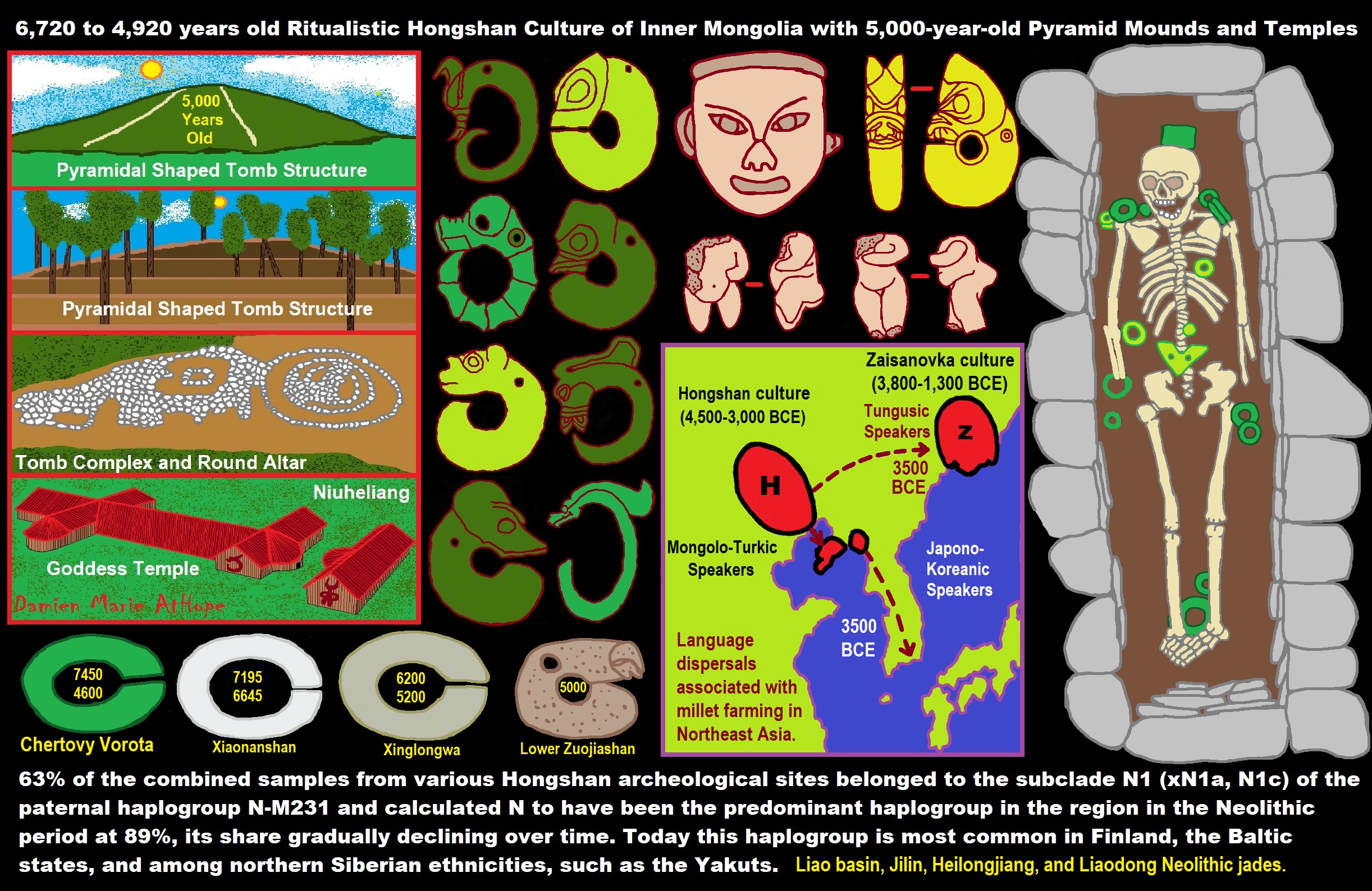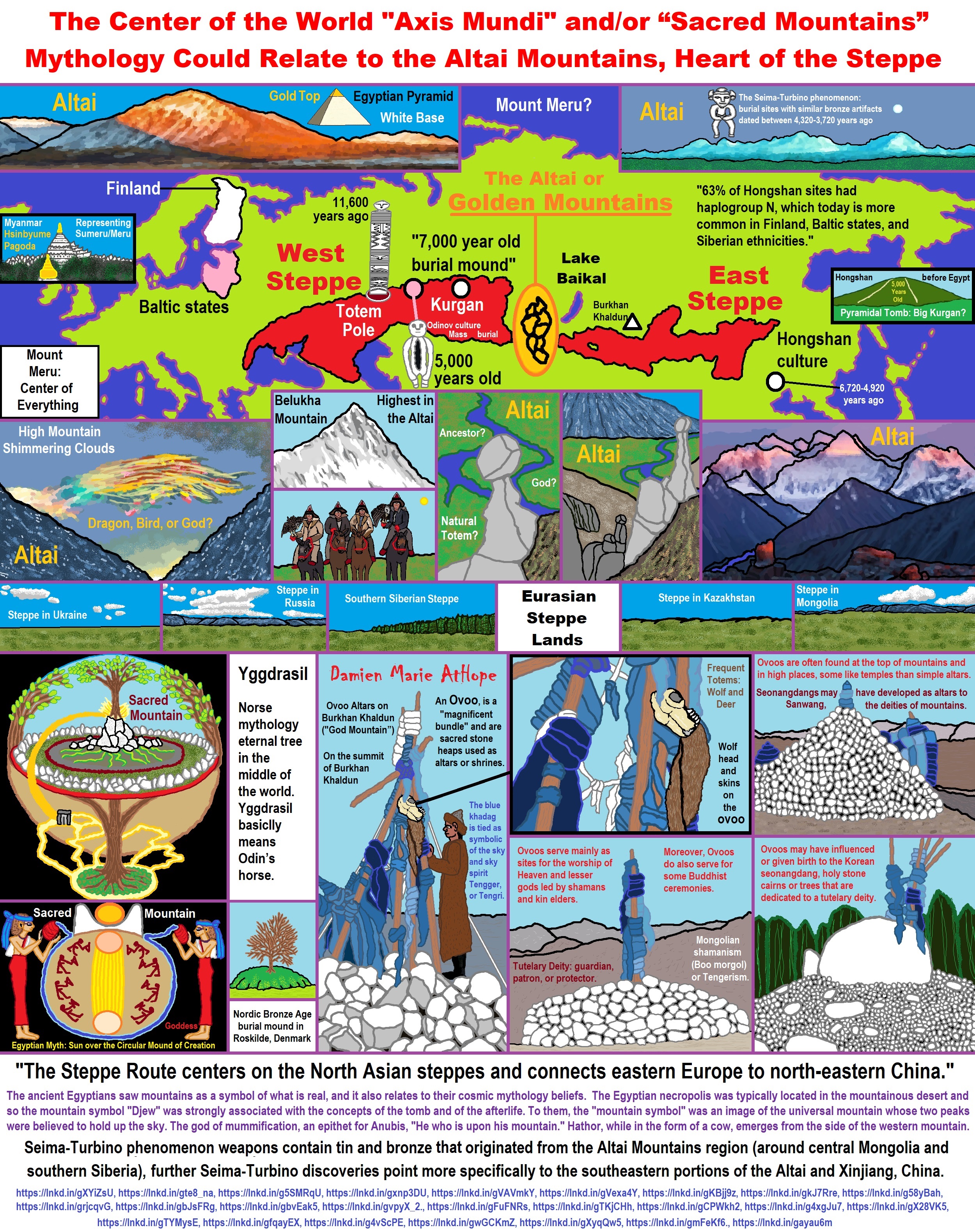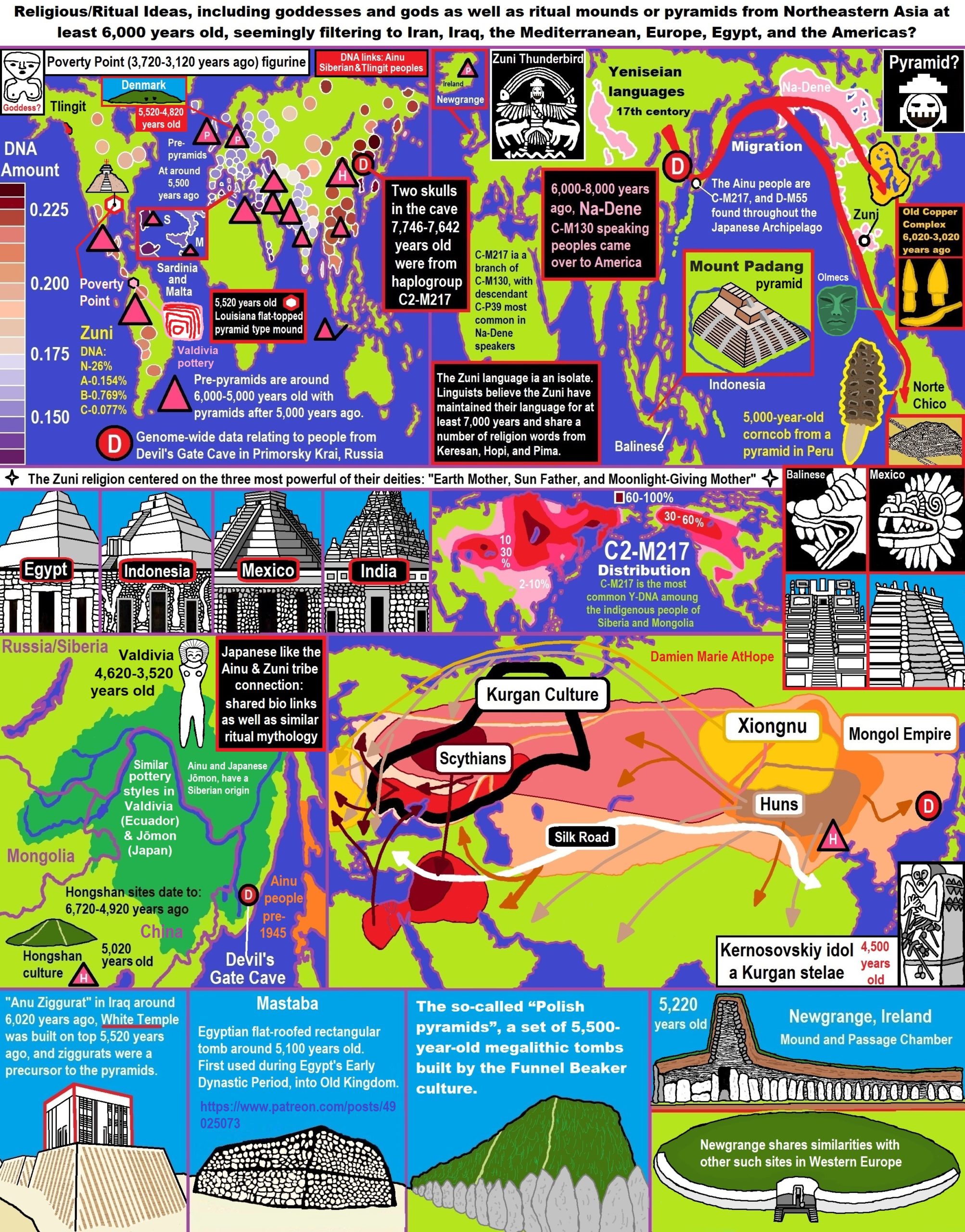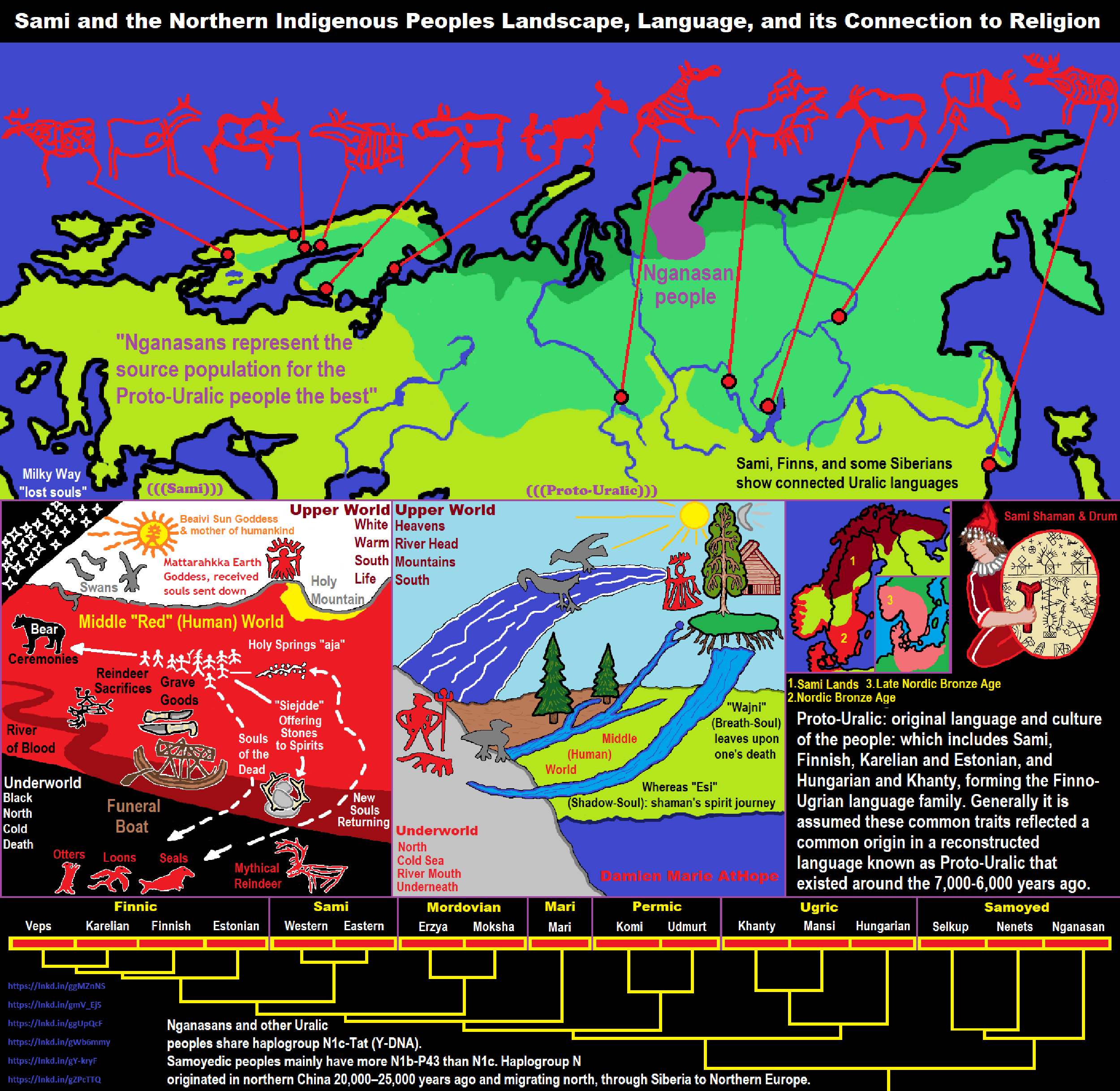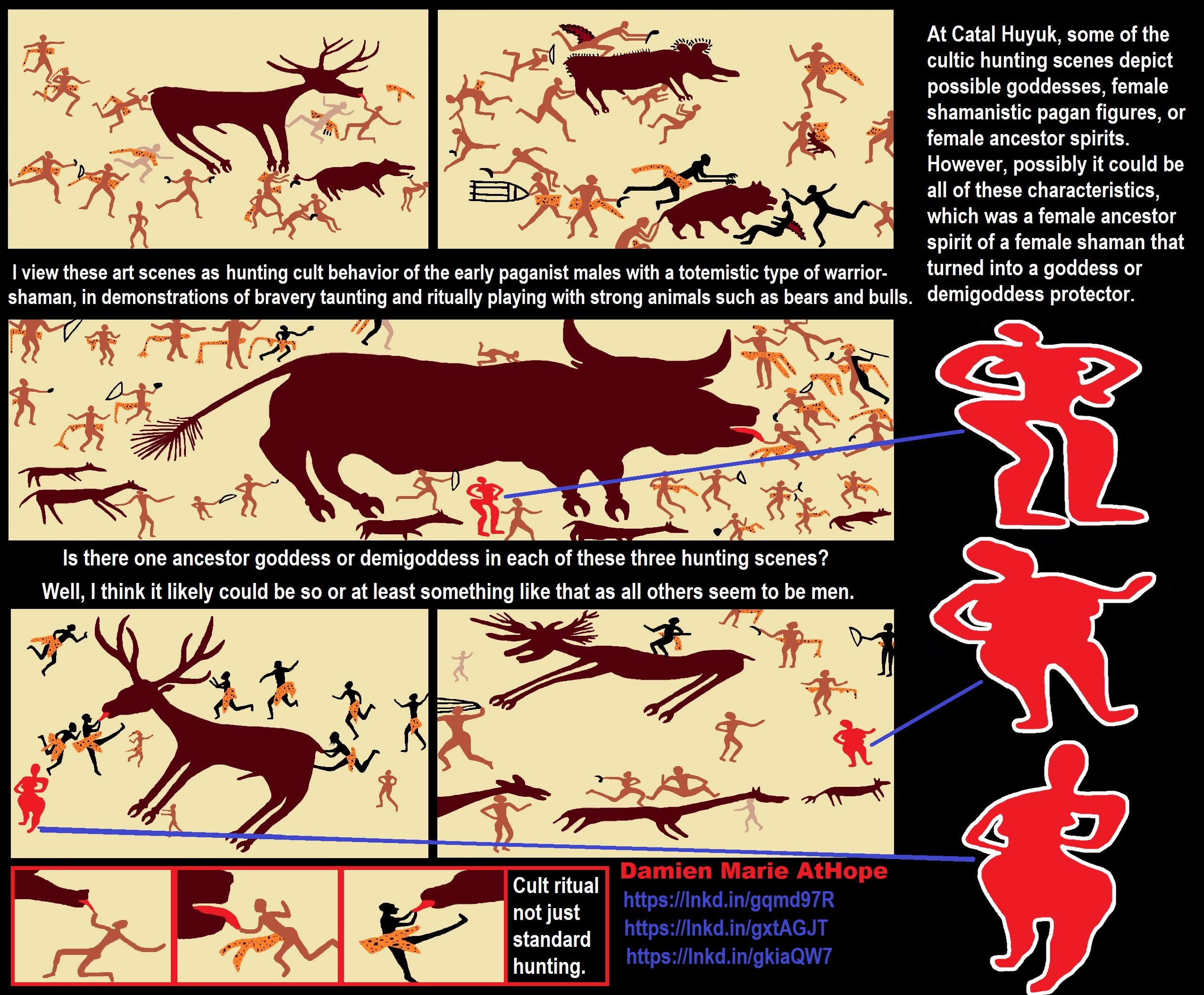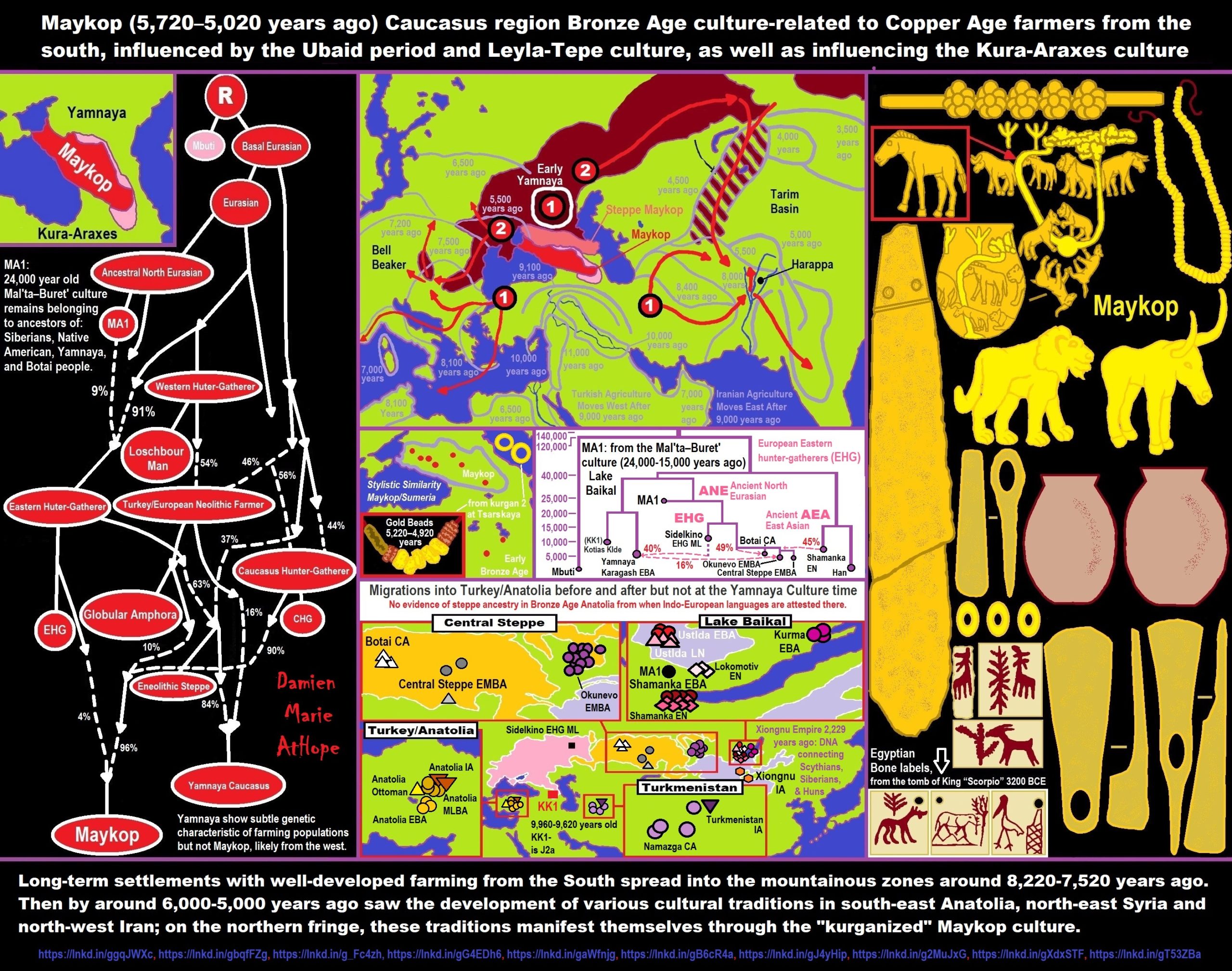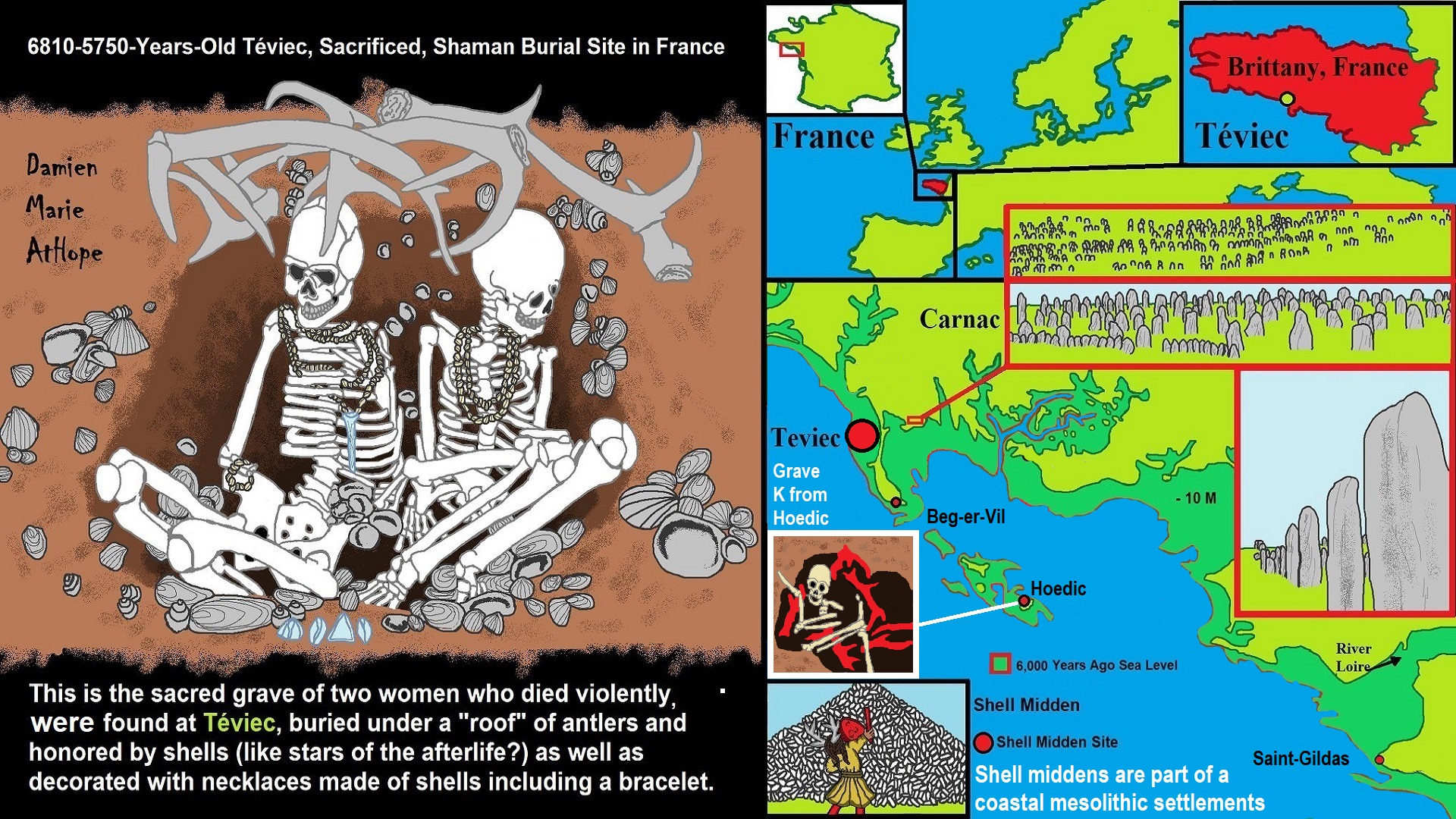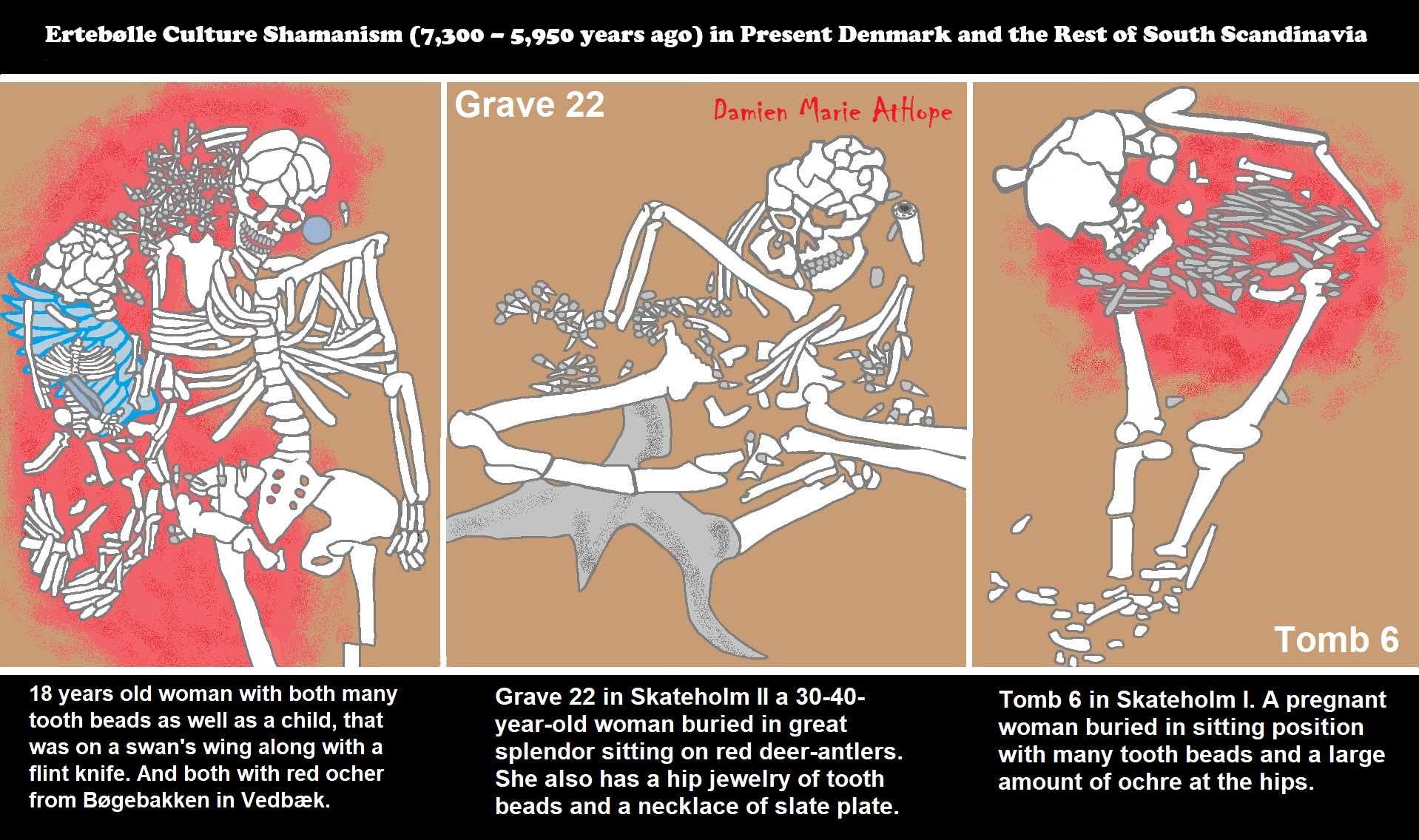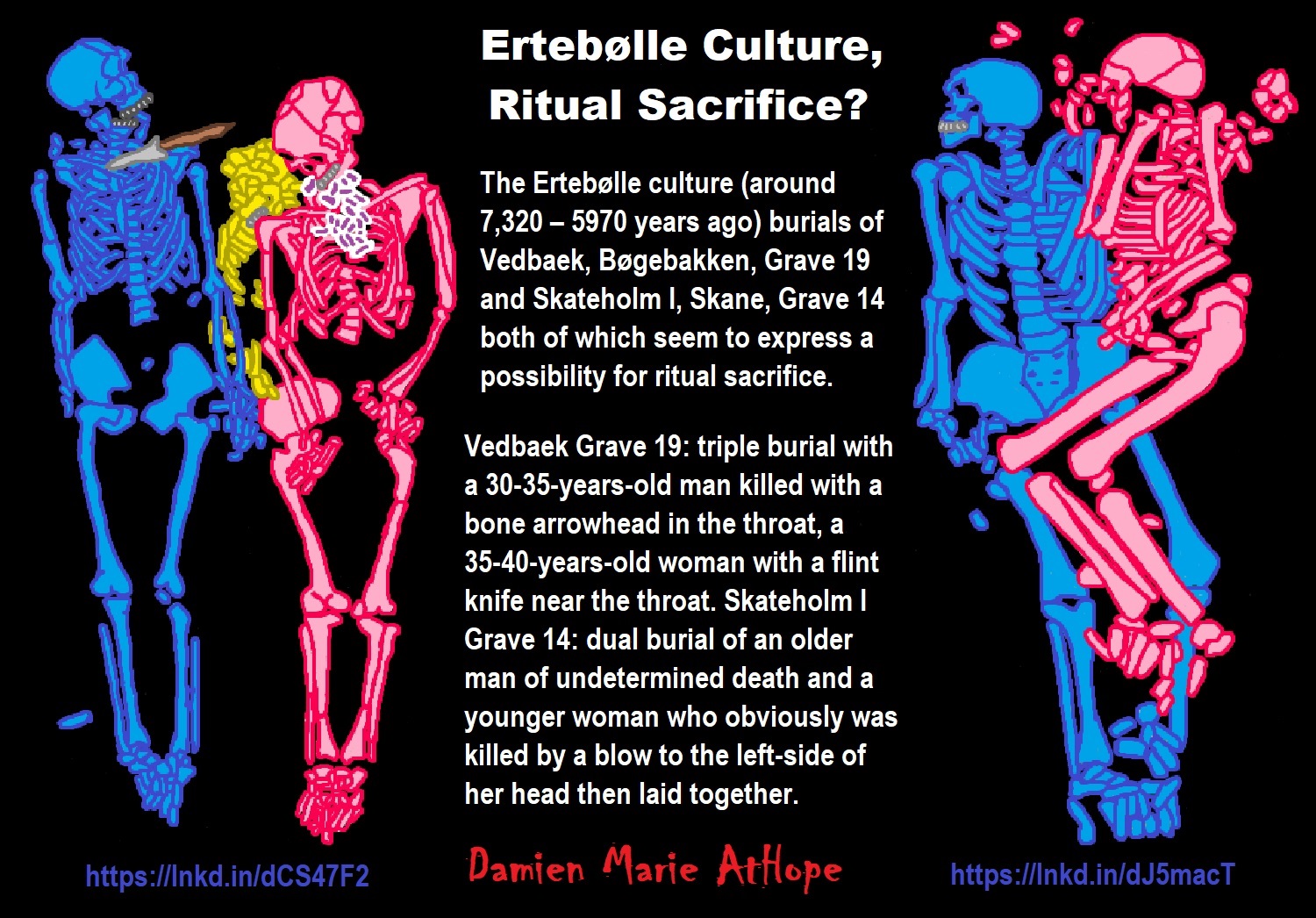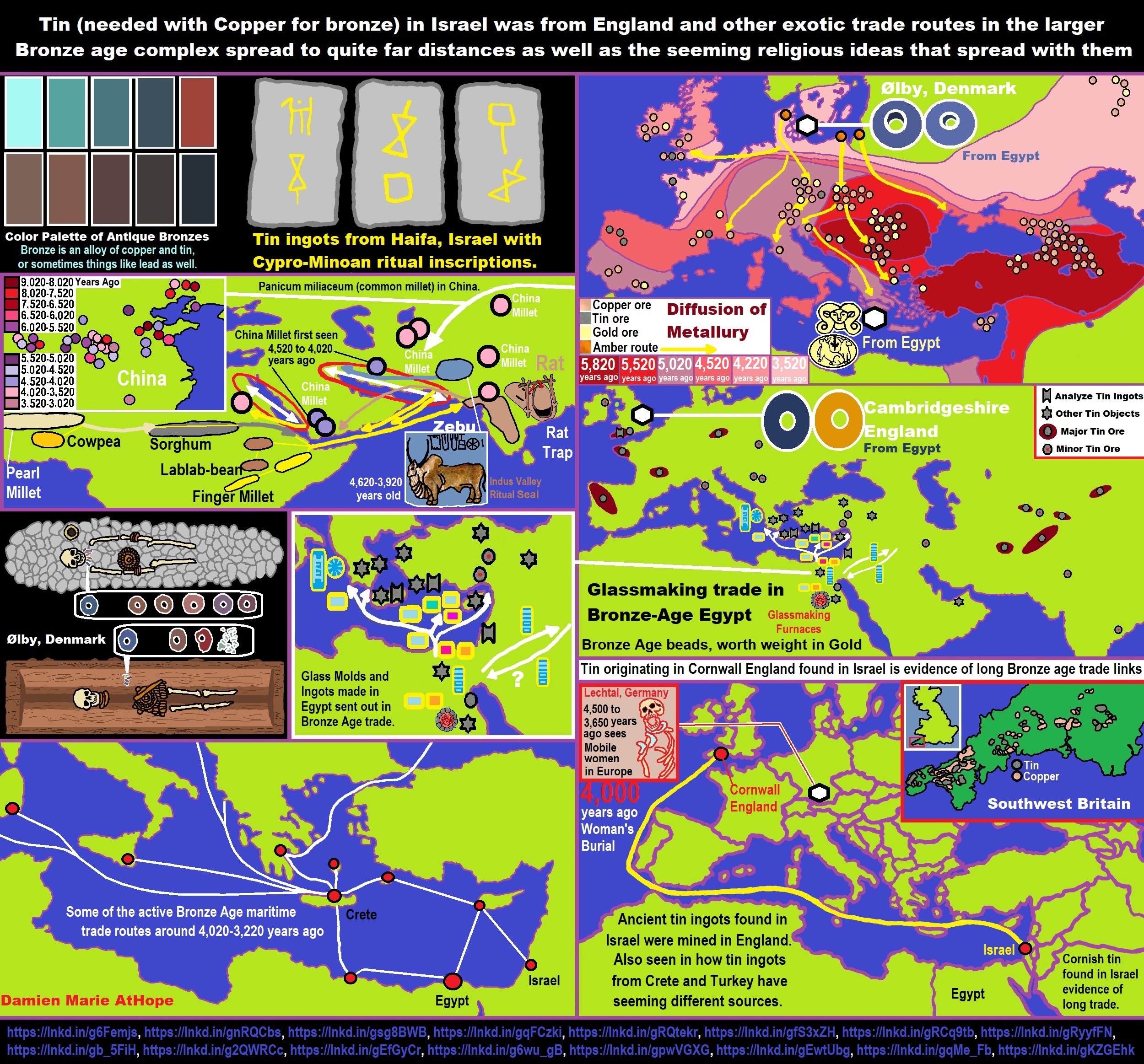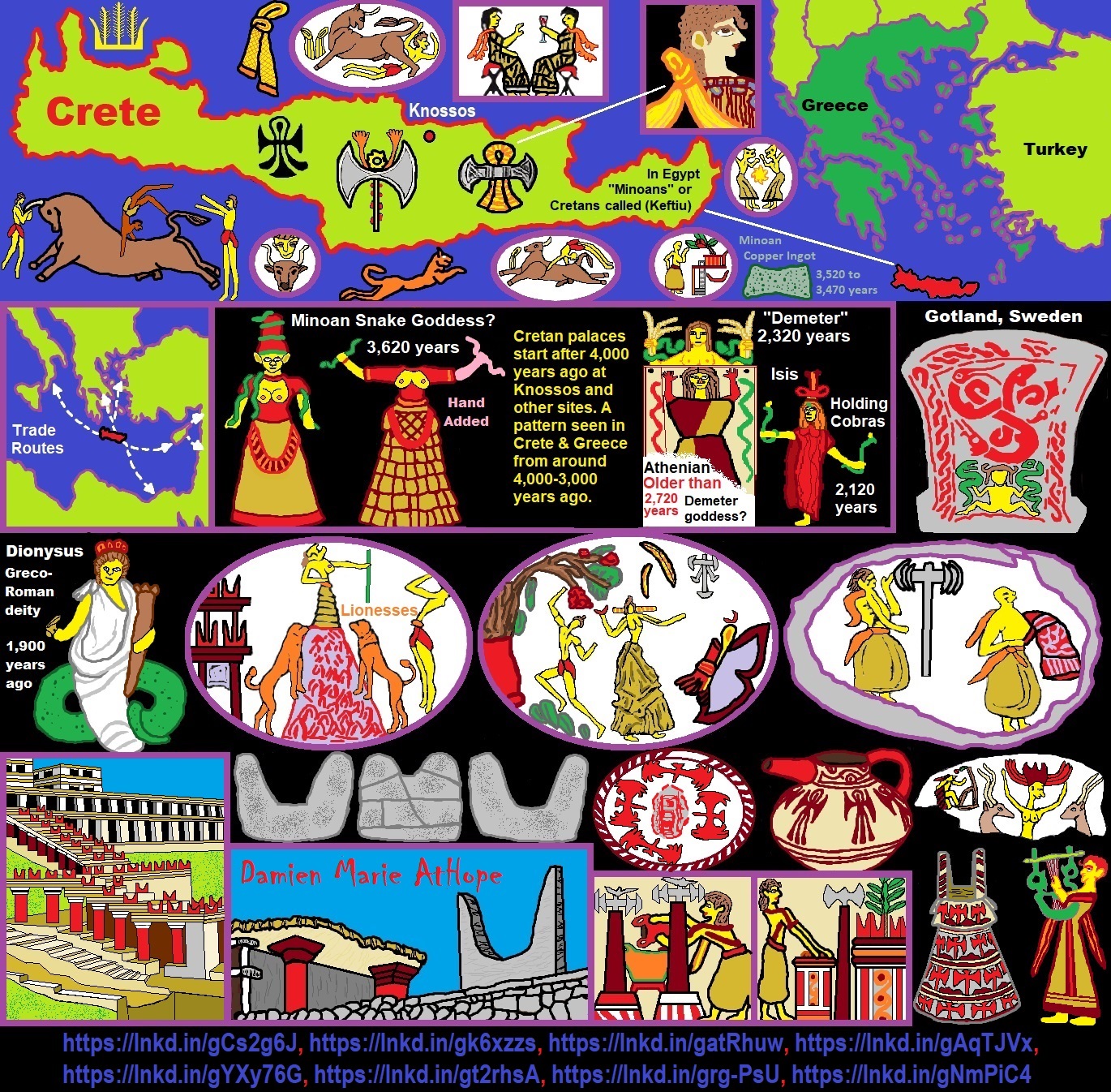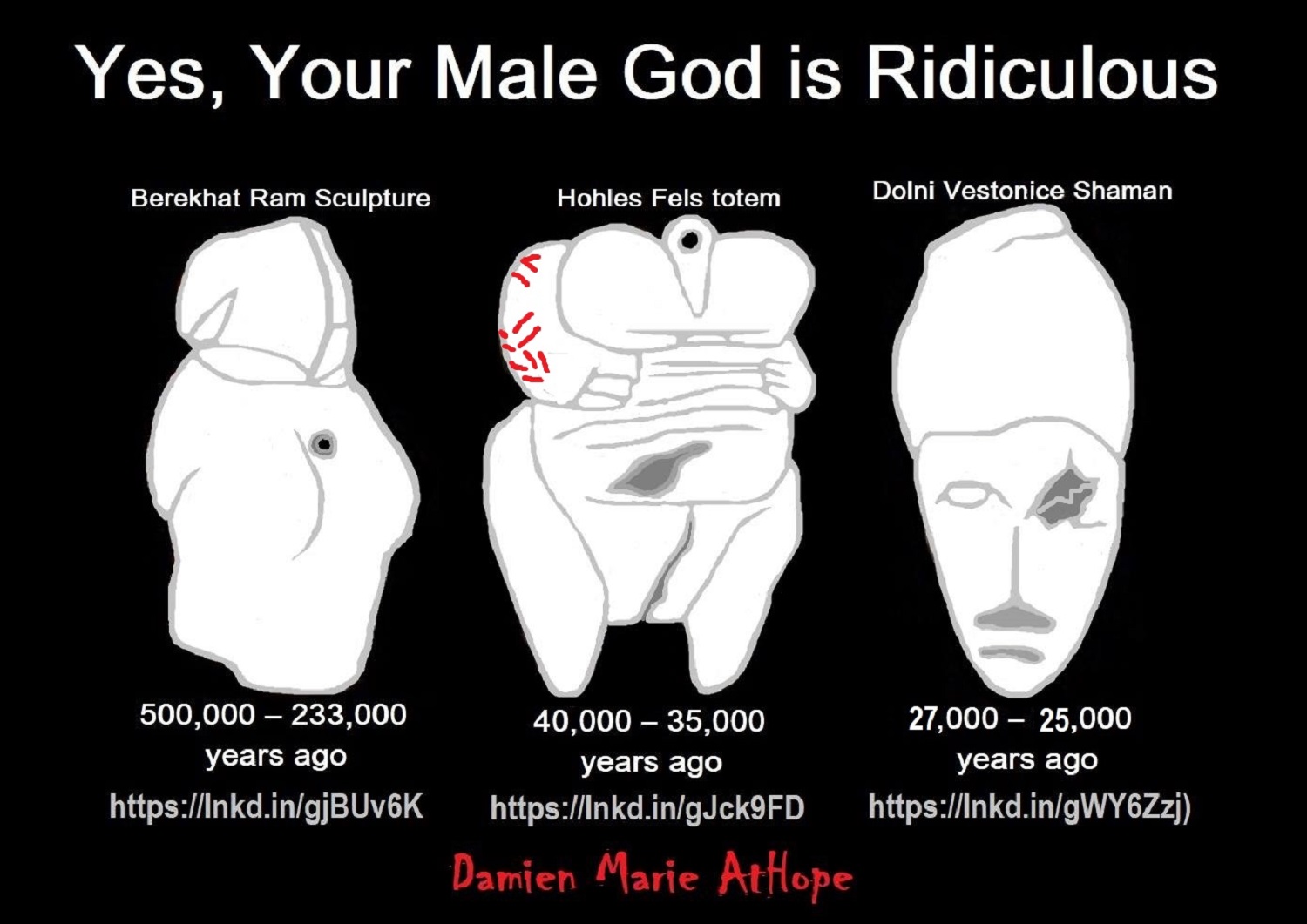
ref, ref, ref, ref, ref, ref, ref
Ref: Insoll, T. (2012). The Oxford handbook of the archaeology of ritual and religion. Oxford, United Kingdom. Oxford University Press.
God was once a Woman?
It was women that were the focus of religion, from at least around 35,000 years ago, until the near full oppression of women by about 2,000 years ago, when all the goddess religions were killed off. And monotheism or “Mam-o-theism,” as I call it, took control.
As for “Venus” figurines they largely span that same time too as they kept making them really, until around the time male gods that seem to appear around 7,000 years ago and the new clan violence spread with it as well as things such as symbols of power that become more the focus whether male or female, as religion shifted to group control and being of service to imperial power.
There are goddess beliefs that continued after 2,000 years ago not they are not the main focus they once were across all religions.
“Goddess Durga Hinduism. Jai mata di. Or the Great Hindu Male God Shiva under Goddess kali’s feet.” – South Asian Philosopher
My response, To me, the reason the west sees Hinduism as one thing, is British Imperialism and this is because Hinduism was never one thing, until the British made it (classed it all as the same, Indian religion) one religious people, but it’s actually many different but related religious beliefs called Hinduism.
“The word Hindū is derived from Indo-Aryan/Sanskrit root Sindhu. The Proto-Iranian sound change *s > h occurred between 850 and 600 BCE, according to Asko Parpola. The use of the English term “Hinduism” to describe a collection of practices and beliefs is a fairly recent construction: it was first used by Raja Ram Mohun Roy in 1816–17. The term “Hinduism” was coined in around 1830 by those Indians who opposed British colonialism, and who wanted to distinguish themselves from other religious groups. Before the British began to categorize communities strictly by religion, Indians generally did not define themselves exclusively through their religious beliefs; instead, identities were largely segmented on the basis of locality, language, varṇa, jāti, occupation and sect.” ref
“Damien AtHope actually you are mixing two different sects of Hinduism. In the ”Vaishnava” sect they say Krishna or Vishnu is greatest. Whereas in the shakti sect they say goddess is greatest. Followers of different sects have their different beliefs. Hinduism has no central idea, unlike other religions.” – South Asian Philosopher
My response, It is the religion of the Indo-European colonists and it relates to the religious beliefs of the area north of the black sea near Ukraine 7,000 years ago. Female goddesses were the first, and animals gods, then came males as gods.
“Damien AtHope lol, all brainwashed with that false discriminatory Aryan invasion theory, if that’s the case then why do they find idols of Hindu gods and goddesses in excavation from thousands of years old Indus valley civilization?” – South Asian Philosopher
My response, The Indus valley civilization was also of Iranian DNA.
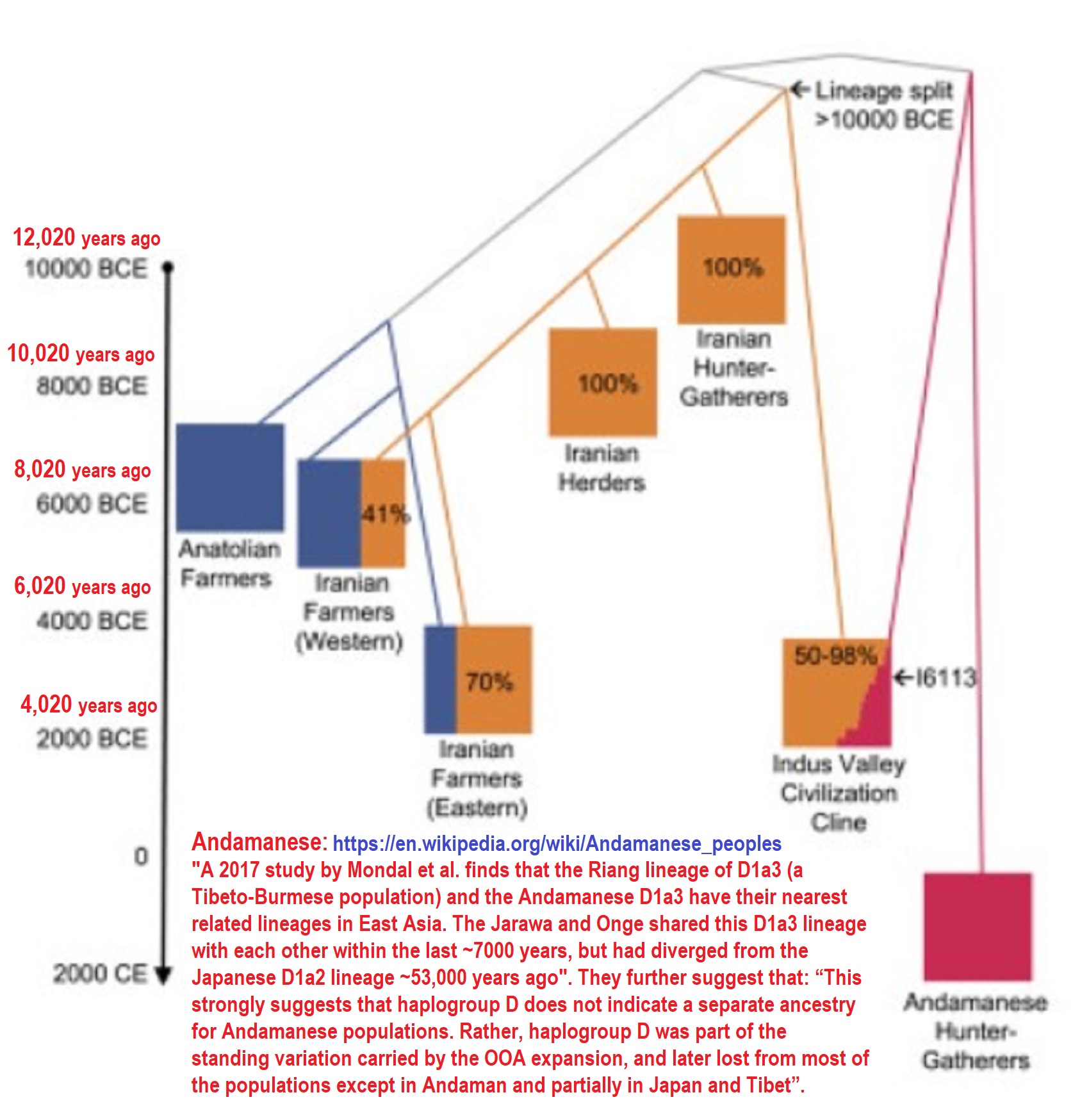
“The Iranian-related ancestry in the Indus Valley Civilization derives from a lineage leading to early Iranian farmers, herders, and hunter-gatherers before their ancestors separated, contradicting the hypothesis that the shared ancestry between early Iranians and South Asians reflects a large-scale spread of western Iranian farmers east. Instead, sampled ancient genomes from the Iranian plateau and Indus Valley Civilization descends from different groups of hunter-gatherers who began farming without being connected by substantial movement of people.” https://www.cell.com/cell/fulltext/S0092-8674(19)30967-5
“A 2017 study by Mondal et al. finds that the Riang lineage of D1a3 (a Tibeto-Burmese population) and the Andamanese D1a3 have their nearest related lineages in East Asia. The Jarawa and Onge shared this D1a3 lineage with each other within the last ~7000 years, but had diverged from the Japanese D1a2 lineage ~53000 years ago”. They further suggest that: “This strongly suggests that haplogroup D does not indicate a separate ancestry for Andamanese populations. Rather, haplogroup D was part of the standing variation carried by the OOA expansion, and later lost from most of the populations except in Andaman and partially in Japan and Tibet.” https://en.wikipedia.org/wiki/Andamanese_peoples
My response, Ancient Iranian DNA came twice to India, once at 9,000-7,000 years ago then later.
“Ancient DNA study, associated with typical Indus Valley Civilization shows the same mix of Iranian DNA and that of certain Southeast Asian hunter-gatherer societies, according to Harvard Medical School geneticist David Reich. The Indus Valley Civilization’s DNA lacked a genetic relationship with the Steppe pastoralists, the later migrants, whose genes are frequently present in modern South Asians, as well as among Europeans and other groups. This suggests that the entry of the Steppe genes into the South Asian gene pool occurred after the fall of the Indus Valley Civilization.” https://www.thevintagenews.com/2019/09/16/ancient-culture-dna/
“Another major innovation, that most likely emerged later than agriculture, was the domestication of animals, which is thought to have led to dramatic population expansions in Eurasia. Starting about 5000 years ago, pastoral nomadism developed in the grasslands of Central Asia, as well as in southeastern Europe, opening up the possibility of rapid movements of large population groups. The spread of these new technologies has been associated with the dispersal of Dravidian and Indo-European languages in southern Asia. It is hypothesized that the proto-Elamo-Dravidian language, most likely originated in the Elam province in southwestern Iran, spread eastwards with the movement of farmers to the Indus Valley and the Indian sub-continent. Between the third and second millennia BCE the Iranian Plateau became exposed to incursions of pastoral nomads from the Central Asian steppes, who brought the Indo-Iranian language of the Indo-European family, which eventually replaced Dravidian languages, perhaps by an elite-dominance model.” https://journals.plos.org/plosone/article?id=10.1371/journal.pone.0080673
“It was determined that its haplogroup was U2b2, which is absent in whole mitochondrial genomes sequences available from about 400 ancient Central Asians; today, this specific haplogroup is nearly exclusive to South Asia.”
=this first quote is from the link above=
“The U2 subclades are: U2a, U2b, U2c, U2d, and U2e. With the India-specific subclades U2a, U2b, and U2c collectively referred to as U2i, the Eurasian haplogroup U2d appears to be a sister clade with the Indian haplogroup U2c, while U2e is considered a European-specific subclade but also found in South India. Haplogroup U2 has been found in the remains of a 37,000 and 30,000-year-old hunter-gatherer from the Kostyonki, Voronezh Oblast in Central-South European (west Russia). In 4800 to 4000-year-old human remains from a Beaker culture site of the Late Neolithic in Kromsdorf Germany, and in 2,000-year-old human remains from Bøgebjerggård in Southern Denmark. However, haplogroup U2 is rare in present-day Scandinavians. The remains of a 2,000-year-old West Eurasian male of haplogroup U2e1 was found in the Xiongnu Cemetery of Northeast Mongolia.” https://en.wikipedia.org/wiki/Haplogroup_U_(mtDNA)
“Damien AtHope The same Hinduism, one sect of which calls a male god supreme and the other calls a female goddess as supreme, also gives some of the oldest and yet critical arguments against the Existence of God. Yes, the same Hinduism with so many gods. Here you go: the following arguments were given by Samkhya philosophers against the idea of an eternal, self-caused, creator God: “If the existence of karma is assumed, the proposition of God as a moral governor of the universe is unnecessary. For, if God enforces the consequences of actions then he can do so without karma. If however, he is assumed to be within the law of karma, then karma itself would be the giver of consequences and there would be no need of a God. Even if karma is denied, God still cannot be the enforcer of consequences. Because the motives of an enforcer God would be either egoistic or altruistic. Now, God’s motives cannot be assumed to be altruistic because an altruistic God would not create a world so full of suffering. If his motives are assumed to be egoistic, then God must be thought to have desire, as agency or authority cannot be established in the absence of desire. However, assuming that God has desire would contradict God’s eternal freedom which necessitates no compulsion in actions. Moreover, desire, according to Samkhya, is an attribute of prakṛti and cannot be thought to grow in God. The testimony of the Vedas, according to Samkhya, also confirms this notion. Despite arguments to the contrary, if God is still assumed to contain unfulfilled desires, this would cause him to suffer pain and other similar human experiences. Such a worldly God would be no better than Samkhya’s notion of higher self. Furthermore, there is no proof of the existence of God. He is not the object of perception, there exists no general proposition that can prove him by inference and the testimony of the Vedas speak of prakṛti as the origin of the world, not God. Therefore, Samkhya maintained that the various cosmological, ontological, and teleological arguments could not prove God. – From Samkhya Philosophy Hinduism” – South Asian Philosopher
Hinduism is a group of branches from one of the most spread religions the 7,000 years old religions all the major religions of the world connected with in some way. As they were in China 5,000 years ago affecting all Aisa religions as well. But 7,000 years ago people from Siberia and northern China spread their ideas first to Europe and the Middle East 7,000 to 6,000 years ago, then America by 6,000 to 5,000 years ago. China to India 5,000 to 4,000 years ago. As well as after there are a few who bring religions to India and all this adds changes in different ways to do Hinduism. It also evolved in India so now it is more Indian and less like the religion that it started. Although the goddess Idea started in Turkey at the early boom of farming spreading to China by around 10,000-9,000 years ago starting their goddess craze that lasted a while being added to new things then heading back from China to the rest of the world.
Hinduism, to me, is not a goddess religion, rather, it is a largely male-centric religion in general, with women added as a lesser, no matter, what few positions of power some goddesses get, they are lesser to the main male god and there is versus saying the only real god is the one male-only god and all other goddess or gods are but lesser avatars such as that of Hindu god Vishnu. https://en.wikipedia.org/wiki/Avatar
Hinduism is not a goddess religion, rather, in the goddess-based traditions of Hinduism, like Shaktism, they focus on female deities. https://en.wikipedia.org/wiki/Shaktism
However, I understand there is no one Hinduism so it depends on what kind of Hinduism you are talking about:
“Hinduism includes a diversity of ideas on spirituality and traditions, but has no ecclesiastical order, no unquestionable religious authorities, no governing body, no prophet(s) nor any binding holy book; Hindus can choose to be polytheistic, pantheistic, panentheistic, pandeistic, henotheistic, monotheistic, monistic, agnostic, atheistic or humanist. According to Doniger, “ideas about all the major issues of faith and lifestyle – vegetarianism, nonviolence, belief in rebirth, even caste – are subjects of debate, not dogma. Therefore, Hindu beliefs are vast and diverse, and thus Hinduism is often referred to as a family of religions rather than a single religion.” ref
“Mahatma Gandhi, the famous nonviolent Hindu reformer, explained that Hinduism is not an exclusive religion. Gandhi said, “If a man reaches the heart of his own religion, he has reached the heart of the others too. There is only one God, and there are many paths to him.” Although some ideas unify Hinduism, it is an extremely tolerant religion that allows its followers full freedom to choose their own belief system and way of life.” ref
“Although it is not easy to define Hinduism, we can say that it is rooted in India, most Hindus revere a body of texts as sacred scripture known as the Veda, and most Hindus draw on a common system of values known as dharma. Hinduism originated around the Indus Valley near the River Indus in modern-day Pakistan. About 80% of the Indian population regard themselves as Hindu. Most Hindus believe in a Supreme God, whose qualities and forms are represented by the multitude of deities that emanate from him.” ref
“Hinduism is the religion of India and has many varied manifestations, tolerating a wide range of beliefs and practices. There is an underlying monotheism, with lesser divinities as aspects of one G-d. This infinite principle is truly the sole reality and the ultimate cause and goal. There is a religiously sanctioned caste system, said to be in some decline. Religious worship is carried out in a shrine in the home, usually by women. Transmigration of souls and reincarnation are important aspects of Hindu belief. The ultimate goal is infinity (G-d), and the attainment of this goal is prevented by karma (rebirth); following death and a sojourn in heaven or hell, the soul is reborn into a physical form determined by actions in the previous incarnation. This process of rebirth (samsara) is seen as potentially endless, and not progressive in any way. Misfortunes are an aspect of karma, and can be escaped by marga – emancipation – of which the main types are duty, knowledge, and devotion.” ref
“Currently, the four largest denominations of Hinduism are, (1) Vaishnavism supporting 1 supreme godhead, (2) Shaivism supporting 1 supreme godhead, (3) Shaktism, supporting 1 supreme godhead Goddess and the Shakti/Energy of the god Vishnu and god Shiva, and (4) Smartism supporting 4 gods 1 goddess as equal supreme godheads.“ ref
God Vaishnavism
“Vaishnavism is one of the major Hindu denominations along with Shaivism, Shaktism, and Smartism. According to a 2010 estimate by Johnson and Grim, the Vaishnava tradition is the largest group within Hinduism constituting about 641 million or 67.6% of Hindus. It is also called Vishnuism since it considers Vishnu as the Supreme Being. Its followers are called Vaishnavas or Vaishnavites (derived from IAST: Vaiṣṇava), and it also includes some other sub-traditions like Krishnaism and Ramaism, which consider Krishna and Rama as the Supreme Being respectively.” ref
“The ancient emergence of Vaishnavism is unclear, and broadly hypothesized as a fusion of Vedic deities with various regional non-Vedic religions. It has 1st millennium BCE Vedic roots in the Vedic deity Bhaga, who gave rise to Bhagavatism, and in the Vedic water deity Nara c.q. Narayana. Non-Vedic roots are found in a merger of several popular non-Vedic theistic traditions such as the cult of Vāsudeva–Krishna and Gopala-Krishna., which developed in the 7th to 4th century BCE. In the early centuries CE, the tradition was finalized as Vaishnavism, when it developed the avatar doctrine, wherein the aligned deities are revered as distinct incarnations of supreme Vedic God Vishnu. Rama, Krishna, Narayana, Kalki, Hari, Vithoba, Venkateswara, Shrinathji, and Jagannath are among the names of popular avatars all seen as different aspects of the same supreme being. Vaishnavites claim that the tradition’s origin is from the vedic literature, where Lord Narayana is mentioned as the Supreme Being, both explicitly and impliedly.” ref
God Shaivism
“Shaivism is one of the major Hindu traditions that worships Shiva, also called Rudra, as the Supreme Being. It is considered to be the oldest living religion in the world. One of the largest Hindu denominations, It incorporates many sub-traditions ranging from devotional dualistic theism such as Shaiva Siddhanta to yoga-oriented monistic non-theism such as Kashmiri Shaivism. It considers both the Vedas and the Agama texts as important sources of theology.” ref
“Shaivism developed as an amalgam of pre-Vedic religions and traditions derived from the southern Tamil Dravidian Shaiva Siddhanta traditions and philosophies, which were assimilated in the non-Vedic Shiva-tradition. In the process of Sanskritization and formation of Hinduism, starting in the last centuries BCE these pre-Vedic traditions became aligned with the Vedic deity Rudra and other Vedic deities, incorporating the non-Vedic Shiva-traditions into the Vedic-Brahmanical fold. Both devotional and monistic Shaivism became popular in the 1st millennium CE, rapidly becoming the dominant religious tradition of many Hindu kingdoms. It arrived in Southeast Asia shortly thereafter, leading to the construction of thousands of Shaiva temples on the islands of Indonesia as well as Cambodia and Vietnam, co-evolving with Buddhism in these regions.” ref
“Shaivite theology ranges from Shiva being the creator, preserver, and destroyer to being the same as the Atman (self, soul) within oneself and every living being. It is closely related to Shaktism, and some Shaivas worship in both Shiva and Shakti temples. It is the Hindu tradition that most accepts ascetic life and emphasizes yoga, and like other Hindu traditions encourages an individual to discover and be one with Shiva within. The followers of Shaivism are called “Shaivites” or “Saivas.” ref
Goddess Shaktism
“Shaktism, “doctrine of energy, power, the eternal goddess” is one of several major Hindu denominations, wherein the metaphysical reality is considered metaphorically a woman and Shakti (Mahadevi) is regarded as the supreme godhead. It includes many goddesses, all considered aspects of the same supreme goddess. Shaktism has different sub-traditions, ranging from those focused on gracious Parvati to that of fierce Kali.” ref
“The Sruti and Smriti texts of Hinduism are an important historical framework of the Shaktism tradition. In addition, it reveres the texts Devi Mahatmya, the Devi-Bhagavata Purana, Kalika Purana, and Shakta Upanishads such as the Devi Upanishad. The Devi Mahatmya, in particular, is considered in Shaktism to be as important as the Bhagavad Gita. Shaktism is known for its various sub-traditions of Tantra, as well as a galaxy of goddesses with respective systems. It consists of the Vidyapitha and Kulamārga.” ref
“The pantheon of goddesses in Shaktism grew after the decline of Buddhism in India, wherein Hindu and Buddhist goddesses were combined to form the Mahavidya, a list of ten goddesses. The most common aspects of Devi found in Shaktism include Durga, Kali, Saraswati, Lakshmi, Parvati, and Tripurasundari. The Goddess-focused tradition is very popular in Northeastern India particularly West Bengal, Odisha, Bihar, Jharkhand, Tripura, and Assam, which it celebrates festivals such as the Durga puja, which is popular in West Bengal and Odisha.” ref
“Shaktism also emphasizes that intense love of deity is more important than simple obedience, thus showing the influence of Vaishnava idea where a passionate relationship between Radha and Krishna is also the ideal relationship. These older ideas still influence modern Shaktism. Similarly, Shaktism’s ideas have also influenced Vaishnavism and Shaivism traditions. In Shaktism, the Goddess is considered as the Shakti/Energy of Vishnu and Shiva respectively, and revered prominently in numerous Hindu temples and festivals.” ref
“Mahadevi, also referred to as Devi, Shakti, Adi Parashakti, and Adi-Shakti, is the primordial Goddess or Divine Mother in Hinduism. Shaktas believe her as the Supreme Being, manifested as the triple goddesses Saraswati, Lakshmi, and Parvati. The Shaivas consider Parvati to be her primary form, while Vaishnavas consider it to be Lakshmi.” ref
Smarta tradition, all equal –God Shiva, God Vishnu, God Surya, God Ganesha, and Goddess Shakti
“Smārta tradition is a major Hindu denomination that developed during its classical period around the beginning of the Common Era. It reflects a Hindu synthesis of four philosophical strands: Mimamsa, Advaita, Yoga, and theism. The Smarta tradition rejects theistic sectarianism, and it is notable for the domestic worship of five shrines with five deities, all treated as equal – Shiva, Vishnu, Surya, Ganesha, and Shakti. The Smarta tradition contrasted with the older Shrauta tradition, which was based on elaborate rituals and rites. There has been considerable overlap in the ideas and practices of the Smarta tradition with other significant historic movements within Hinduism, namely Shaivism, Brahmanism, Vaishnavism, and Shaktism.” ref
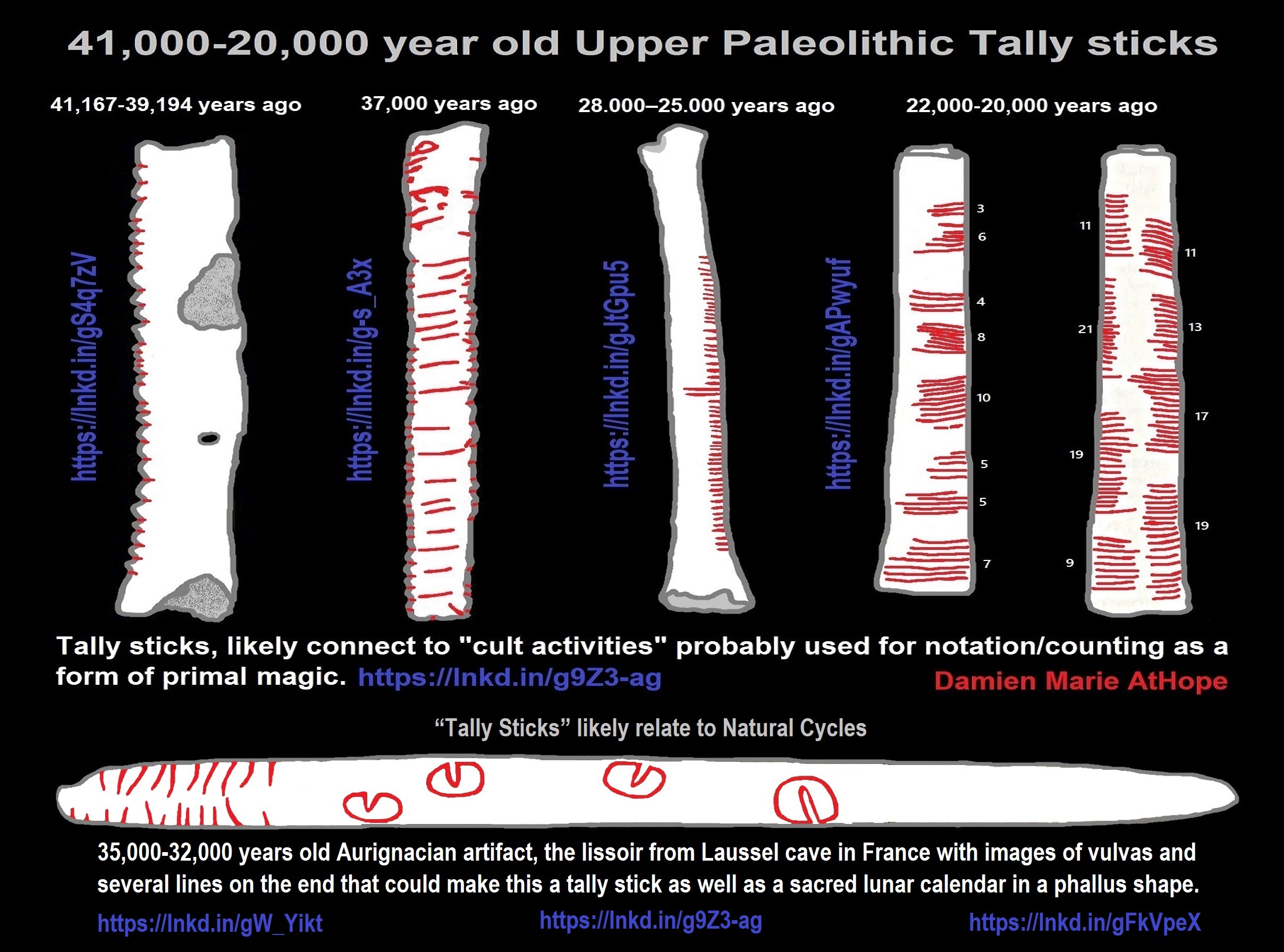

34,000 years ago Lunar Calendar Cave art around the Time Shift From Totemism to Early Shamanism?
“The Oldest Lunar Calendars and Earliest Constellations have been identified in cave art found in France and Germany. The astronomer-priests of these late Upper Paleolithic Cultures understood mathematical sets, and the interplay between the moon annual cycle, ecliptic, solstice and seasonal changes on earth. The archaeological record’s earliest data that speaks to human awareness of the stars and ‘heavens’ dates to the Aurignacian Culture of Europe, around 34,000 years ago. Between 1964 and the early 1990s, Alexander Marshack published breakthrough research that documented the mathematical and astronomical knowledge in the Late Upper Paleolithic Cultures of Europe. Marshack deciphered sets of marks carved into animal bones, and occasionally on the walls of caves, as records of the lunar cycle. These marks are sets of crescents or lines. Artisans carefully controlled line thickness so that a correlation with lunar phases would be as easy as possible to perceive. Sets of marks were often laid out in a serpentine pattern that suggests a snake deity or streams and rivers. Many of these lunar calendars were made on small pieces of stone, bone or antler so that they could be easily carried. These small, portable, lightweight lunar calendars were easily carried on extended journeys such as long hunting trips and seasonal migrations.” ref
“Hunting the largest animals was arduous, and might require hunters to follow herds of horses, bison, mammoth or ibex for many weeks. (Other big animals such as the auroch, cave bear and cave lion were well known but rarely hunted for food because they had a special status in the mythic realm. The Auroch is very important to the search for earliest constellations.) The phases of the moon depicted in these sets of marks are inexact. Precision was impossible unless all nights were perfectly clear which is an unrealistic expectation. The arithmetic counting skill implied by these small lunar calendars is obvious. The recognition that there are phases of the moon and seasons of the year that can be counted – that should be counted because they are important – is profound. “All animal activities are time factored, simply because time passes, the future is forever arriving. The reality of time factoring is objective physics and does not depend upon human awareness or consciousness. Until Marshack’s work, many archeologists believed the sets of marks he chose to study were nothing but the aimless doodles of bored toolmakers. What Marshack uncovered is the intuitive discovery of mathematical sets and the application of those sets to the construction of a calendar.” Bone is the preferred medium because it allows for easy transport and a long calendar lifetime. Mankind’s earliest astronomy brought the clan into the multi-dimensional universe of the gods. Objects used in the most potent rituals had the highest contextual, cultural value and were treated with great reverence.” ref
“Regarding the Aurignacian, between 43,000 and 35,000 years ago, the archaeological record from habitations is relatively poor in the Ardèche (Abri des Pécheurs, Grotte du Figuier) while appearing more abundant in the Languedoc (La Salpétrière, La Balauzière, Esquicho-Grapaou, La Laouza etc.). The same applies to the sites of the early phases of the Gravettian. During climatic fluctuations, and unlike the deep caves such as Chauvet, the porch and shelter fills seem to have better recorded the cold episodes than the humid phases. To date, 20 decorated caves are indexed in the gorges of the Ardèche and nearby; in other words as far as the valley of the Gardon (Baume-Latrone). This group includes several important caves (Ebbou, Oulen, Émilie etc.) which are not precisely dated and were judged to be of secondary importance until the discovery of the Chauvet Cave.” ref
“A 10,000-year-old engraved stone could be a lunar calendar. The rare pebble — found high up in the mountains near Rome, Italy, the hammer-stone was found on top of Monte Alta in the Alban Hills. It’s believed that our early ancestors would’ve used the stone to keep track of the moon’s cycles. Notches were engraved “as if they were being used to count, calculate or store the record of some kind of information. And these notches — which total either 27 or 28 — suggest the stone’s engraver used the pebble to track lunar cycles.” ref
“Archaeologists excavating in Scotland found a series of huge pits were dug by Mesolithic people to track the cycle of the Moon. They found a series of twelve huge, specially shaped pits designed to mimic the various phases of the Moon. The holes aligned perfectly on the midwinter solstice to help the hunter-gathers of Mesolithic Britain keep precise track of the passage of the seasons and the lunar cycle. The holes were dug in the shapes of various phases of the moon. “Waxing, waning, crescents, and gibbous, they’re all there and arranged in a 50-meter-long (164-foot) arc. The one representing the full moon is large and circular, approximately two meters (roughly seven feet) across, and placed right in the center. And this arc is arranged perfectly with a notch in the landscape where the sun would have risen on the day of the midwinter solstice about 10,000 years ago. Placing their calendar in the landscape the way they did would have let the people who built it to recalibrate the lunar months every winter to bring their lunar calendar in line with the solar year. This means that any effort to keep track of the seasons using the moon alone will slowly drift ever further from true. An observer needs to know when to add or subtract an extra month to make good the time or hit the reset button and start counting again.” ref
“A moon-shaped calendar was found in Smederevska Palanka, Serbia that dates back 8,000 years, and is made from a wild boar’s tusk engraved with markings to denote a lunar cycle. Farmers may have used the device to plan when to plant crops. It is made from the tusk of a wild boar and is marked with engravings thought to denote a lunar cycle of 28 days, as well as the four phases of the moon.” ref
“A lunisolar calendar was found at Warren Field in Scotland and has been dated to c. 8000 BCE, during the Mesolithic period. Some scholars argue for lunar calendars still earlier—Rappenglück in the marks on a c. 17,000-year-old cave painting at Lascaux and Marshack in the marks on a c. 27,000-year-old bone baton—but their findings remain controversial. Scholars have argued that ancient hunters conducted regular astronomical observations of the Moon back in the Upper Palaeolithic. Samuel L. Macey dates the earliest uses of the Moon as a time-measuring device back to 28,000–30,000 years ago.” ref
“A lunar calendar is a calendar based on the monthly cycles of the Moon‘s phases (synodic months, lunations), in contrast to solar calendars, whose annual cycles are based only directly on the solar year. The most commonly used calendar, the Gregorian calendar, is a solar calendar system that originally evolved out of a lunar calendar system. A purely lunar calendar is also distinguished from a lunisolar calendar, whose lunar months are brought into alignment with the solar year through some process of intercalation. The details of when months begin varies from calendar to calendar, with some using new, full, or crescent moons and others employing detailed calculations.” ref
“Since each lunation is approximately 29+1⁄2 days, it is common for the months of a lunar calendar to alternate between 29 and 30 days. Since the period of 12 such lunations, a lunar year, is 354 days, 8 hours, 48 minutes, 34 seconds (354.36707 days), purely lunar calendars are 11 to 12 days shorter than the solar year. In purely lunar calendars, which do not make use of intercalation, like the Islamic calendar, the lunar months cycle through all the seasons of a solar year over the course of a 33–34 lunar-year cycle.” ref
“Although the Gregorian calendar is in common and legal use in most countries, traditional lunar and lunisolar calendars continue to be used throughout the world to determine religious festivals and national holidays. Such holidays include Rosh Hashanah (Hebrew calendar); Easter (the Computus); the Chinese, Korean, Vietnamese, and Mongolian New Year (Chinese, Korean, Vietnamese, and Mongolian calendars, respectively); the Nepali New Year (Nepali calendar); the Mid-Autumn Festival and Chuseok (Chinese and Korean calendars); Loi Krathong (Thai calendar); Sunuwar calendar; Vesak/Buddha’s Birthday (Buddhist calendar); Diwali (Hindu calendars); Ramadan, Eid al-Fitr and Eid al-Adha (Islamic calendar).” ref
“The Japanese Calendar formerly used both the lunar and lunisolar calendar before it was replaced by the Gregorian Calendar during the Meiji government in 1872. Holidays such as the Japanese New Year were simply transposed on top as opposed to being calculated like other countries that use the lunisolar and Gregorian calendars together, for example, the Japanese New Year now falls on January 1, creating a month delay as opposed to other East Asian Countries. See customary issues in modern Japan.” ref
“Most calendars referred to as “lunar” calendars are in fact lunisolar calendars. Their months are based on observations of the lunar cycle, with intercalation being used to bring them into general agreement with the solar year. The solar “civic calendar” that was used in ancient Egypt showed traces of its origin in the earlier lunar calendar, which continued to be used alongside it for religious and agricultural purposes. Present-day lunisolar calendars include the Chinese, Vietnamese, Hindu, and Thai calendars.” ref
“Synodic months are 29 or 30 days in length, making a lunar year of 12 months about 11 to 12 days shorter than a solar year. Some lunar calendars do not use intercalation, for example, the lunar Hijri calendar used by most Muslims. For those that do, such as the Hebrew calendar, and Buddhist Calendars in Myanmar, the most common form of intercalation is to add an additional month every second or third year. Some lunisolar calendars are also calibrated by annual natural events which are affected by lunar cycles as well as the solar cycle. An example of this is the lunar calendar of the Banks Islands, which includes three months in which the edible palolo worms mass on the beaches. These events occur at the last quarter of the lunar month, as the reproductive cycle of the palolos is synchronized with the moon.” ref
“Lunar and lunisolar calendars differ as to which day is the first day of the month. In some lunisolar calendars, such as the Chinese calendar, the first day of a month is the day when an astronomical new moon occurs in a particular time zone. In others, such as some Hindu calendars, each month begins on the day after the full moon. Others are based on the first sighting of the lunar crescent, such as the lunar Hijri calendar (and, historically, the Hebrew calendar).” ref
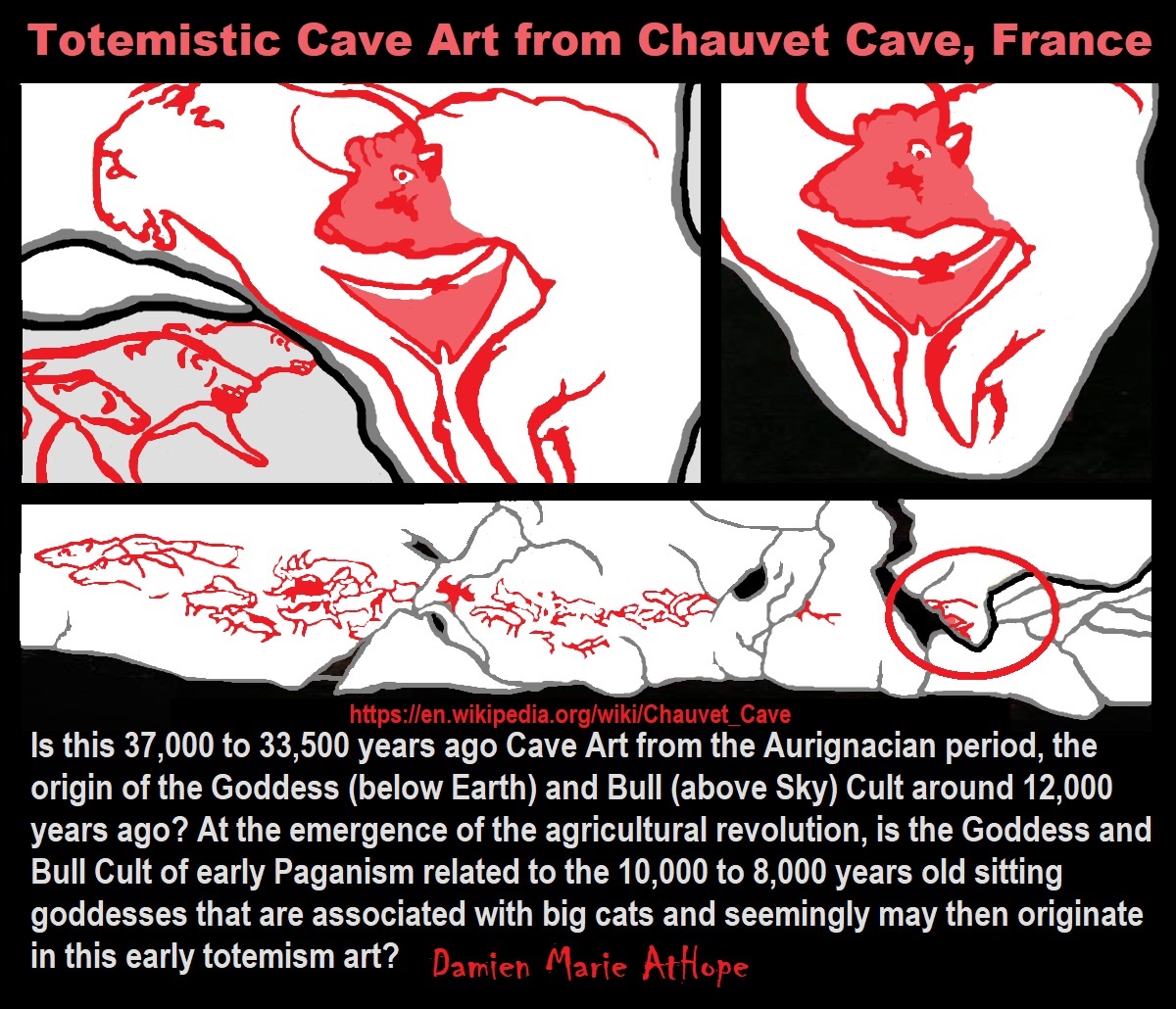
Chauvet cave
“The Chauvet-Pont-d’Arc Cave in the Ardèche department of southeastern France is a cave that contains some of the best-preserved figurative cave paintings in the world, as well as other evidence of Upper Paleolithic life. It is located near the commune of Vallon-Pont-d’Arc on a limestone cliff above the former bed of the river Ardèche, in the Gorges de l’Ardèche. The dates have been a matter of dispute but a study published in 2012 supports placing the art in the Aurignacian period, approximately 32,000–30,000 years ago. A study published in 2016 using additional 88 radiocarbon dates showed two periods of habitation, one from 37,000 to 33,500 years ago and the second from 31,000 to 28,000 years ago, with most of the black drawings dating to the earlier period.” ref
“Hundreds of animal paintings have been cataloged, depicting at least 13 different species, including some rarely or never found in other ice age paintings. Rather than depicting only the familiar herbivores that predominate in Paleolithic cave art, i.e. horses, aurochs, mammoths, etc., the walls of the Chauvet Cave feature many predatory animals, e.g., cave lions, leopards, bears, and cave hyenas. There are also paintings of rhinoceroses. Typical of most cave art, there are no paintings of complete human figures, although there is one partial “Venus” figure composed of what appears to be a vulva attached to an incomplete pair of legs. Above the Venus, and in contact with it, is a bison head, which has led some to describe the composite drawing as a Minotaur. There are a few panels of red ochre hand prints and hand stencils made by blowing pigment over hands pressed against the cave surface. Abstract markings—lines and dots—are found throughout the cave. There are also two unidentifiable images that have a vaguely butterfly or avian shape to them. This combination of subjects has led some students of prehistoric art and cultures to believe that there was a ritual, shamanic, or magical aspect to these paintings.” ref
“One drawing, later overlaid with a sketch of a deer, is reminiscent of a volcano spewing lava, similar to the regional volcanoes that were active at the time. If confirmed, this would represent the earliest known drawing of a volcanic eruption. The artists who produced these paintings used techniques rarely found in other cave art. Many of the paintings appear to have been made only after the walls were scraped clear of debris and concretions, leaving a smoother and noticeably lighter area upon which the artists worked. Similarly, a three-dimensional quality and the suggestion of movement are achieved by incising or etching around the outlines of certain figures. The art is also exceptional for its time for including “scenes”, e.g., animals interacting with each other; a pair of woolly rhinoceroses, for example, are seen butting horns in an apparent contest for territory or mating rights.” ref
Aurignacian burials (around 37,000-30,000 years ago) belong to the early phase of this period in Europe. Examples have been excavated at Cave of Cavillon, Liguria – a burial wearing a cap of netted whelk shells with a border of deer’s teeth, red ochre around the face, and a bone awl at the side. ref
Aurignacian in the Zagros region dates back to about 35,500 years ago at Yafteh Cave, Lorestan, Iran. ref
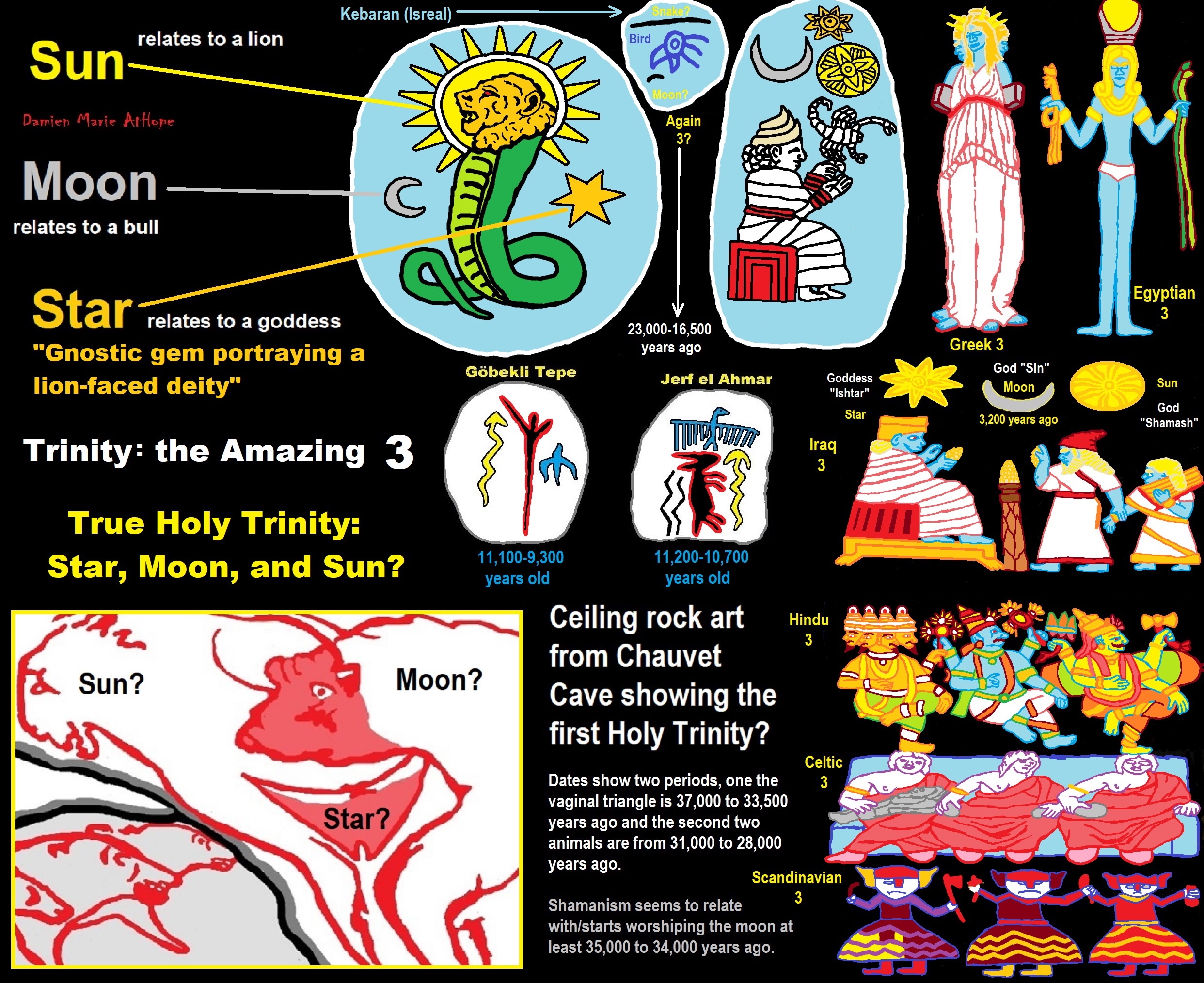
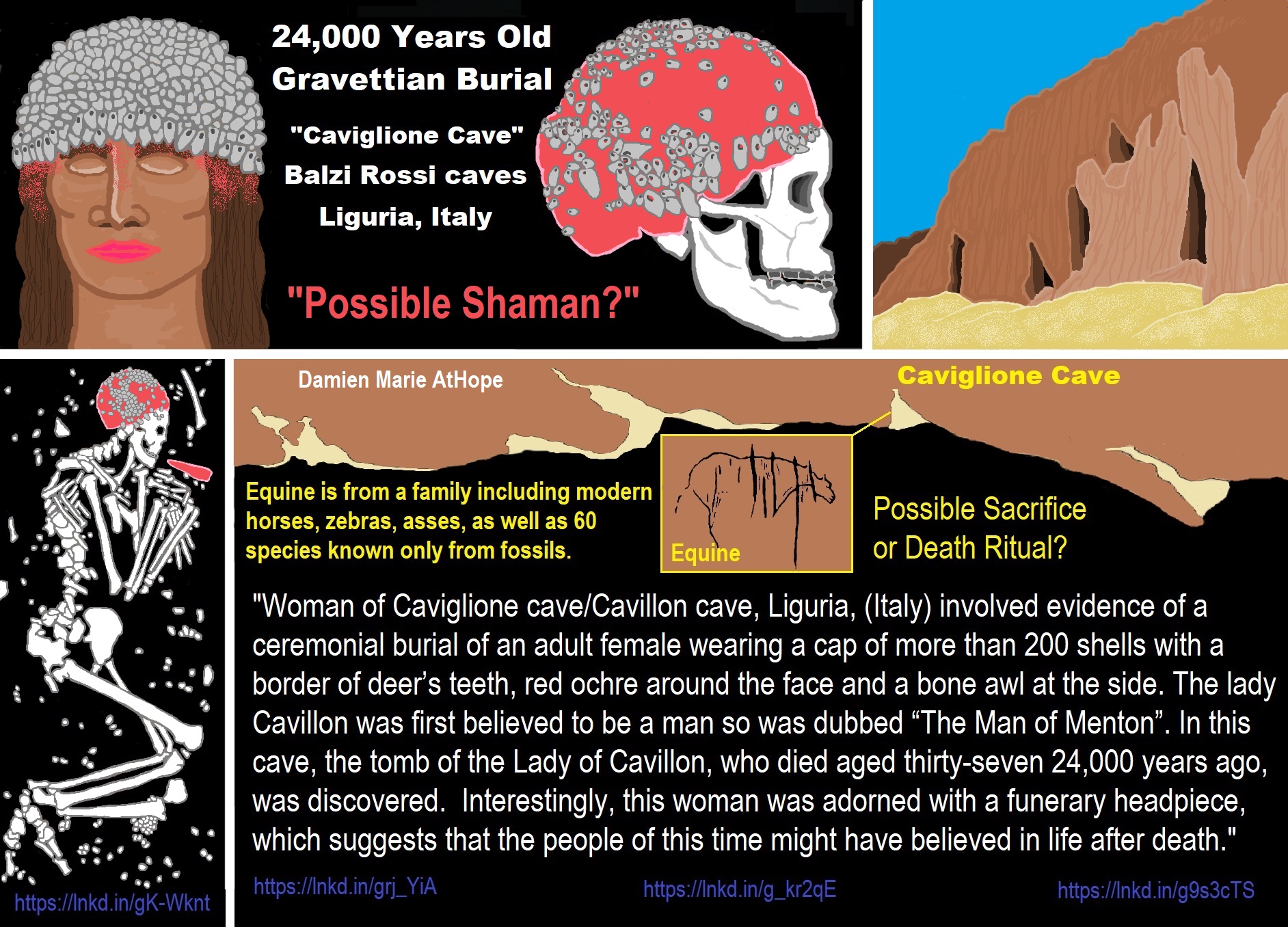
“Woman of Caviglione cave/Cavillon cave, Liguria, (Italy) involved evidence of a ceremonial burial of an adult female wearing a cap of more than 200 shells with a border of deer’s teeth, red ochre around the face and a bone awl at the side. The lady Cavillon was first believed to be a man so was dubbed “The Man of Menton”. In this cave, the tomb of the Lady of Cavillon, who died aged thirty-seven 24,000 years ago, was discovered. Interestingly, this woman was adorned with a funerary headpiece, which suggests that the people of this time might have believed in life after death.” Ref, Ref, Ref, Ref
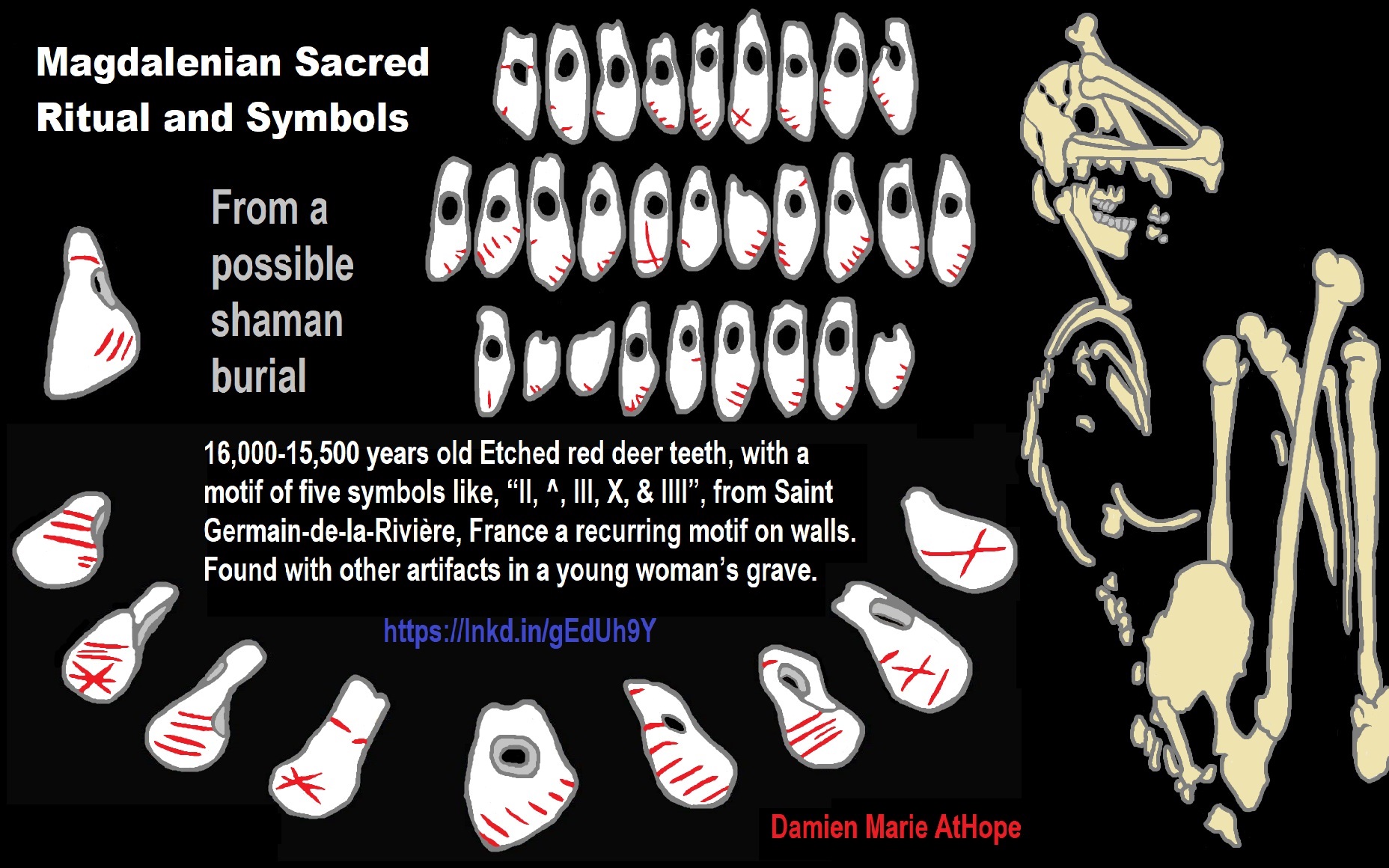

There are other clothing resembling miniskirts that have been identified by archaeologists and historians as far back as 3,390–3,370 years ago. But this is much older. ref
Leopard claw-bone pendant from the Possible Woman Shaman/Priestess burial with the plastered and painted woman’s head in her arms that is several generations removed. She was buried under the floor of the history house (house with multiple burials beyond that of the connected family) with the twin facing leopards at Catal Huyuk. Ref
“From about 7500 B.C.E to 5700 B.C.E., early farmers grew wheat, barley, and peas, and raised sheep, goats, and cattle. At its height, some 10,000 people lived there. Among its more noteworthy features, Çatalhöyük’s inhabitants were obsessed with plaster, lining their walls with it, using it as a canvas for artwork, and even coating the skulls of their dead to recreate the lifelike countenances of their loved ones.” ref
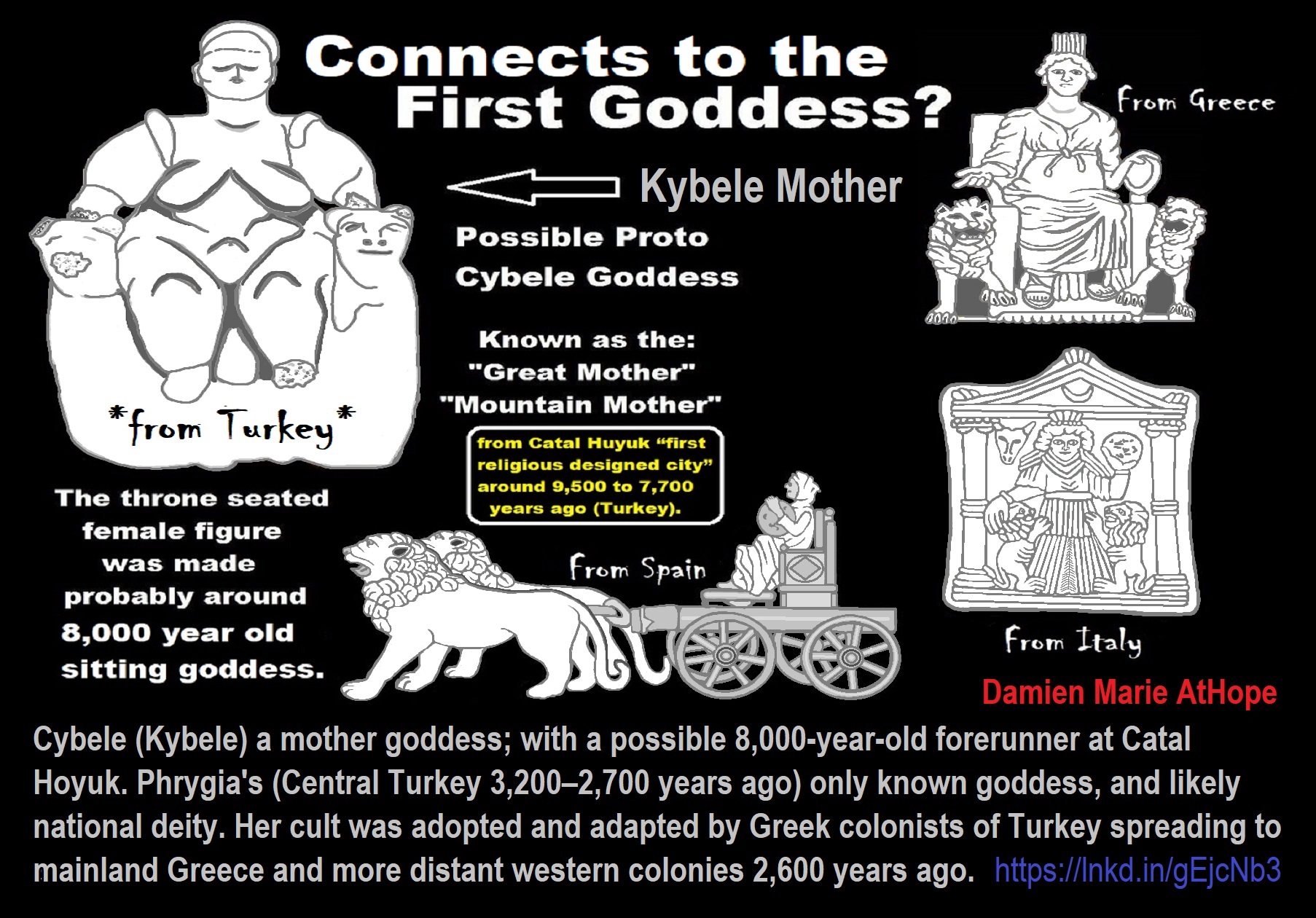
Seated Woman of Çatalhöyük
“The Seated Woman of Çatalhöyük (also Çatal Höyük) is a baked-clay, nude female form, seated between feline-headed arm-rests. It is generally thought to depict a corpulent and fertile Mother goddess in the process of giving birth while seated on her throne, which has two hand rests in the form of feline (lioness, leopard, or panther) heads in a Mistress of Animals motif. The statuette, one of several iconographically similar ones found at the site, is associated to other corpulent prehistoric goddess figures, of which the most famous is the Venus of Willendorf. It is a neolithic sculpture shaped by an unknown artist, and was completed in approximately 6000 BCE.” ref
Kubaba
“Kubaba is the only queen on the Sumerian King List, which states she reigned for 100 years – roughly in the Early Dynastic III period (ca. 2500–2330 BCE) of Sumerian history. A connection between her and a goddess known from Hurro–Hittite and later Luwian sources cannot be established on the account of spatial and temporal differences. Kubaba is one of very few women to have ever ruled in their own right in Mesopotamian history. Most versions of the king list place her alone in her own dynasty, the 3rd Dynasty of Kish, following the defeat of Sharrumiter of Mari, but other versions combine her with the 4th dynasty, that followed the primacy of the king of Akshak. Before becoming monarch, the king list says she was an alewife, brewess or brewster, terms for a woman who brewed alcohol.” ref
“Kubaba was a Syrian goddess associated particularly closely with Alalakh and Carchemish. She was adopted into the Hurrian and Hittite pantheons as well. After the fall of the Hittite empire, she continued to be venerated by Luwians. A connection between her and the similarly named legendary Sumerian queen Kubaba of Kish, while commonly proposed, cannot be established due to spatial and temporal differences. Emmanuel Laroche proposed in 1960 that Kubaba and Cybele were one and the same. This view is supported by Mark Munn, who argues that the Phrygian name Kybele developed from Lydian adjective kuvavli, first changed into kubabli and then simplified into kuballi, and finally kubelli. However, such an adjective is a purely speculative construction.” ref
Cybele
“Cybele (Phrygian: “Kubileya/Kubeleya Mother”, perhaps “Mountain Mother”) is an Anatolian mother goddess; she may have a possible forerunner in the earliest neolithic at Çatalhöyük, where statues of plump women, sometimes sitting, have been found in excavations. Phrygia‘s only known goddess, she was probably its national deity. Greek colonists in Asia Minor adopted and adapted her Phrygian cult and spread it to mainland Greece and to the more distant western Greek colonies around the 6th century BCE. In Greece, Cybele met with a mixed reception. She became partially assimilated to aspects of the Earth-goddess Gaia, of her possibly Minoan equivalent Rhea, and of the harvest–mother goddess Demeter. Some city-states, notably Athens, evoked her as a protector, but her most celebrated Greek rites and processions show her as an essentially foreign, exotic mystery-goddess who arrives in a lion-drawn chariot to the accompaniment of wild music, wine, and a disorderly, ecstatic following.” ref
“Uniquely in Greek religion, she had a eunuch mendicant priesthood. Many of her Greek cults included rites to a divine Phrygian castrate shepherd-consort Attis, who was probably a Greek invention. In Greece, Cybele became associated with mountains, town and city walls, fertile nature, and wild animals, especially lions. In Rome, Cybele became known as Magna Mater (“Great Mother”). The Roman State adopted and developed a particular form of her cult after the Sibylline oracle in 205 BCE recommended her conscription as a key religious ally in Rome’s second war against Carthage (218 to 201 BCE). Roman mythographers reinvented her as a Trojan goddess, and thus an ancestral goddess of the Roman people by way of the Trojan prince Aeneas. As Rome eventually established hegemony over the Mediterranean world, Romanized forms of Cybele’s cults spread throughout Rome’s empire. Greek and Roman writers debated and disputed the meaning and morality of her cults and priesthoods, which remain controversial subjects in modern scholarship.” ref
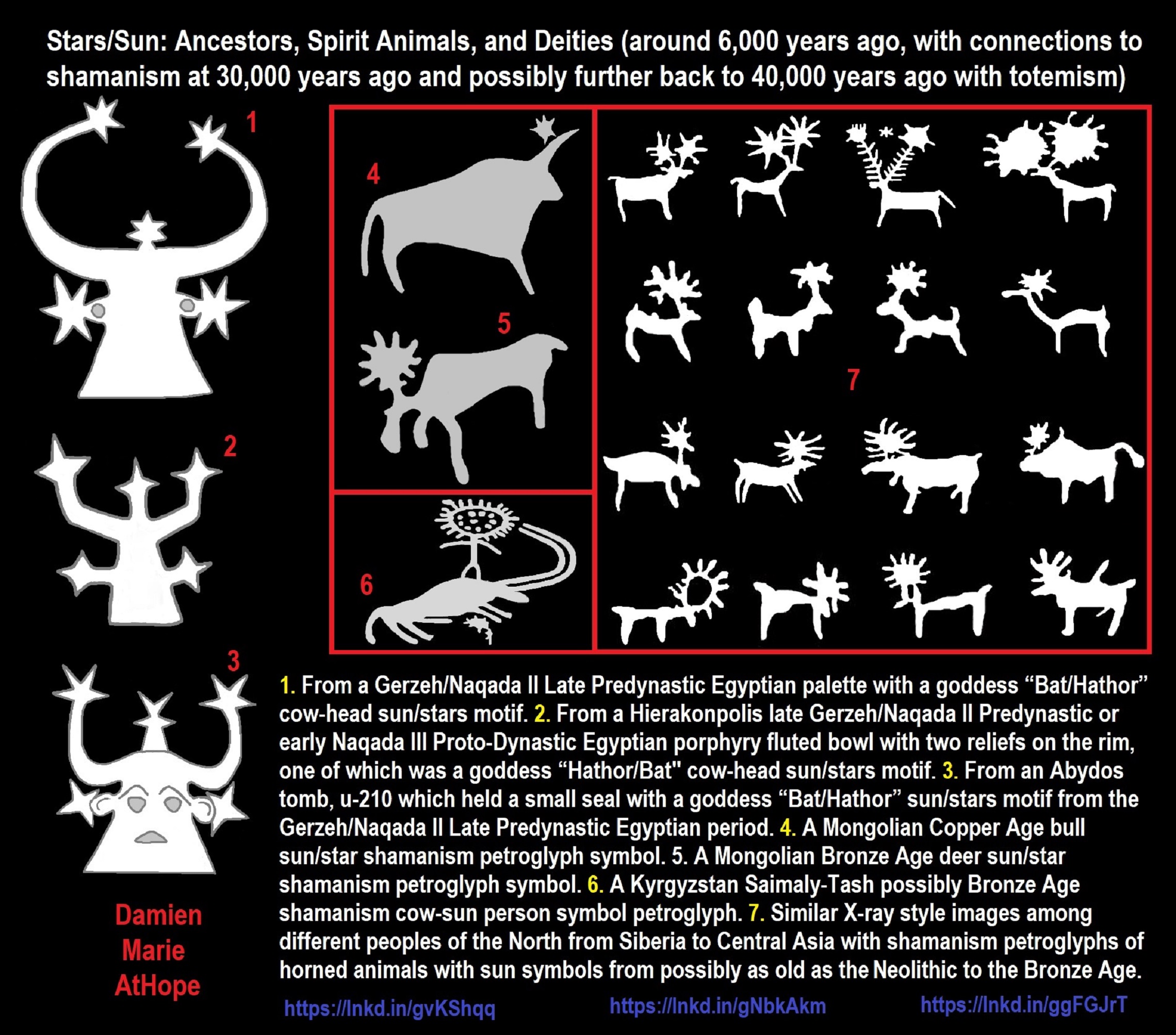
- From a Gerzeh/Naqada II Late Predynastic Egyptian palette with a goddess “Bat/Hathor” cow-head sun/stars motif.
- From a Hierakonpolis late Gerzeh/Naqada II Predynastic or early Naqada III Proto-Dynastic Egyptian porphyry fluted bowl with two reliefs on the rim, one of which was a goddess “Hathor/Bat” cow-head sun/stars motif.
- From an Abydos tomb, u-210 which held a small seal with a goddess “Bat/Hathor” sun/stars motif from the Gerzeh/Naqada II Late Predynastic Egyptian period.
- A Mongolian Copper Age bull sun/star shamanism petroglyph
- A Mongolian Bronze Age deer sun/star shamanism petroglyph symbol.
- A Kyrgyzstan Saimaly-Tash possibly Bronze Age shamanism cow-sun person symbol petroglyph.
- Similar X-ray style images among different peoples of the North from Siberia to Central Asia with shamanism petroglyphs of horned animals with sun symbols from possibly as old as the Neolithic to the Bronze Age. ref, ref, ref

Ritual Pointillism, to me, references stars/ancestor worship in Aurignacian culture totemism, which I think relates to the Neanderthal Châtelperronian culture totemism. There was 16 engraved and otherwise modified limestone blocks, created 38,000 years ago, pointillist techniques: small dots to create the illusion of a larger image. ref

ref, ref, ref, ref, ref, ref, ref, ref, ref, ref
Lajja Gauri Style
- Lajja Gauri. China, Majiayao. 3,200-2,000 BCE or around 5,220 to 4,020 years ago. ref
- Lajja Gauri. India, Kashmir. ref
- Lajja Gauri. Egypt. ref
- Lajjā Gaurī a lotus-headed Hindu goddess. ref
- Lajja Gauri. Nepal. ref
- Lajjā Gaurī lotus-headed goddess. India. ref
Sheela na gig Style

ref, ref, ref, ref, ref, ref, ref, ref, ref, ref, ref, ref, ref, ref, ref, ref, ref, ref, ref, ref, ref, ref, ref, ref, ref, ref, ref, ref, ref, ref, ref, ref, ref, ref, ref, ref, ref, ref, ref, ref, ref, ref, ref, ref, ref, ref, ref, ref, ref, ref, ref, ref, ref, ref, ref, ref, ref, ref, ref, ref, ref, ref, ref, ref, ref, ref, ref, ref, ref, ref, ref, ref, ref, ref, ref, ref, ref, ref, ref, ref, ref, ref, ref, ref, ref, ref, ref, ref, ref, ref

ref, ref, ref, ref, ref, ref, ref, ref, ref, ref, ref, ref, ref, ref, ref, ref, ref
“The shaman is, above all, a connecting figure, bridging several worlds for his people, traveling between this world, the underworld, and the heavens. He transforms himself into an animal and talks with ghosts, the dead, the deities, and the ancestors. He dies and revives. He brings back knowledge from the shadow realm, thus linking his people to the spirits and places which were once mythically accessible to all.–anthropologist Barbara Meyerhoff” ref
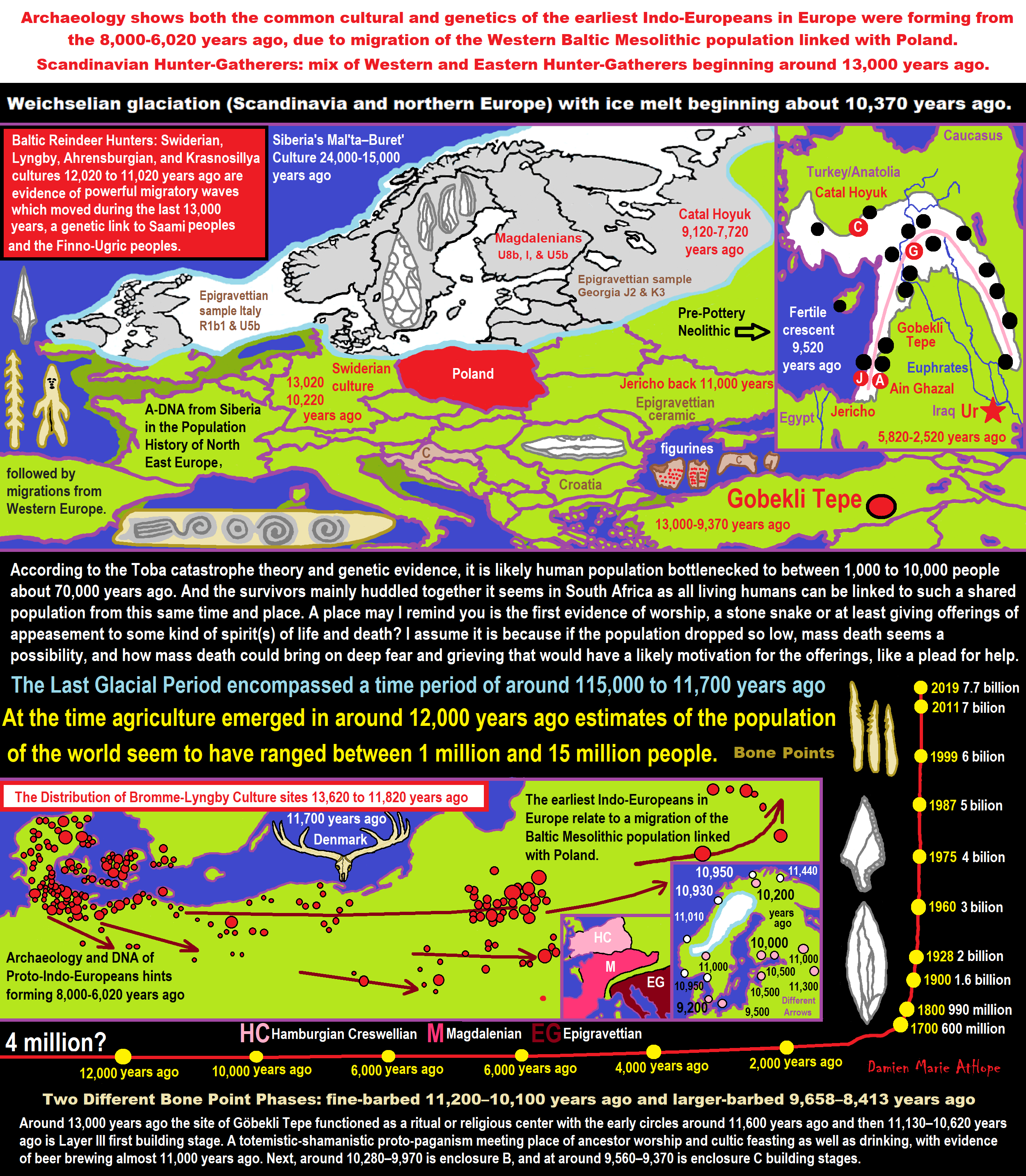
ref, ref, ref, ref, ref, ref, ref, ref, ref, ref, ref, ref, ref, ref, ref, ref, ref, ref, ref, ref, ref, ref, ref, ref, ref, ref, ref, ref, ref, ref, ref, ref, ref, ref, ref, ref, ref, ref, ref, ref, ref, ref
Archaeology shows both the common culture and genetics of the earliest Indo-Europeans in Europe were forming from the 8,000-6,020 years ago, due to migration of the Western Baltic Mesolithic population linked with Poland. Scandinavian Hunter-Gatherers: mix of Western and Eastern Hunter-Gatherers beginning around 13,000 years ago.
Baltic Reindeer Hunters: Swiderian, Lyngby, Ahrensburgian, and Krasnosillya cultures 12,020 to 11,020 years ago are evidence of powerful migratory waves during the last 13,000 years and a genetic link to Saami and the Finno-Ugric peoples. Two Different Bone Point Phases: fine-barbed 11,200–10,100 years ago and larger-barbed 9,658–8,413 years ago.
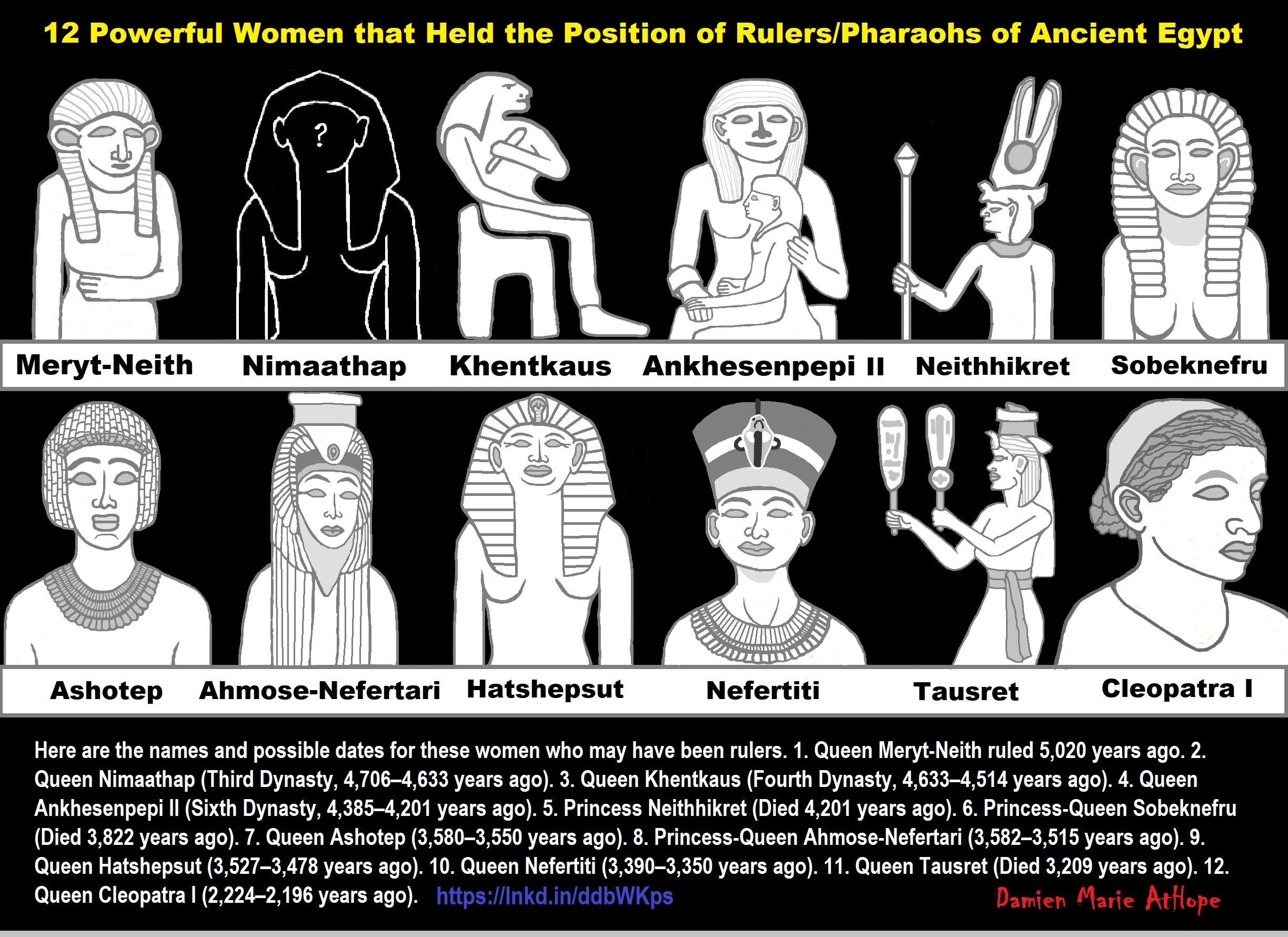
ref, ref, ref, ref, ref, ref, ref, ref, ref, ref, ref, ref, ref, ref, ref, ref
12 Powerful Women that Held the Position of Rulers/Pharaohs of Ancient Egypt
Here are the names and possible dates for these women who may have been rulers. 1. Queen Meryt-Neith ruled 5,020 years ago. 2. Queen Nimaathap (Third Dynasty, 4,706–4,633 years ago). 3. Queen Khentkaus (Fourth Dynasty, 4,633–4,514 years ago). 4. Queen Ankhesenpepi II (Sixth Dynasty, 4,385–4,201 years ago). 5. Princess Neithhikret (Died 4,201 years ago). 6. Princess-Queen Sobeknefru (Died 3,822 years ago). 7. Queen Ashotep (3,580–3,550 years ago). 8. Princess-Queen Ahmose-Nefertari (3,582–3,515 years ago). 9. Queen Hatshepsut (3,527–3,478 years ago). 10. Queen Nefertiti (3,390–3,350 years ago). 11. Queen Tausret (Died 3,209 years ago). 12. Queen Cleopatra I (2,224–2,196 years ago).
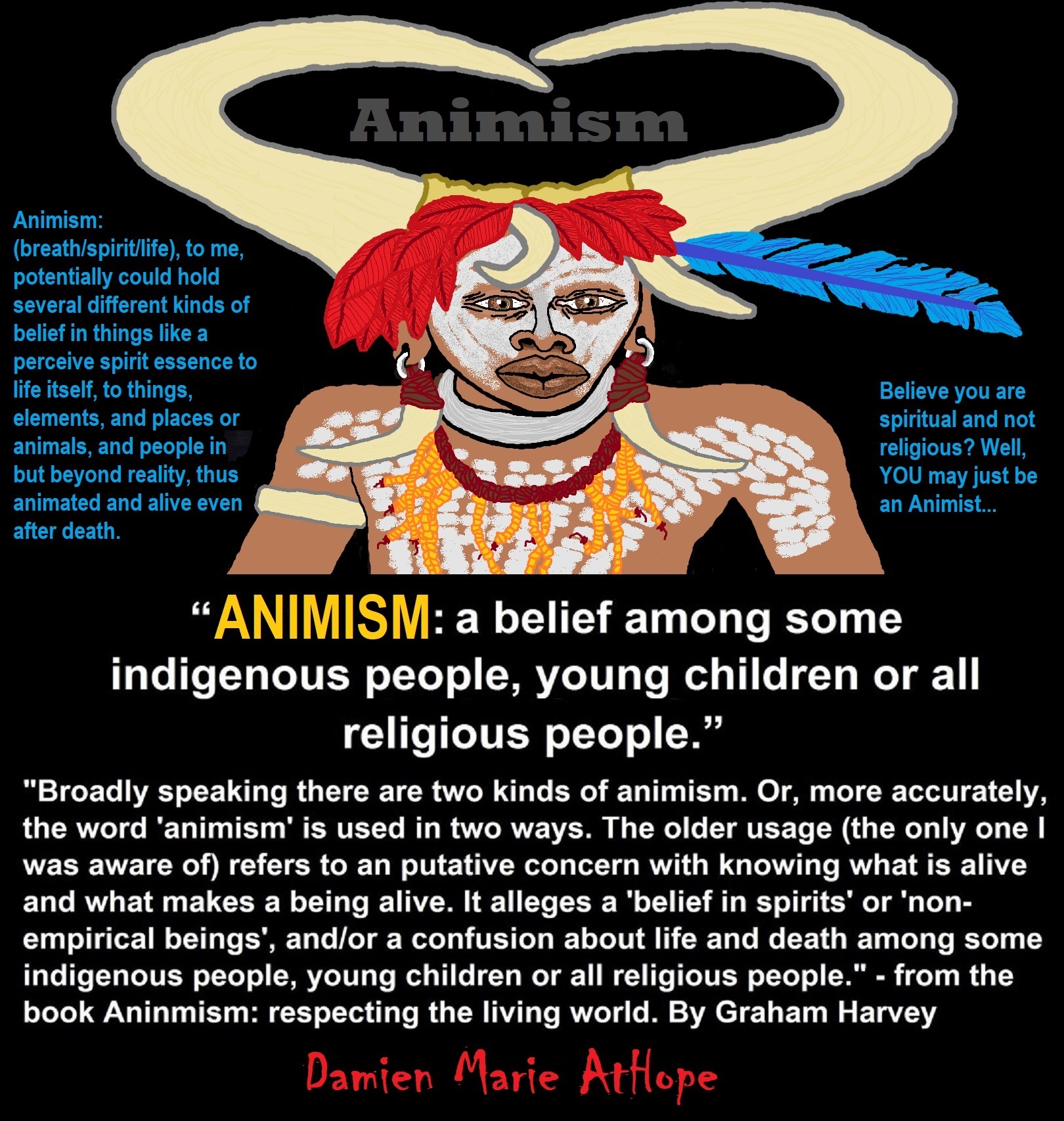
Animism: Respecting the Living World by Graham Harvey
“How have human cultures engaged with and thought about animals, plants, rocks, clouds, and other elements in their natural surroundings? Do animals and other natural objects have a spirit or soul? What is their relationship to humans? In this new study, Graham Harvey explores current and past animistic beliefs and practices of Native Americans, Maori, Aboriginal Australians, and eco-pagans. He considers the varieties of animism found in these cultures as well as their shared desire to live respectfully within larger natural communities. Drawing on his extensive casework, Harvey also considers the linguistic, performative, ecological, and activist implications of these different animisms.” ref

My thoughts on Religion Evolution with external links for more info:
- (Pre-Animism Africa mainly, but also Europe, and Asia at least 300,000 years ago), (Pre-Animism – Oxford Dictionaries)
- (Animism Africa around 100,000 years ago), (Animism – Britannica.com)
- (Totemism Europe around 50,000 years ago), (Totemism – Anthropology)
- (Shamanism Siberia around 30,000 years ago), (Shamanism – Britannica.com)
- (Paganism Turkey around 12,000 years ago), (Paganism – BBC Religion)
- (Progressed Organized Religion “Institutional Religion” Egypt around 5,000 years ago), (Ancient Egyptian Religion – Britannica.com)
- (CURRENT “World” RELIGIONS after 4,000 years ago) (Origin of Major Religions – Sacred Texts)
- (Early Atheistic Doubting at least by 2,600 years ago) (History of Atheism – Wikipedia)
“Religion is an Evolved Product” and Yes, Religion is Like Fear Given Wings…
Atheists talk about gods and religions for the same reason doctors talk about cancer, they are looking for a cure, or a firefighter talks about fires because they burn people and they care to stop them. We atheists too often feel a need to help the victims of mental slavery, held in the bondage that is the false beliefs of gods and the conspiracy theories of reality found in religions.
Understanding Religion Evolution:
- Pre-Animism (at least 300,000 years ago)
- Animism (Africa: 100,000 years ago)
- Totemism (Europe: 50,000 years ago)
- Shamanism (Siberia: 30,000 years ago)
- Paganism (Turkey: 12,000 years ago)
- Progressed organized religion (Egypt: 5,000 years ago), (Egypt, the First Dynasty 5,150 years ago)
- CURRENT “World” RELIGIONS (after 4,000 years ago)
- Early Atheistic Doubting (at least by 2,600 years ago)
“An Archaeological/Anthropological Understanding of Religion Evolution”
It seems ancient peoples had to survived amazing threats in a “dangerous universe (by superstition perceived as good and evil),” and human “immorality or imperfection of the soul” which was thought to affect the still living, leading to ancestor worship. This ancestor worship presumably led to the belief in supernatural beings, and then some of these were turned into the belief in gods. This feeble myth called gods were just a human conceived “made from nothing into something over and over, changing, again and again, taking on more as they evolve, all the while they are thought to be special,” but it is just supernatural animistic spirit-belief perceived as sacred.
Quick Evolution of Religion?
Pre-Animism (at least 300,000 years ago) pre-religion is a beginning that evolves into later Animism. So, Religion as we think of it, to me, all starts in a general way with Animism (Africa: 100,000 years ago) (theoretical belief in supernatural powers/spirits), then this is physically expressed in or with Totemism (Europe: 50,000 years ago) (theoretical belief in mythical relationship with powers/spirits through a totem item), which then enlists a full-time specific person to do this worship and believed interacting Shamanism (Siberia/Russia: 30,000 years ago) (theoretical belief in access and influence with spirits through ritual), and then there is the further employment of myths and gods added to all the above giving you Paganism (Turkey: 12,000 years ago) (often a lot more nature-based than most current top world religions, thus hinting to their close link to more ancient religious thinking it stems from). My hypothesis is expressed with an explanation of the building of a theatrical house (modern religions development). Progressed organized religion (Egypt: 5,000 years ago) with CURRENT “World” RELIGIONS (after 4,000 years ago).
Historically, in large city-state societies (such as Egypt or Iraq) starting around 5,000 years ago culminated to make religion something kind of new, a sociocultural-governmental-religious monarchy, where all or at least many of the people of such large city-state societies seem familiar with and committed to the existence of “religion” as the integrated life identity package of control dynamics with a fixed closed magical doctrine, but this juggernaut integrated religion identity package of Dogmatic-Propaganda certainly did not exist or if developed to an extent it was highly limited in most smaller prehistoric societies as they seem to lack most of the strong control dynamics with a fixed closed magical doctrine (magical beliefs could be at times be added or removed). Many people just want to see developed religious dynamics everywhere even if it is not. Instead, all that is found is largely fragments until the domestication of religion.
Religions, as we think of them today, are a new fad, even if they go back to around 6,000 years in the timeline of human existence, this amounts to almost nothing when seen in the long slow evolution of religion at least around 70,000 years ago with one of the oldest ritual worship. Stone Snake of South Africa: “first human worship” 70,000 years ago. This message of how religion and gods among them are clearly a man-made thing that was developed slowly as it was invented and then implemented peace by peace discrediting them all. Which seems to be a simple point some are just not grasping how devastating to any claims of truth when we can see the lie clearly in the archeological sites.
I wish people fought as hard for the actual values as they fight for the group/clan names political or otherwise they think support values. Every amount spent on war is theft to children in need of food or the homeless kept from shelter.
Here are several of my blog posts on history:
- To Find Truth You Must First Look
- (Magdalenian/Iberomaurusian) Connections to the First Paganists of the early Neolithic Near East Dating from around 17,000 to 12,000 Years Ago
- Natufians: an Ancient People at the Origins of Agriculture and Sedentary Life
- Possible Clan Leader/Special “MALE” Ancestor Totem Poles At Least 13,500 years ago?
- Jewish People with DNA at least 13,200 years old, Judaism, and the Origins of Some of its Ideas
- Baltic Reindeer Hunters: Swiderian, Lyngby, Ahrensburgian, and Krasnosillya cultures 12,020 to 11,020 years ago are evidence of powerful migratory waves during the last 13,000 years and a genetic link to Saami and the Finno-Ugric peoples.
- The Rise of Inequality: patriarchy and state hierarchy inequality
- Fertile Crescent 12,500 – 9,500 Years Ago: fertility and death cult belief system?
- 12,400 – 11,700 Years Ago – Kortik Tepe (Turkey) Pre/early-Agriculture Cultic Ritualism
- Ritualistic Bird Symbolism at Gobekli Tepe and its “Ancestor Cult”
- Male-Homosexual (female-like) / Trans-woman (female) Seated Figurine from Gobekli Tepe
- Could a 12,000-year-old Bull Geoglyph at Göbekli Tepe relate to older Bull and Female Art 25,000 years ago and Later Goddess and the Bull cults like Catal Huyuk?
- Sedentism and the Creation of goddesses around 12,000 years ago as well as male gods after 7,000 years ago.
- Alcohol, where Agriculture and Religion Become one? Such as Gobekli Tepe’s Ritualistic use of Grain as Food and Ritual Drink
- Neolithic Ritual Sites with T-Pillars and other Cultic Pillars
- Paganism: Goddesses around 12,000 years ago then Male Gods after 7,000 years ago
- First Patriarchy: Split of Women’s Status around 12,000 years ago & First Hierarchy: fall of Women’s Status around 5,000 years ago.
- Natufians: an Ancient People at the Origins of Agriculture and Sedentary Life
- J DNA and the Spread of Agricultural Religion (paganism)
- Paganism: an approximately 12,000-year-old belief system
- Paganism 12,000 years old: related to “Anarchism and Socialism” (Pre-Capitalism)
- Shaman burial in Israel 12,000 years ago and the Shamanism Phenomena
- Need to Mythicized: gods and goddesses
- 12,000 – 7,000 Years Ago – Paleo-Indian Culture (The Americas)
- 12,000 – 2,000 Years Ago – Indigenous-Scandinavians (Nordic)
- Norse did not wear helmets with horns?
- Pre-Pottery Neolithic Skull Cult around 11,500 to 8,400 Years Ago?
- 10,400 – 10,100 Years Ago, in Turkey the Nevail Cori Religious Settlement
- 9,000-6,500 Years Old Submerged Pre-Pottery/Pottery Neolithic Ritual Settlements off Israel’s Coast
- Catal Huyuk “first religious designed city” around 9,500 to 7,700 years ago (Turkey)
- Cultic Hunting at Catal Huyuk “first religious designed city”
- Special Items and Art as well as Special Elite Burials at Catal Huyuk
- New Rituals and Violence with the appearance of Pottery and People?
- Haplogroup N and its related Uralic Languages and Cultures
- Ainu people, Sámi people, Native Americans, the Ancient North Eurasians, and Paganistic-Shamanism with Totemism
- Ideas, Technology and People from Turkey, Europe, to China and Back again 9,000 to 5,000 years ago?
- First Pottery of Europe and the Related Cultures
- 9,000 years old Neolithic Artifacts Judean Desert and Hills Israel
- 9,000-7,000 years-old Sex and Death Rituals: Cult Sites in Israel, Jordan, and the Sinai
- 9,000-8500 year old Horned Female shaman Bad Dürrenberg Germany
- Neolithic Jewelry and the Spread of Farming in Europe Emerging out of West Turkey
- 8,600-year-old Tortoise Shells in Neolithic graves in central China have Early Writing and Shamanism
- Swing of the Mace: the rise of Elite, Forced Authority, and Inequality begin to Emerge 8,500 years ago?
- Migrations and Changing Europeans Beginning around 8,000 Years Ago
- My “Steppe-Anatolian-Kurgan hypothesis” 8,000/7,000 years ago
- Around 8,000-year-old Shared Idea of the Mistress of Animals, “Ritual” Motif
- Pre-Columbian Red-Paint (red ochre) Maritime Archaic Culture 8,000-3,000 years ago
- 7,522-6,522 years ago Linear Pottery culture which I think relates to Arcane Capitalism’s origins
- Arcane Capitalism: Primitive socialism, Primitive capital, Private ownership, Means of production, Market capitalism, Class discrimination, and Petite bourgeoisie (smaller capitalists)
- 7,500-4,750 years old Ritualistic Cucuteni-Trypillian culture of Moldova, Romania, and Ukraine
- Roots of a changing early society 7,200-6,700 years ago Jordan and Israel
- Agriculture religion (Paganism) with farming reached Britain between about 7,000 to 6,500 or so years ago and seemingly expressed in things like Western Europe’s Long Barrows
- My Thoughts on Possible Migrations of “R” DNA and Proto-Indo-European?
- “Millet” Spreading from China 7,022 years ago to Europe and related Language may have Spread with it leading to Proto-Indo-European
- Proto-Indo-European (PIE), ancestor of Indo-European languages: DNA, Society, Language, and Mythology
- The Dnieper–Donets culture and Asian varieties of Millet from China to the Black Sea region of Europe by 7,022 years ago
- Kurgan 6,000 years ago/dolmens 7,000 years ago: funeral, ritual, and other?
- 7,020 to 6,020-year-old Proto-Indo-European Homeland of Urheimat or proposed home of their Language and Religion
- Ancient Megaliths: Kurgan, Ziggurat, Pyramid, Menhir, Trilithon, Dolman, Kromlech, and Kromlech of Trilithons
- The Mytheme of Ancient North Eurasian Sacred-Dog belief and similar motifs are found in Indo-European, Native American, and Siberian comparative mythology
- Elite Power Accumulation: Ancient Trade, Tokens, Writing, Wealth, Merchants, and Priest-Kings
- Sacred Mounds, Mountains, Kurgans, and Pyramids may hold deep connections?
- Between 7,000-5,000 Years ago, rise of unequal hierarchy elite, leading to a “birth of the State” or worship of power, strong new sexism, oppression of non-elites, and the fall of Women’s equal status
- Paganism 7,000-5,000 years old: related to “Anarchism and Socialism” (Capitalism) (World War 0) Elite & their slaves
- Hell and Underworld mythologies starting maybe as far back as 7,000 to 5,000 years ago with the Proto-Indo-Europeans?
- The First Expression of the Male God around 7,000 years ago?
- White (light complexion skin) Bigotry and Sexism started 7,000 years ago?
- Around 7,000-year-old Shared Idea of the Divine Bird (Tutelary and/or Trickster spirit/deity), “Ritual” Motif
- Nekhbet an Ancient Egyptian Vulture Goddess and Tutelary Deity
- 6,720 to 4,920 years old Ritualistic Hongshan Culture of Inner Mongolia with 5,000-year-old Pyramid Mounds and Temples
- First proto-king in the Balkans, Varna culture around 6,500 years ago?
- 6,500–5,800 years ago in Israel Late Chalcolithic (Copper Age) Period in the Southern Levant Seems to Express Northern Levant Migrations, Cultural and Religious Transfer
- KING OF BEASTS: Master of Animals “Ritual” Motif, around 6,000 years old or older…
- Around 6000-year-old Shared Idea of the Solid Wheel & the Spoked Wheel-Shaped Ritual Motif
- “The Ghassulian Star,” a mysterious 6,000-year-old mural from Jordan; a Proto-Star of Ishtar, Star of Inanna or Star of Venus?
- Religious/Ritual Ideas, including goddesses and gods as well as ritual mounds or pyramids from Northeastern Asia at least 6,000 years old, seemingly filtering to Iran, Iraq, the Mediterranean, Europe, Egypt, and the Americas?
- Maykop (5,720–5,020 years ago) Caucasus region Bronze Age culture-related to Copper Age farmers from the south, influenced by the Ubaid period and Leyla-Tepe culture, as well as influencing the Kura-Araxes culture
- 5-600-year-old Tomb, Mummy, and First Bearded Male Figurine in a Grave
- Kura-Araxes Cultural 5,520 to 4,470 years old DNA traces to the Canaanites, Arabs, and Jews
- Minoan/Cretan (Keftiu) Civilization and Religion around 5,520 to 3,120 years ago
- Evolution Of Science at least by 5,500 years ago
- 5,500 Years old birth of the State, the rise of Hierarchy, and the fall of Women’s status
- “Jiroft culture” 5,100 – 4,200 years ago and the History of Iran
- Stonehenge: Paganistic Burial and Astrological Ritual Complex, England (5,100-3,600 years ago)
- Around 5,000-year-old Shared Idea of the “Tree of Life” Ritual Motif
- Complex rituals for elite, seen from China to Egypt, at least by 5,000 years ago
- Around 5,000 years ago: “Birth of the State” where Religion gets Military Power and Influence
- The Center of the World “Axis Mundi” and/or “Sacred Mountains” Mythology Could Relate to the Altai Mountains, Heart of the Steppe
- Progressed organized religion starts, an approximately 5,000-year-old belief system
- China’s Civilization between 5,000-3,000 years ago, was a time of war and class struggle, violent transition from free clans to a Slave or Elite society
- Origin of Logics is Naturalistic Observation at least by around 5,000 years ago.
- Paganism 5,000 years old: progressed organized religion and the state: related to “Anarchism and Socialism” (Kings and the Rise of the State)
- Ziggurats (multi-platform temples: 4,900 years old) to Pyramids (multi-platform tombs: 4,700 years old)
- Did a 4,520–4,420-year-old Volcano In Turkey Inspire the Bible God?
- Finland’s Horned Shaman and Pre-Horned-God at least 4,500 years ago?
- 4,000-year-Old Dolmens in Israel: A Connected Dolmen Religious Phenomenon?
- Creation myths: From chaos, Ex nihilo, Earth-diver, Emergence, World egg, and World parent
- Bronze Age “Ritual” connections of the Bell Beaker culture with the Corded Ware/Single Grave culture, which were related to the Yamnaya culture and Proto-Indo-European Languages/Religions
- Low Gods (Earth/ Tutelary deity), High Gods (Sky/Supreme deity), and Moralistic Gods (Deity enforcement/divine order)
- The exchange of people, ideas, and material-culture including, to me, the new god (Sky Father) and goddess (Earth Mother) religion between the Cucuteni-Trypillians and others which is then spread far and wide
- Koryaks: Indigenous People of the Russian Far East and Big Raven myths also found in Tlingit, Haida, Tsimshian, and other Indigenous People of North America
- 42 Principles Of Maat (Egyptian Goddess of the justice) around 4,400 years ago, 2000 Years Before Ten Commandments
- “Happy Easter” Well Happy Eostre/Ishter
- 4,320-3,820 years old “Shimao” (North China) site with Totemistic-Shamanistic Paganism and a Stepped Pyramid
- 4,250 to 3,400 Year old Stonehenge from Russia: Arkaim?
- 4,100-year-old beaker with medicinal & flowering plants in a grave of a woman in Scotland
- Early European Farmer ancestry, Kelif el Boroud people with the Cardial Ware culture, and the Bell Beaker culture Paganists too, spread into North Africa, then to the Canary Islands off West Africa
- Flood Accounts: Gilgamesh epic (4,100 years ago) Noah in Genesis (2,600 years ago)
- Paganism 4,000 years old: related to “Anarchism and Socialism” (First Moralistic gods, then the Origin time of Monotheism)
- When was the beginning: TIMELINE OF CURRENT RELIGIONS, which start around 4,000 years ago.
- Early Religions Thought to Express Proto-Monotheistic Systems around 4,000 years ago
- Kultepe? An archaeological site with a 4,000 years old women’s rights document.
- Single God Religions (Monotheism) = “Man-o-theism” started around 4,000 years ago with the Great Sky Spirit/God Tiān (天)?
- Confucianism’s Tiān (Shangdi god 4,000 years old): Supernaturalism, Pantheism or Theism?
- Yes, Your Male God is Ridiculous
- Mythology, a Lunar Deity is a Goddess or God of the Moon
- Sacred Land, Hills, and Mountains: Sami Mythology (Paganistic Shamanism)
- Horse Worship/Sacrifice: mythical union of Ruling Elite/Kingship and the Horse
- The Amorite/Amurru people’s God Amurru “Lord of the Steppe”, relates to the Origins of the Bible God?
- Bronze Age Exotic Trade Routes Spread Quite Far as well as Spread Religious Ideas with Them
- Sami and the Northern Indigenous Peoples Landscape, Language, and its Connection to Religion
- Prototype of Ancient Analemmatic Sundials around 3,900-3,150 years ago and a Possible Solar Connection to gods?
- Judaism is around 3,450 or 3,250 years old. (“Paleo-Hebrew” 3,000 years ago and Torah 2,500 years ago)
- The Weakening of Ancient Trade and the Strengthening of Religions around 3000 years ago?
- Are you aware that there are religions that worship women gods, explain now religion tears women down?
- Animistic, Totemistic, and Paganistic Superstition Origins of bible god and the bible’s Religion.
- Myths and Folklore: “Trickster gods and goddesses”
- Jews, Judaism, and the Origins of Some of its Ideas
- An Old Branch of Religion Still Giving Fruit: Sacred Trees
- Dating the BIBLE: naming names and telling times (written less than 3,000 years ago, provable to 2,200 years ago)
- Did a Volcano Inspire the bible god?
- The Amorite/Amurru people’s God Amurru “Lord of the Steppe”, relates to the Origins of the Bible God?
- Dené–Yeniseian language, Old Copper Complex, and Pre-Columbian Mound Builders?
- No “dinosaurs and humans didn’t exist together just because some think they are in the bible itself”
- Sacred Shit and Sacred Animals?
- Everyone Killed in the Bible Flood? “Nephilim” (giants)?
- Hey, Damien dude, I have a question for you regarding “the bible” Exodus.
- Archaeology Disproves the Bible
- Bible Battle, Just More, Bible Babble
- The Jericho Conquest lie?
- Canaanites and Israelites?
- Accurate Account on how did Christianity Began?
- Let’s talk about Christianity.
- So the 10 commandments isn’t anything to go by either right?
- Misinformed christian
- Debunking Jesus?
- Paulism vs Jesus
- Ok, you seem confused so let’s talk about Buddhism.
- Unacknowledged Buddhism: Gods, Savior, Demons, Rebirth, Heavens, Hells, and Terrorism
- His Foolishness The Dalai Lama
- Yin and Yang is sexist with an ORIGIN around 2,300 years ago?
- I Believe Archaeology, not Myths & Why Not, as the Religious Myths Already Violate Reason!
- Archaeological, Scientific, & Philosophic evidence shows the god myth is man-made nonsense.
- Aquatic Ape Theory/Hypothesis? As Always, Just Pseudoscience.
- Ancient Aliens Conspiracy Theorists are Pseudohistorians
- The Pseudohistoric and Pseudoscientific claims about “Bakoni Ruins” of South Africa
- Why do people think Religion is much more than supernaturalism and superstitionism?
- Religion is an Evolved Product
- Was the Value of Ancient Women Different?
- 1000 to 1100 CE, human sacrifice Cahokia Mounds a pre-Columbian Native American site
- Feminist atheists as far back as the 1800s?
- Promoting Religion as Real is Mentally Harmful to a Flourishing Humanity
- Screw All Religions and Their Toxic lies, they are all fraud
- Forget Religions’ Unfounded Myths, I Have Substantiated “Archaeology Facts.”
- Religion Dispersal throughout the World
- I Hate Religion Just as I Hate all Pseudoscience
- Exposing Scientology, Eckankar, Wicca and Other Nonsense?
- Main deity or religious belief systems
- Quit Trying to Invent Your God From the Scraps of Science.
- Archaeological, Scientific, & Philosophic evidence shows the god myth is man-made nonsense.
- Ancient Alien Conspiracy Theorists: Misunderstanding, Rhetoric, Misinformation, Fabrications, and Lies
- Misinformation, Distortion, and Pseudoscience in Talking with a Christian Creationist
- Judging the Lack of Goodness in Gods, Even the Norse God Odin
- Challenging the Belief in God-like Aliens and Gods in General
- A Challenge to Christian use of Torture Devices?
- Yes, Hinduism is a Religion
- Trump is One of the Most Reactionary Forces of Far-right Christian Extremism
- Was the Bull Head a Symbol of God? Yes!
- Primate Death Rituals
- Christian – “God and Christianity are objectively true”
- Australopithecus afarensis Death Ritual?
- You Claim Global Warming is a Hoax?
- Doubter of Science and Defamer of Atheists?
- I think that sounds like the Bible?
- History of the Antifa (“anti-fascist”) Movements
- Indianapolis Anti-Blasphemy Laws #Free Soheil Rally
- Damien, you repeat the golden rule in so many forms then you say religion is dogmatic?
- Science is a Trustable Methodology whereas Faith is not Trustable at all!
- Was I ever a believer, before I was an atheist?
- Atheists rise in reason
- Mistrust of science?
- Open to Talking About the Definition of ‘God’? But first, we address Faith.
- ‘United Monarchy’ full of splendor and power – Saul, David, and Solomon? Most likely not.
- Is there EXODUS ARCHAEOLOGY? The short answer is “no.”
- Lacking Proof of Bigfoots, Unicorns, and Gods is Just a Lack of Research?
- Religion and Politics: Faith Beliefs vs. Rational Thinking
- Hammer of Truth that lying pig RELIGION: challenged by an archaeologist
- “The Hammer of Truth” -ontology question- What do You Mean by That?
- Navigation of a bad argument: Ad Hominem vs. Attack
- Why is it Often Claimed that Gods have a Gender?
- Why are basically all monotheistic religions ones that have a male god?
- Shifting through the Claims in support of Faith
- Dear Mr. AtHope, The 20th Century is an Indictment of Secularism and a Failed Atheist Century
- An Understanding of the Worldwide Statistics and Dynamics of Terrorist Incidents and Suicide Attacks
- Intoxication and Evolution? Addressing and Assessing the “Stoned Ape” or “Drunken Monkey” Theories as Catalysts in Human Evolution
- Sacred Menstrual cloth? Inanna’s knot, Isis knot, and maybe Ma’at’s feather?
- Damien, why don’t the Hebrews accept the bible stories?
- Dealing with a Troll and Arguing Over Word Meaning
- Knowledge without Belief? Justified beliefs or disbeliefs worthy of Knowledge?
- Afrocentrism and African Religions
- Crecganford @crecganford offers history & stories of the people, places, gods, & culture
- Empiricism-Denier?
I am not an academic. I am a revolutionary that teaches in public, in places like social media, and in the streets. I am not a leader by some title given but from my commanding leadership style of simply to start teaching everywhere to everyone, all manner of positive education.



ref, ref, ref, ref, ref, ref, ref, ref, ref, ref, ref, ref, ref, ref, ref, ref, ref, ref, ref, ref, ref
Low Gods “Earth” or Tutelary deity and High Gods “Sky” or Supreme deity
“An Earth goddess is a deification of the Earth. Earth goddesses are often associated with the “chthonic” deities of the underworld. Ki and Ninhursag are Mesopotamian earth goddesses. In Greek mythology, the Earth is personified as Gaia, corresponding to Roman Terra, Indic Prithvi/Bhūmi, etc. traced to an “Earth Mother” complementary to the “Sky Father” in Proto-Indo-European religion. Egyptian mythology exceptionally has a sky goddess and an Earth god.” ref
“A mother goddess is a goddess who represents or is a personification of nature, motherhood, fertility, creation, destruction or who embodies the bounty of the Earth. When equated with the Earth or the natural world, such goddesses are sometimes referred to as Mother Earth or as the Earth Mother. In some religious traditions or movements, Heavenly Mother (also referred to as Mother in Heaven or Sky Mother) is the wife or feminine counterpart of the Sky father or God the Father.” ref
“Any masculine sky god is often also king of the gods, taking the position of patriarch within a pantheon. Such king gods are collectively categorized as “sky father” deities, with a polarity between sky and earth often being expressed by pairing a “sky father” god with an “earth mother” goddess (pairings of a sky mother with an earth father are less frequent). A main sky goddess is often the queen of the gods and may be an air/sky goddess in her own right, though she usually has other functions as well with “sky” not being her main. In antiquity, several sky goddesses in ancient Egypt, Mesopotamia, and the Near East were called Queen of Heaven. Neopagans often apply it with impunity to sky goddesses from other regions who were never associated with the term historically. The sky often has important religious significance. Many religions, both polytheistic and monotheistic, have deities associated with the sky.” ref
“In comparative mythology, sky father is a term for a recurring concept in polytheistic religions of a sky god who is addressed as a “father”, often the father of a pantheon and is often either a reigning or former King of the Gods. The concept of “sky father” may also be taken to include Sun gods with similar characteristics, such as Ra. The concept is complementary to an “earth mother“. “Sky Father” is a direct translation of the Vedic Dyaus Pita, etymologically descended from the same Proto-Indo-European deity name as the Greek Zeûs Pater and Roman Jupiter and Germanic Týr, Tir or Tiwaz, all of which are reflexes of the same Proto-Indo-European deity’s name, *Dyēus Ph₂tḗr. While there are numerous parallels adduced from outside of Indo-European mythology, there are exceptions (e.g. In Egyptian mythology, Nut is the sky mother and Geb is the earth father).” ref
Tutelary deity
“A tutelary (also tutelar) is a deity or spirit who is a guardian, patron, or protector of a particular place, geographic feature, person, lineage, nation, culture, or occupation. The etymology of “tutelary” expresses the concept of safety and thus of guardianship. In late Greek and Roman religion, one type of tutelary deity, the genius, functions as the personal deity or daimon of an individual from birth to death. Another form of personal tutelary spirit is the familiar spirit of European folklore.” ref
“A tutelary (also tutelar) in Korean shamanism, jangseung and sotdae were placed at the edge of villages to frighten off demons. They were also worshiped as deities. Seonangshin is the patron deity of the village in Korean tradition and was believed to embody the Seonangdang. In Philippine animism, Diwata or Lambana are deities or spirits that inhabit sacred places like mountains and mounds and serve as guardians. Such as: Maria Makiling is the deity who guards Mt. Makiling and Maria Cacao and Maria Sinukuan. In Shinto, the spirits, or kami, which give life to human bodies come from nature and return to it after death. Ancestors are therefore themselves tutelaries to be worshiped. And similarly, Native American beliefs such as Tonás, tutelary animal spirit among the Zapotec and Totems, familial or clan spirits among the Ojibwe, can be animals.” ref
“A tutelary (also tutelar) in Austronesian beliefs such as: Atua (gods and spirits of the Polynesian peoples such as the Māori or the Hawaiians), Hanitu (Bunun of Taiwan‘s term for spirit), Hyang (Kawi, Sundanese, Javanese, and Balinese Supreme Being, in ancient Java and Bali mythology and this spiritual entity, can be either divine or ancestral), Kaitiaki (New Zealand Māori term used for the concept of guardianship, for the sky, the sea, and the land), Kawas (mythology) (divided into 6 groups: gods, ancestors, souls of the living, spirits of living things, spirits of lifeless objects, and ghosts), Tiki (Māori mythology, Tiki is the first man created by either Tūmatauenga or Tāne and represents deified ancestors found in most Polynesian cultures). ” ref, ref, ref, ref, ref, ref, ref
Mesopotamian Tutelary Deities can be seen as ones related to City-States
“Historical city-states included Sumerian cities such as Uruk and Ur; Ancient Egyptian city-states, such as Thebes and Memphis; the Phoenician cities (such as Tyre and Sidon); the five Philistine city-states; the Berber city-states of the Garamantes; the city-states of ancient Greece (the poleis such as Athens, Sparta, Thebes, and Corinth); the Roman Republic (which grew from a city-state into a vast empire); the Italian city-states from the Middle Ages to the early modern period, such as Florence, Siena, Ferrara, Milan (which as they grew in power began to dominate neighboring cities) and Genoa and Venice, which became powerful thalassocracies; the Mayan and other cultures of pre-Columbian Mesoamerica (including cities such as Chichen Itza, Tikal, Copán and Monte Albán); the central Asian cities along the Silk Road; the city-states of the Swahili coast; Ragusa; states of the medieval Russian lands such as Novgorod and Pskov; and many others.” ref
“The Uruk period (ca. 4000 to 3100 BCE; also known as Protoliterate period) of Mesopotamia, named after the Sumerian city of Uruk, this period saw the emergence of urban life in Mesopotamia and the Sumerian civilization. City-States like Uruk and others had a patron tutelary City Deity along with a Priest-King.” ref
“Chinese folk religion, both past, and present, includes myriad tutelary deities. Exceptional individuals, highly cultivated sages, and prominent ancestors can be deified and honored after death. Lord Guan is the patron of military personnel and police, while Mazu is the patron of fishermen and sailors. Such as Tu Di Gong (Earth Deity) is the tutelary deity of a locality, and each individual locality has its own Earth Deity and Cheng Huang Gong (City God) is the guardian deity of an individual city, worshipped by local officials and locals since imperial times.” ref
“A tutelary (also tutelar) in Hinduism, personal tutelary deities are known as ishta-devata, while family tutelary deities are known as Kuladevata. Gramadevata are guardian deities of villages. Devas can also be seen as tutelary. Shiva is the patron of yogis and renunciants. City goddesses include: Mumbadevi (Mumbai), Sachchika (Osian); Kuladevis include: Ambika (Porwad), and Mahalakshmi. In NorthEast India Meitei mythology and religion (Sanamahism) of Manipur, there are various types of tutelary deities, among which Lam Lais are the most predominant ones. Tibetan Buddhism has Yidam as a tutelary deity. Dakini is the patron of those who seek knowledge.” ref
“A tutelary (also tutelar) The Greeks also thought deities guarded specific places: for instance, Athena was the patron goddess of the city of Athens. Socrates spoke of hearing the voice of his personal spirit or daimonion:
You have often heard me speak of an oracle or sign which comes to me … . This sign I have had ever since I was a child. The sign is a voice which comes to me and always forbids me to do something which I am going to do, but never commands me to do anything, and this is what stands in the way of my being a politician.” ref
“Tutelary deities who guard and preserve a place or a person are fundamental to ancient Roman religion. The tutelary deity of a man was his Genius, that of a woman her Juno. In the Imperial era, the Genius of the Emperor was a focus of Imperial cult. An emperor might also adopt a major deity as his personal patron or tutelary, as Augustus did Apollo. Precedents for claiming the personal protection of a deity were established in the Republican era, when for instance the Roman dictator Sulla advertised the goddess Victory as his tutelary by holding public games (ludi) in her honor.” ref
“Each town or city had one or more tutelary deities, whose protection was considered particularly vital in time of war and siege. Rome itself was protected by a goddess whose name was to be kept ritually secret on pain of death (for a supposed case, see Quintus Valerius Soranus). The Capitoline Triad of Juno, Jupiter, and Minerva were also tutelaries of Rome. The Italic towns had their own tutelary deities. Juno often had this function, as at the Latin town of Lanuvium and the Etruscan city of Veii, and was often housed in an especially grand temple on the arx (citadel) or other prominent or central location. The tutelary deity of Praeneste was Fortuna, whose oracle was renowned.” ref
“The Roman ritual of evocatio was premised on the belief that a town could be made vulnerable to military defeat if the power of its tutelary deity were diverted outside the city, perhaps by the offer of superior cult at Rome. The depiction of some goddesses such as the Magna Mater (Great Mother, or Cybele) as “tower-crowned” represents their capacity to preserve the city. A town in the provinces might adopt a deity from within the Roman religious sphere to serve as its guardian, or syncretize its own tutelary with such; for instance, a community within the civitas of the Remi in Gaul adopted Apollo as its tutelary, and at the capital of the Remi (present-day Rheims), the tutelary was Mars Camulus.” ref
Household deity (a kind of or related to a Tutelary deity)
“A household deity is a deity or spirit that protects the home, looking after the entire household or certain key members. It has been a common belief in paganism as well as in folklore across many parts of the world. Household deities fit into two types; firstly, a specific deity – typically a goddess – often referred to as a hearth goddess or domestic goddess who is associated with the home and hearth, such as the ancient Greek Hestia.” ref
“The second type of household deities are those that are not one singular deity, but a type, or species of animistic deity, who usually have lesser powers than major deities. This type was common in the religions of antiquity, such as the Lares of ancient Roman religion, the Gashin of Korean shamanism, and Cofgodas of Anglo-Saxon paganism. These survived Christianisation as fairy-like creatures existing in folklore, such as the Anglo-Scottish Brownie and Slavic Domovoy.” ref
“Household deities were usually worshipped not in temples but in the home, where they would be represented by small idols (such as the teraphim of the Bible, often translated as “household gods” in Genesis 31:19 for example), amulets, paintings, or reliefs. They could also be found on domestic objects, such as cosmetic articles in the case of Tawaret. The more prosperous houses might have a small shrine to the household god(s); the lararium served this purpose in the case of the Romans. The gods would be treated as members of the family and invited to join in meals, or be given offerings of food and drink.” ref
“In many religions, both ancient and modern, a god would preside over the home. Certain species, or types, of household deities, existed. An example of this was the Roman Lares. Many European cultures retained house spirits into the modern period. Some examples of these include:
- Brownie (Scotland and England) or Hob (England) / Kobold (Germany) / Goblin / Hobgoblin
- Domovoy (Slavic)
- Nisse (Norwegian or Danish) / Tomte (Swedish) / Tonttu (Finnish)
- Húsvættir (Norse)” ref
“Although the cosmic status of household deities was not as lofty as that of the Twelve Olympians or the Aesir, they were also jealous of their dignity and also had to be appeased with shrines and offerings, however humble. Because of their immediacy they had arguably more influence on the day-to-day affairs of men than the remote gods did. Vestiges of their worship persisted long after Christianity and other major religions extirpated nearly every trace of the major pagan pantheons. Elements of the practice can be seen even today, with Christian accretions, where statues to various saints (such as St. Francis) protect gardens and grottos. Even the gargoyles found on older churches, could be viewed as guardians partitioning a sacred space.” ref
“For centuries, Christianity fought a mop-up war against these lingering minor pagan deities, but they proved tenacious. For example, Martin Luther‘s Tischreden have numerous – quite serious – references to dealing with kobolds. Eventually, rationalism and the Industrial Revolution threatened to erase most of these minor deities, until the advent of romantic nationalism rehabilitated them and embellished them into objects of literary curiosity in the 19th century. Since the 20th century this literature has been mined for characters for role-playing games, video games, and other fantasy personae, not infrequently invested with invented traits and hierarchies somewhat different from their mythological and folkloric roots.” ref
“In contradistinction to both Herbert Spencer and Edward Burnett Tylor, who defended theories of animistic origins of ancestor worship, Émile Durkheim saw its origin in totemism. In reality, this distinction is somewhat academic, since totemism may be regarded as a particularized manifestation of animism, and something of a synthesis of the two positions was attempted by Sigmund Freud. In Freud’s Totem and Taboo, both totem and taboo are outward expressions or manifestations of the same psychological tendency, a concept which is complementary to, or which rather reconciles, the apparent conflict. Freud preferred to emphasize the psychoanalytic implications of the reification of metaphysical forces, but with particular emphasis on its familial nature. This emphasis underscores, rather than weakens, the ancestral component.” ref
“William Edward Hearn, a noted classicist, and jurist, traced the origin of domestic deities from the earliest stages as an expression of animism, a belief system thought to have existed also in the neolithic, and the forerunner of Indo-European religion. In his analysis of the Indo-European household, in Chapter II “The House Spirit”, Section 1, he states:
The belief which guided the conduct of our forefathers was … the spirit rule of dead ancestors.” ref
“In Section 2 he proceeds to elaborate:
It is thus certain that the worship of deceased ancestors is a vera causa, and not a mere hypothesis. …
In the other European nations, the Slavs, the Teutons, and the Kelts, the House Spirit appears with no less distinctness. … [T]he existence of that worship does not admit of doubt. … The House Spirits had a multitude of other names which it is needless here to enumerate, but all of which are more or less expressive of their friendly relations with man. … In [England] … [h]e is the Brownie. … In Scotland this same Brownie is well known. He is usually described as attached to particular families, with whom he has been known to reside for centuries, threshing the corn, cleaning the house, and performing similar household tasks. His favorite gratification was milk and honey.” ref

Hinduism around 3,700 to 3,500 years old. ref
Judaism around 3,450 or 3,250 years old. (The first writing in the bible was “Paleo-Hebrew” dated to around 3,000 years ago Khirbet Qeiyafa is the site of an ancient fortress city overlooking the Elah Valley. And many believe the religious Jewish texts were completed around 2,500) ref, ref
Judaism is around 3,450 or 3,250 years old. (“Paleo-Hebrew” 3,000 years ago and Torah 2,500 years ago)
“Judaism is an Abrahamic, its roots as an organized religion in the Middle East during the Bronze Age. Some scholars argue that modern Judaism evolved from Yahwism, the religion of ancient Israel and Judah, by the late 6th century BCE, and is thus considered to be one of the oldest monotheistic religions.” ref
“Yahwism is the name given by modern scholars to the religion of ancient Israel, essentially polytheistic, with a plethora of gods and goddesses. Heading the pantheon was Yahweh, the national god of the Israelite kingdoms of Israel and Judah, with his consort, the goddess Asherah; below them were second-tier gods and goddesses such as Baal, Shamash, Yarikh, Mot, and Astarte, all of whom had their own priests and prophets and numbered royalty among their devotees, and a third and fourth tier of minor divine beings, including the mal’ak, the messengers of the higher gods, who in later times became the angels of Judaism, Christianity and Islam. Yahweh, however, was not the ‘original’ god of Israel “Isra-El”; it is El, the head of the Canaanite pantheon, whose name forms the basis of the name “Israel”, and none of the Old Testament patriarchs, the tribes of Israel, the Judges, or the earliest monarchs, have a Yahwistic theophoric name (i.e., one incorporating the name of Yahweh).” ref
“El is a Northwest Semitic word meaning “god” or “deity“, or referring (as a proper name) to any one of multiple major ancient Near Eastern deities. A rarer form, ‘ila, represents the predicate form in Old Akkadian and in Amorite. The word is derived from the Proto-Semitic *ʔil-, meaning “god”. Specific deities known as ‘El or ‘Il include the supreme god of the ancient Canaanite religion and the supreme god of East Semitic speakers in Mesopotamia’s Early Dynastic Period. ʼĒl is listed at the head of many pantheons. In some Canaanite and Ugaritic sources, ʼĒl played a role as father of the gods, of creation, or both. For example, in the Ugaritic texts, ʾil mlk is understood to mean “ʼĒl the King” but ʾil hd as “the god Hadad“. The Semitic root ʾlh (Arabic ʾilāh, Aramaic ʾAlāh, ʾElāh, Hebrew ʾelōah) may be ʾl with a parasitic h, and ʾl may be an abbreviated form of ʾlh. In Ugaritic the plural form meaning “gods” is ʾilhm, equivalent to Hebrew ʾelōhîm “powers”. In the Hebrew texts this word is interpreted as being semantically singular for “god” by biblical commentators. However the documentary hypothesis for the Old Testament (corresponds to the Jewish Torah) developed originally in the 1870s, identifies these that different authors – the Jahwist, Elohist, Deuteronomist, and the Priestly source – were responsible for editing stories from a polytheistic religion into those of a monotheistic religion. Inconsistencies that arise between monotheism and polytheism in the texts are reflective of this hypothesis.” ref
Jainism around 2,599 – 2,527 years old. ref
Confucianism around 2,600 – 2,551 years old. ref
Buddhism around 2,563/2,480 – 2,483/2,400 years old. ref
Christianity around 2,o00 years old. ref
Shinto around 1,305 years old. ref
Islam around 1407–1385 years old. ref
Sikhism around 548–478 years old. ref
Bahá’í around 200–125 years old. ref
My related posts:
- My Speech on the Evolution of Religion & Religious Sexism
- Rape, Sexism and Religion?
- Sexism in the Major World Religions
- Sexism, Prejudice, and Killing in Vedic Culture (Hinduism)
- Sexism in Hinduism
- Sexism in Judaism (Old Testament)
- Sexism in Jainism
- Sexism in Confucianism
- Sexism in Buddhism
- Sexism in Christianity (New Testament)
- Sexism in the BIBLE: chapter and verse!
- Sexism in Shintoism
- Sexism in Islam
- Sexism in Sikhism
- Sexism in Bahaism

Knowledge to Ponder:
Stars/Astrology:
- Possibly, around 30,000 years ago (in simpler form) to 6,000 years ago, Stars/Astrology are connected to Ancestors, Spirit Animals, and Deities.
- The star also seems to be a possible proto-star for Star of Ishtar, Star of Inanna, or Star of Venus.
- Around 7,000 to 6,000 years ago, Star Constellations/Astrology have connections to the “Kurgan phenomenon” of below-ground “mound” stone/wood burial structures and “Dolmen phenomenon” of above-ground stone burial structures.
- Around 6,500–5,800 years ago, The Northern Levant migrations into Jordon and Israel in the Southern Levant brought new cultural and religious transfer from Turkey and Iran.
- “The Ghassulian Star,” a mysterious 6,000-year-old mural from Jordan may have connections to the European paganstic kurgan/dolmens phenomenon.
“Astrology is a range of divinatory practices, recognized as pseudoscientific since the 18th century, that claim to discern information about human affairs and terrestrial events by studying the apparent positions of celestial objects. Different cultures have employed forms of astrology since at least the 2nd millennium BCE, these practices having originated in calendrical systems used to predict seasonal shifts and to interpret celestial cycles as signs of divine communications. Most, if not all, cultures have attached importance to what they observed in the sky, and some—such as the Hindus, Chinese, and the Maya—developed elaborate systems for predicting terrestrial events from celestial observations. Western astrology, one of the oldest astrological systems still in use, can trace its roots to 19th–17th century BCE Mesopotamia, from where it spread to Ancient Greece, Rome, the Islamicate world and eventually Central and Western Europe. Contemporary Western astrology is often associated with systems of horoscopes that purport to explain aspects of a person’s personality and predict significant events in their lives based on the positions of celestial objects; the majority of professional astrologers rely on such systems.” ref
Around 5,500 years ago, Science evolves, The first evidence of science was 5,500 years ago and was demonstrated by a body of empirical, theoretical, and practical knowledge about the natural world. ref
Around 5,000 years ago, Origin of Logics is a Naturalistic Observation (principles of valid reasoning, inference, & demonstration) ref
Around 4,150 to 4,000 years ago: The earliest surviving versions of the Sumerian Epic of Gilgamesh, which was originally titled “He who Saw the Deep” (Sha naqba īmuru) or “Surpassing All Other Kings” (Shūtur eli sharrī) were written. ref
Hinduism:
- 3,700 years ago or so, the oldest of the Hindu Vedas (scriptures), the Rig Veda was composed.
- 3,500 years ago or so, the Vedic Age began in India after the collapse of the Indus Valley Civilization.
Judaism:
- around 3,000 years ago, the first writing in the bible was “Paleo-Hebrew”
- around 2,500 years ago, many believe the religious Jewish texts were completed
Myths: The bible inspired religion is not just one religion or one myth but a grouping of several religions and myths
- Around 3,450 or 3,250 years ago, according to legend, is the traditionally accepted period in which the Israelite lawgiver, Moses, provided the Ten Commandments.
- Around 2,500 to 2,400 years ago, a collection of ancient religious writings by the Israelites based primarily upon the Hebrew Bible, Tanakh, or Old Testament is the first part of Christianity’s bible.
- Around 2,400 years ago, the most accepted hypothesis is that the canon was formed in stages, first the Pentateuch (Torah).
- Around 2,140 to 2,116 years ago, the Prophets was written during the Hasmonean dynasty, and finally the remaining books.
- Christians traditionally divide the Old Testament into four sections:
- The first five books or Pentateuch (Torah).
- The proposed history books telling the history of the Israelites from their conquest of Canaan to their defeat and exile in Babylon.
- The poetic and proposed “Wisdom books” dealing, in various forms, with questions of good and evil in the world.
- The books of the biblical prophets, warning of the consequences of turning away from God:
- Henotheism:
- Exodus 20:23 “You shall not make other gods besides Me (not saying there are no other gods just not to worship them); gods of silver or gods of gold, you shall not make for yourselves.”
- Polytheism:
- Judges 10:6 “Then the sons of Israel again did evil in the sight of the LORD, served the Baals and the Ashtaroth, the gods of Aram, the gods of Sidon, the gods of Moab, the gods of the sons of Ammon, and the gods of the Philistines; thus they forsook the LORD and did not serve Him.”
- 1 Corinthians 8:5 “For even if there are so-called gods whether in heaven or on earth, as indeed there are many gods and many lords.”
- Monotheism:
- Isaiah 43:10 “You are my witnesses,” declares the LORD, “and my servant whom I have chosen, so that you may know and believe me and understand that I am he. Before me no god was formed, nor will there be one after me.
Around 2,570 to 2,270 Years Ago, there is a confirmation of atheistic doubting as well as atheistic thinking, mainly by Greek philosophers. However, doubting gods is likely as old as the invention of gods and should destroy the thinking that belief in god(s) is the “default belief”. The Greek word is apistos (a “not” and pistos “faithful,”), thus not faithful or faithless because one is unpersuaded and unconvinced by a god(s) claim. Short Definition: unbelieving, unbeliever, or unbelief.

Expressions of Atheistic Thinking:
- Around 2,600 years ago, Ajita Kesakambali, ancient Indian philosopher, who is the first known proponent of Indian materialism. ref
- Around 2,535 to 2,475 years ago, Heraclitus, Greek pre-Socratic philosopher, a native of the Greek city Ephesus, Ionia, on the coast of Anatolia, also known as Asia Minor or modern Turkey. ref
- Around 2,500 to 2,400 years ago, according to The Story of Civilization book series certain African pygmy tribes have no identifiable gods, spirits, or religious beliefs or rituals, and even what burials accrue are without ceremony. ref
- Around 2,490 to 2,430 years ago, Empedocles, Greek pre-Socratic philosopher and a citizen of Agrigentum, a Greek city in Sicily. ref
- Around 2,460 to 2,370 years ago, Democritus, Greek pre-Socratic philosopher considered to be the “father of modern science” possibly had some disbelief amounting to atheism. ref
- Around 2,399 years ago or so, Socrates, a famous Greek philosopher was tried for sinfulness by teaching doubt of state gods. ref
- Around 2,341 to 2,270 years ago, Epicurus, a Greek philosopher known for composing atheistic critics and famously stated, “Is God willing to prevent evil, but not able? Then he is not omnipotent. Is he able, but not willing? Then he is malevolent. Is he both able and willing? Then whence cometh evil? Is he neither able nor willing? Then why call him god?” ref
This last expression by Epicurus, seems to be an expression of Axiological Atheism. To understand and utilize value or actually possess “Value Conscious/Consciousness” to both give a strong moral “axiological” argument (the problem of evil) as well as use it to fortify humanism and positive ethical persuasion of human helping and care responsibilities. Because value-blindness gives rise to sociopathic/psychopathic evil.



While hallucinogens are associated with shamanism, it is alcohol that is associated with paganism.
The Atheist-Humanist-Leftist Revolutionaries Shows in the prehistory series:
Show two: Pre-animism 300,000 years old and animism 100,000 years old: related to “Anarchism and Socialism”
Show tree: Totemism 50,000 years old: related to “Anarchism and Socialism”
Show four: Shamanism 30,000 years old: related to “Anarchism and Socialism”
Show five: Paganism 12,000 years old: related to “Anarchism and Socialism”
Show six: Emergence of hierarchy, sexism, slavery, and the new male god dominance: Paganism 7,000-5,000 years old: related to “Anarchism and Socialism” (Capitalism) (World War 0) Elite and their slaves!
Prehistory: related to “Anarchism and Socialism” the division of labor, power, rights, and recourses: VIDEO
Pre-animism 300,000 years old and animism 100,000 years old: related to “Anarchism and Socialism”: VIDEO
Totemism 50,000 years old: related to “Anarchism and Socialism”: VIDEO
Shamanism 30,000 years old: related to “Anarchism and Socialism”: VIDEO
Paganism 12,000 years old: related to “Anarchism and Socialism” (Pre-Capitalism): VIDEO
Paganism 7,000-5,000 years old: related to “Anarchism and Socialism” (Capitalism) (World War 0) Elite and their slaves: VIEDO
Paganism 5,000 years old: progressed organized religion and the state: related to “Anarchism and Socialism” (Kings and the Rise of the State): VIEDO
Paganism 4,000 years old: related to “Anarchism and Socialism” (First Moralistic gods, then the Origin time of Monotheism): VIEDO
I do not hate simply because I challenge and expose myths or lies any more than others being thought of as loving simply because of the protection and hiding from challenge their favored myths or lies.
The truth is best championed in the sunlight of challenge.
An archaeologist once said to me “Damien religion and culture are very different”
My response, So are you saying that was always that way, such as would you say Native Americans’ cultures are separate from their religions? And do you think it always was the way you believe?
I had said that religion was a cultural product. That is still how I see it and there are other archaeologists that think close to me as well. Gods too are the myths of cultures that did not understand science or the world around them, seeing magic/supernatural everywhere.
I personally think there is a goddess and not enough evidence to support a male god at Çatalhöyük but if there was both a male and female god and goddess then I know the kind of gods they were like Proto-Indo-European mythology.
This series idea was addressed in, Anarchist Teaching as Free Public Education or Free Education in the Public: VIDEO
Our 12 video series: Organized Oppression: Mesopotamian State Force and the Politics of power (9,000-4,000 years ago), is adapted from: The Complete and Concise History of the Sumerians and Early Bronze Age Mesopotamia (7000-2000 BC): https://www.youtube.com/watch?v=szFjxmY7jQA by “History with Cy“
Show #1: Mesopotamian State Force and the Politics of Power (Samarra, Halaf, Ubaid)
Show #2: Mesopotamian State Force and the Politics of Power (Eridu “Tell Abu Shahrain”)
Show #3: Mesopotamian State Force and the Politics of Power (Uruk and the First Cities)
Show #4: Mesopotamian State Force and the Politics of Power (First Kings)
Show #5: Mesopotamian State Force and the Politics of Power (Early Dynastic Period)
Show #6: Mesopotamian State Force and the Politics of Power (King/Ruler Lugalzagesi)
Show #7: Mesopotamian State Force and the Politics of Power (Sargon and Akkadian Rule)
Show #9: Mesopotamian State Force and the Politics of Power (Gudea of Lagash and Utu-hegal)
Show #12: Mesopotamian State Force and the Politics of Power (Aftermath and Legacy of Sumer)

The “Atheist-Humanist-Leftist Revolutionaries”
Cory Johnston ☭ Ⓐ Atheist Leftist @Skepticallefty & I (Damien Marie AtHope) @AthopeMarie (my YouTube & related blog) are working jointly in atheist, antitheist, antireligionist, antifascist, anarchist, socialist, and humanist endeavors in our videos together, generally, every other Saturday.
Why Does Power Bring Responsibility?
Think, how often is it the powerless that start wars, oppress others, or commit genocide? So, I guess the question is to us all, to ask, how can power not carry responsibility in a humanity concept? I know I see the deep ethical responsibility that if there is power their must be a humanistic responsibility of ethical and empathic stewardship of that power. Will I be brave enough to be kind? Will I possess enough courage to be compassionate? Will my valor reach its height of empathy? I as everyone, earns our justified respect by our actions, that are good, ethical, just, protecting, and kind. Do I have enough self-respect to put my love for humanity’s flushing, over being brought down by some of its bad actors? May we all be the ones doing good actions in the world, to help human flourishing.
I create the world I want to live in, striving for flourishing. Which is not a place but a positive potential involvement and promotion; a life of humanist goal precision. To master oneself, also means mastering positive prosocial behaviors needed for human flourishing. I may have lost a god myth as an atheist, but I am happy to tell you, my friend, it is exactly because of that, leaving the mental terrorizer, god belief, that I truly regained my connected ethical as well as kind humanity.
Cory and I will talk about prehistory and theism, addressing the relevance to atheism, anarchism, and socialism.
At the same time as the rise of the male god, 7,000 years ago, there was also the very time there was the rise of violence, war, and clans to kingdoms, then empires, then states. It is all connected back to 7,000 years ago, and it moved across the world.
Cory Johnston: https://damienmarieathope.com/2021/04/cory-johnston-mind-of-a-skeptical-leftist/?v=32aec8db952d
The Mind of a Skeptical Leftist (YouTube)
Cory Johnston: Mind of a Skeptical Leftist @Skepticallefty
The Mind of a Skeptical Leftist By Cory Johnston: “Promoting critical thinking, social justice, and left-wing politics by covering current events and talking to a variety of people. Cory Johnston has been thoughtfully talking to people and attempting to promote critical thinking, social justice, and left-wing politics.” http://anchor.fm/skepticalleft
Cory needs our support. We rise by helping each other.
Cory Johnston ☭ Ⓐ @Skepticallefty Evidence-based atheist leftist (he/him) Producer, host, and co-host of 4 podcasts @skeptarchy @skpoliticspod and @AthopeMarie
Damien Marie AtHope (“At Hope”) Axiological Atheist, Anti-theist, Anti-religionist, Secular Humanist. Rationalist, Writer, Artist, Poet, Philosopher, Advocate, Activist, Psychology, and Armchair Archaeology/Anthropology/Historian.
Damien is interested in: Freedom, Liberty, Justice, Equality, Ethics, Humanism, Science, Atheism, Antiteism, Antireligionism, Ignosticism, Left-Libertarianism, Anarchism, Socialism, Mutualism, Axiology, Metaphysics, LGBTQI, Philosophy, Advocacy, Activism, Mental Health, Psychology, Archaeology, Social Work, Sexual Rights, Marriage Rights, Woman’s Rights, Gender Rights, Child Rights, Secular Rights, Race Equality, Ageism/Disability Equality, Etc. And a far-leftist, “Anarcho-Humanist.”
I am not a good fit in the atheist movement that is mostly pro-capitalist, I am anti-capitalist. Mostly pro-skeptic, I am a rationalist not valuing skepticism. Mostly pro-agnostic, I am anti-agnostic. Mostly limited to anti-Abrahamic religions, I am an anti-religionist.
To me, the “male god” seems to have either emerged or become prominent around 7,000 years ago, whereas the now favored monotheism “male god” is more like 4,000 years ago or so. To me, the “female goddess” seems to have either emerged or become prominent around 11,000-10,000 years ago or so, losing the majority of its once prominence around 2,000 years ago due largely to the now favored monotheism “male god” that grow in prominence after 4,000 years ago or so.
My Thought on the Evolution of Gods?
Animal protector deities from old totems/spirit animal beliefs come first to me, 13,000/12,000 years ago, then women as deities 11,000/10,000 years ago, then male gods around 7,000/8,000 years ago. Moralistic gods around 5,000/4,000 years ago, and monotheistic gods around 4,000/3,000 years ago.
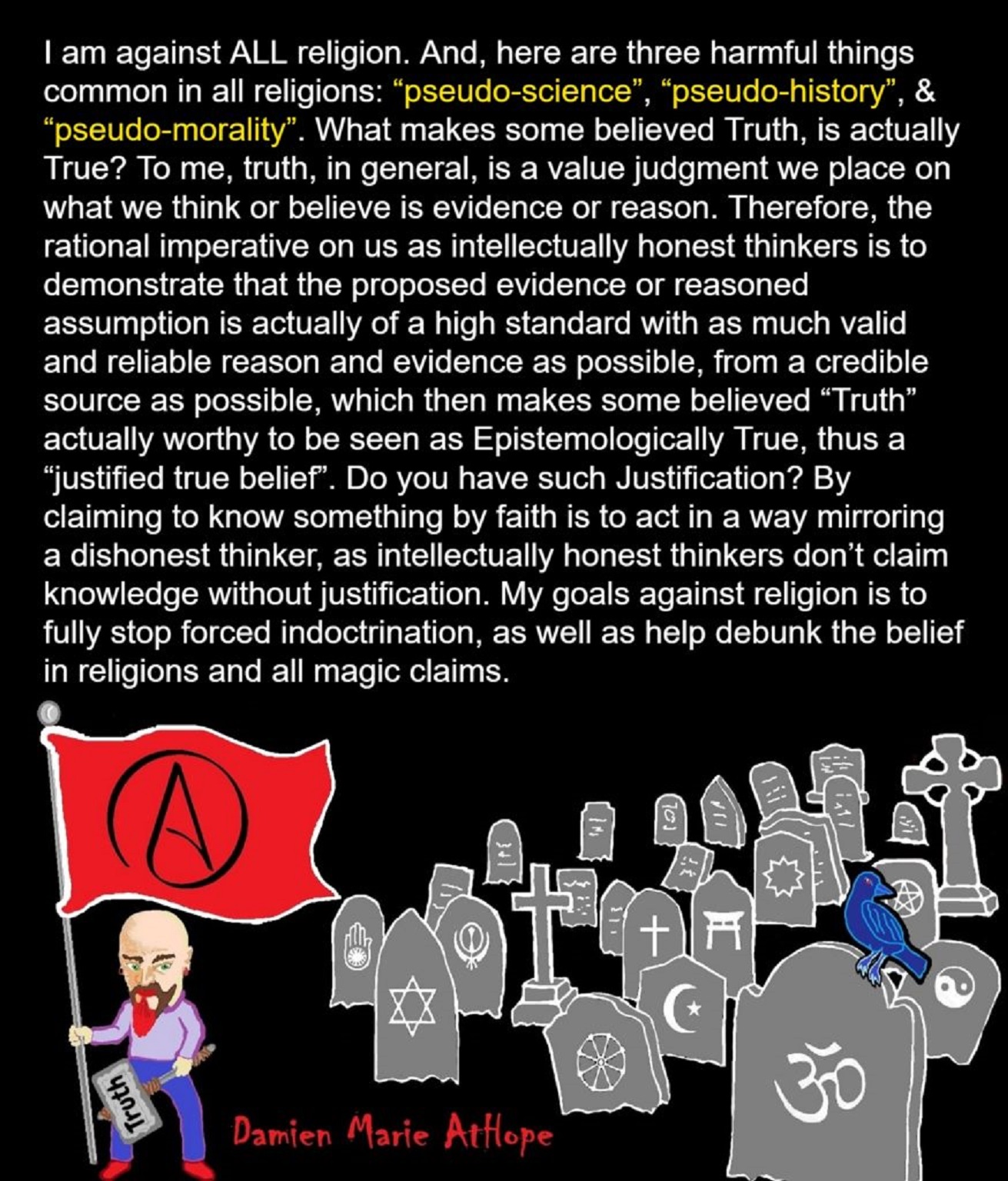

Damien Marie AtHope (Said as “At” “Hope”)/(Autodidact Polymath but not good at math):
Axiological Atheist, Anti-theist, Anti-religionist, Secular Humanist, Rationalist, Writer, Artist, Jeweler, Poet, “autodidact” Philosopher, schooled in Psychology, and “autodidact” Armchair Archaeology/Anthropology/Pre-Historian (Knowledgeable in the range of: 1 million to 5,000/4,000 years ago). I am an anarchist socialist politically. Reasons for or Types of Atheism
My Website, My Blog, & Short-writing or Quotes, My YouTube, Twitter: @AthopeMarie, and My Email: damien.marie.athope@gmail.com

